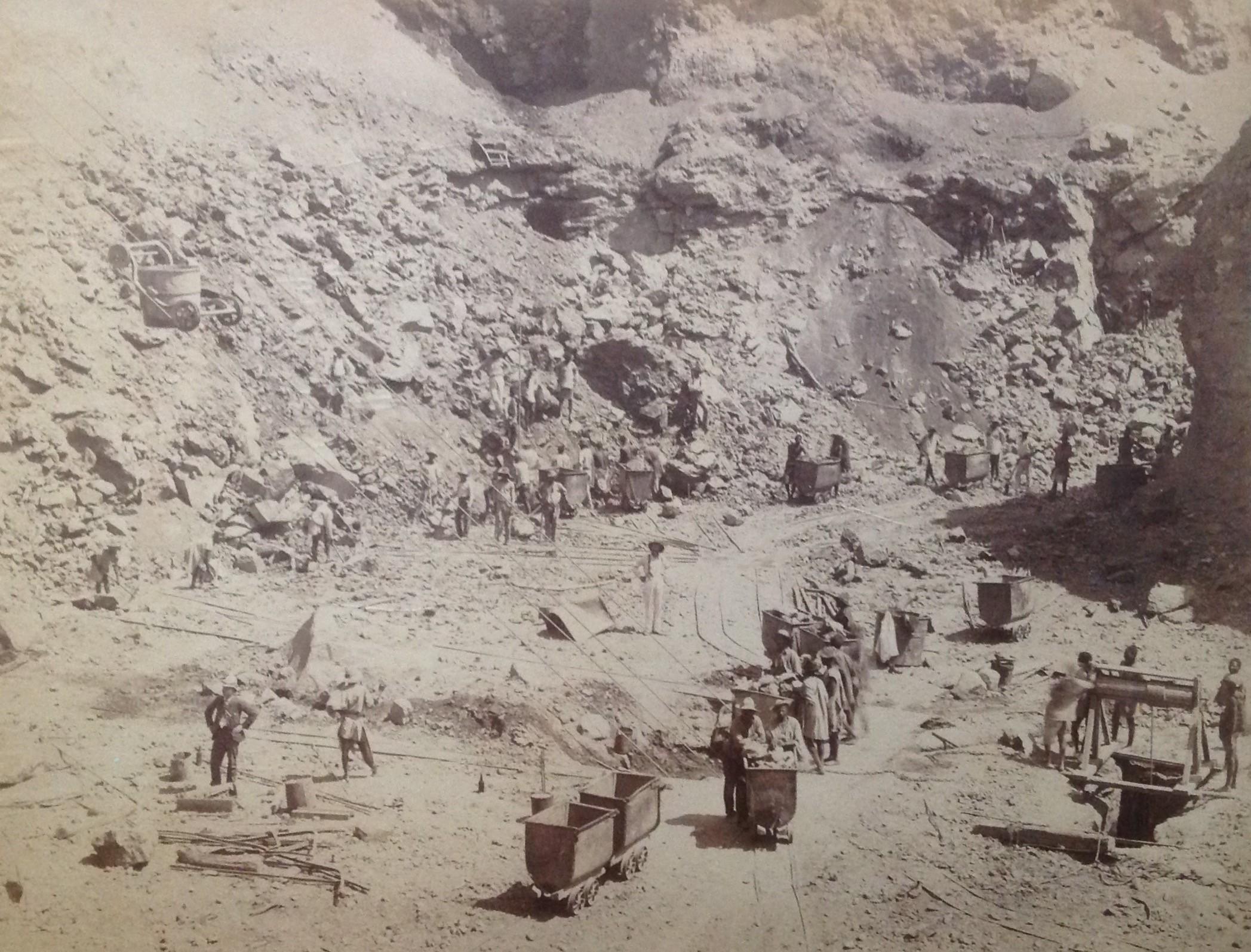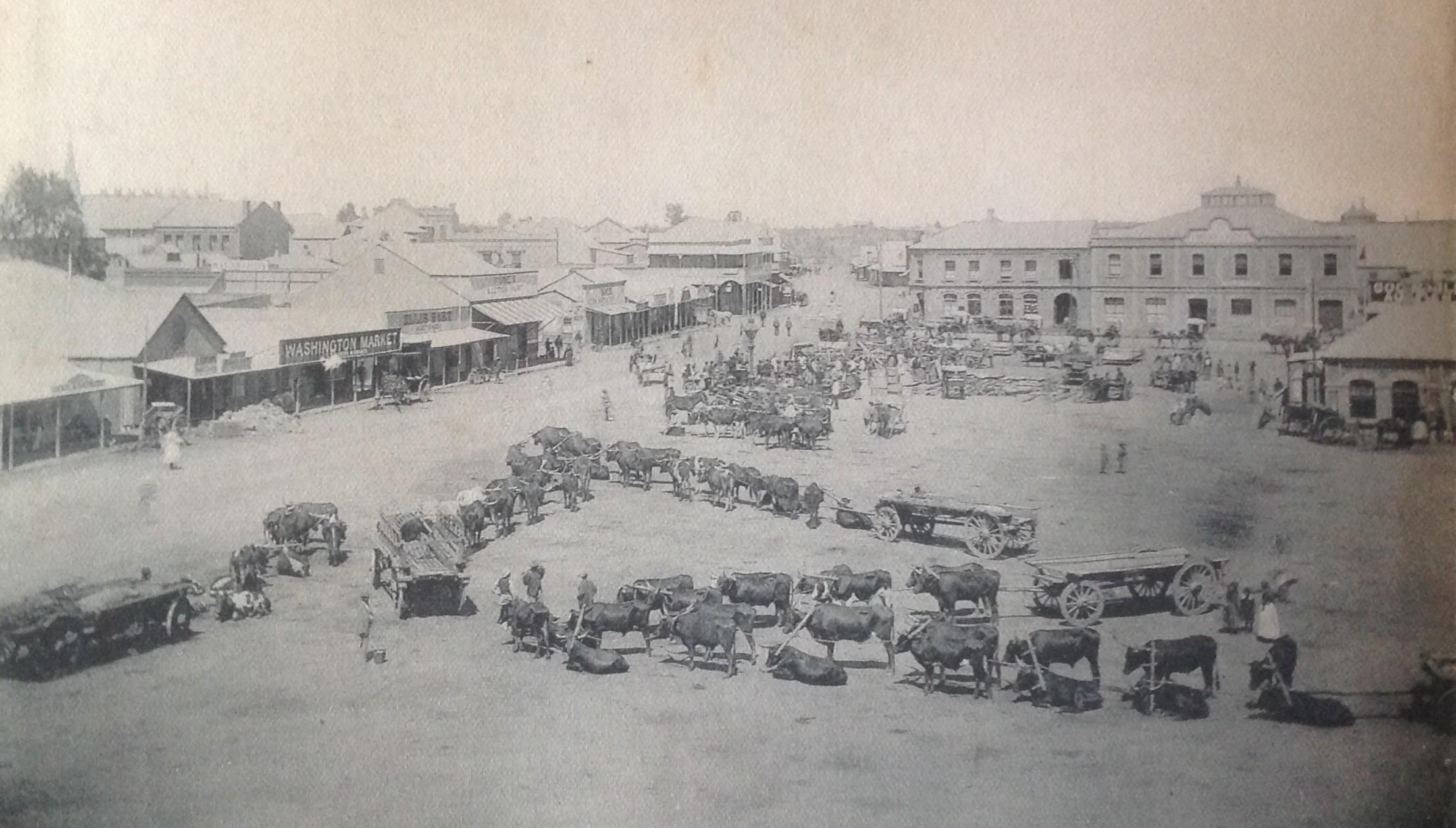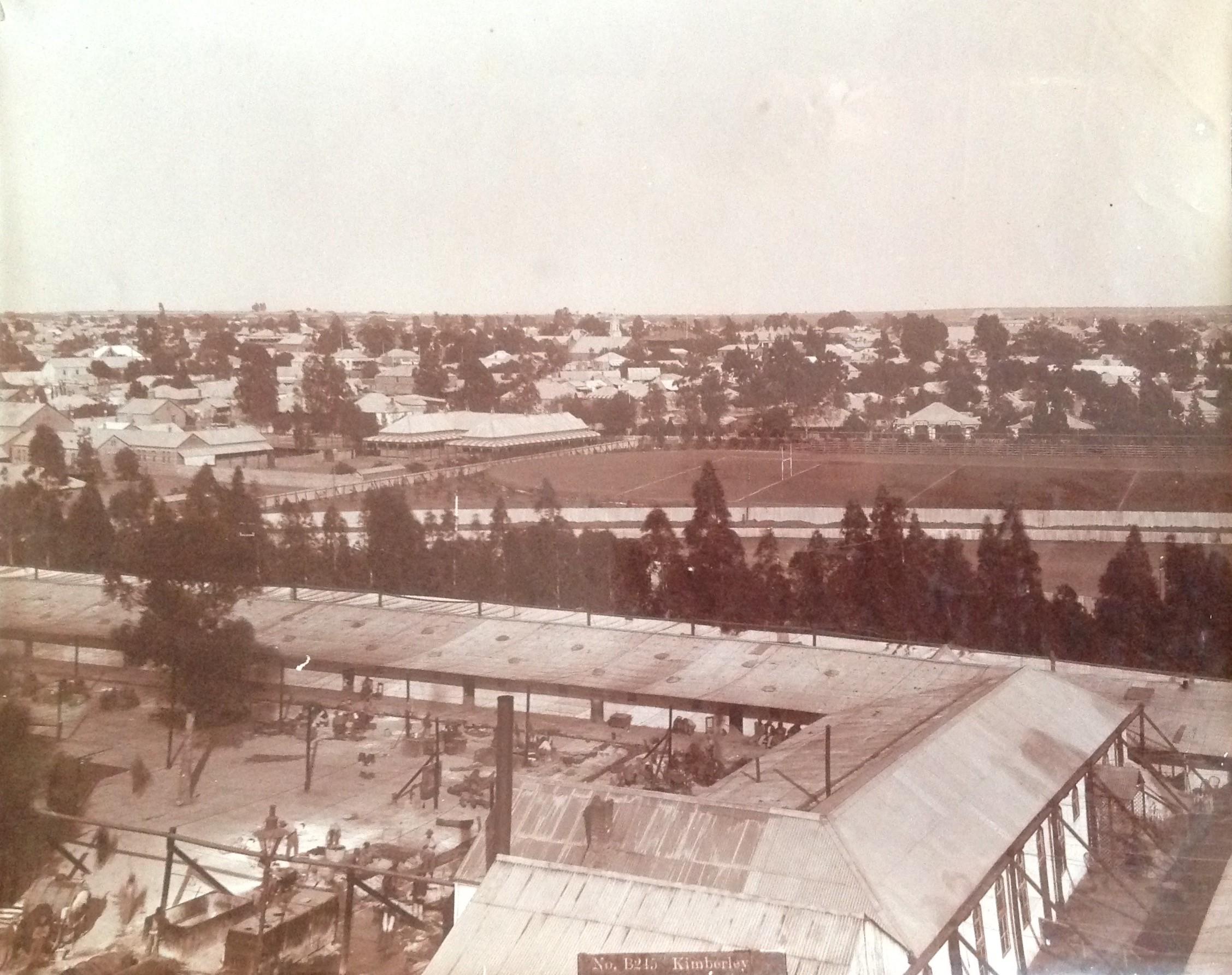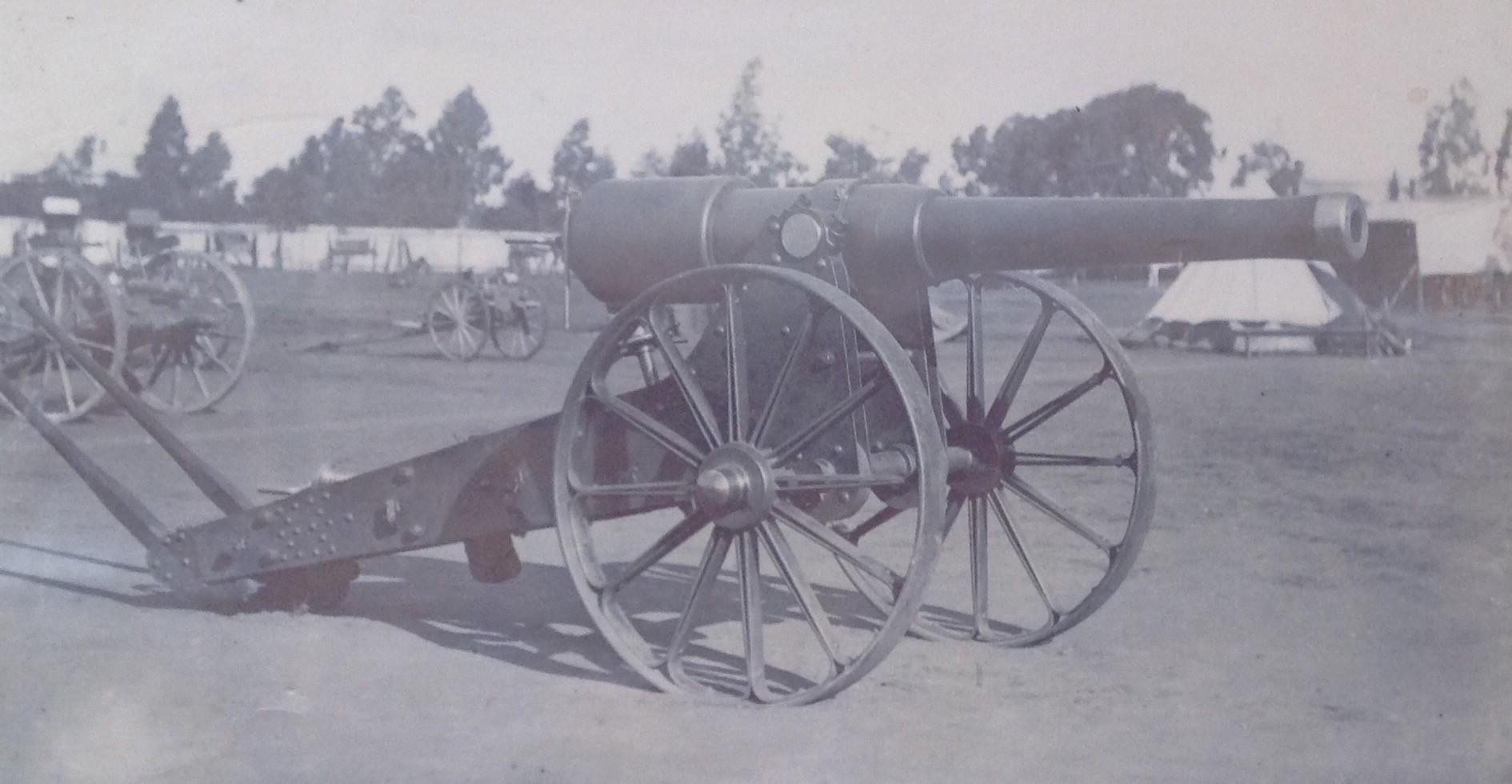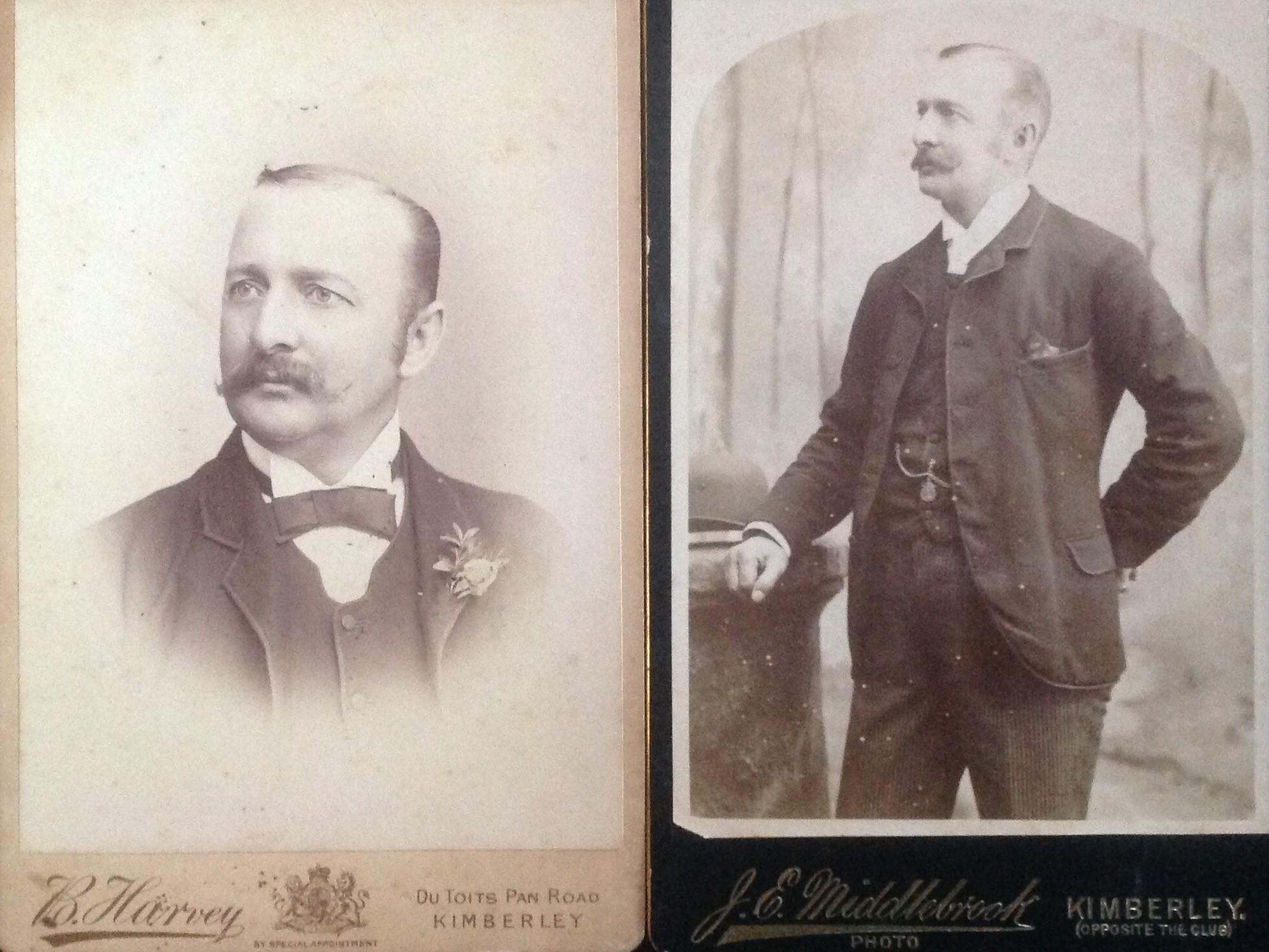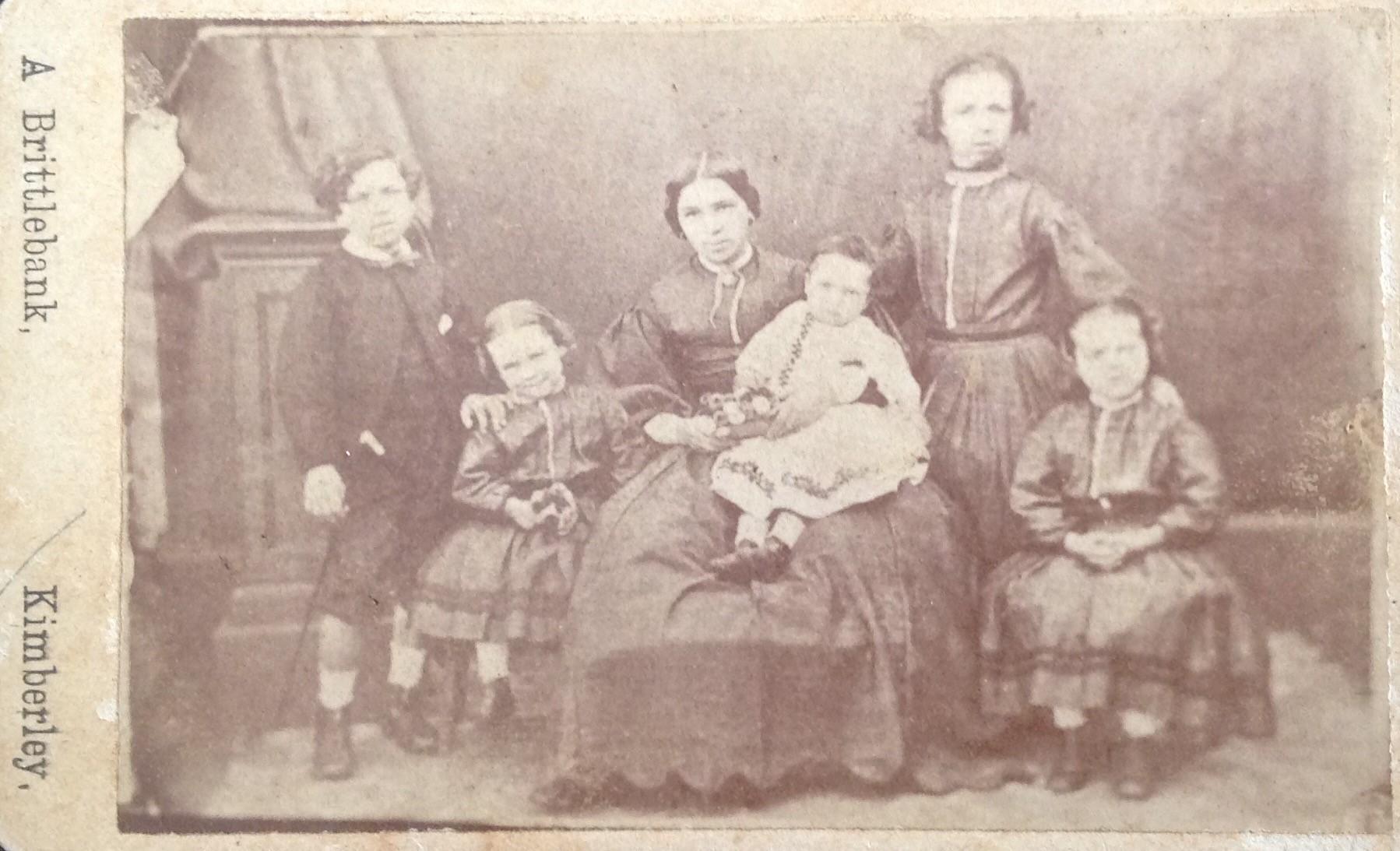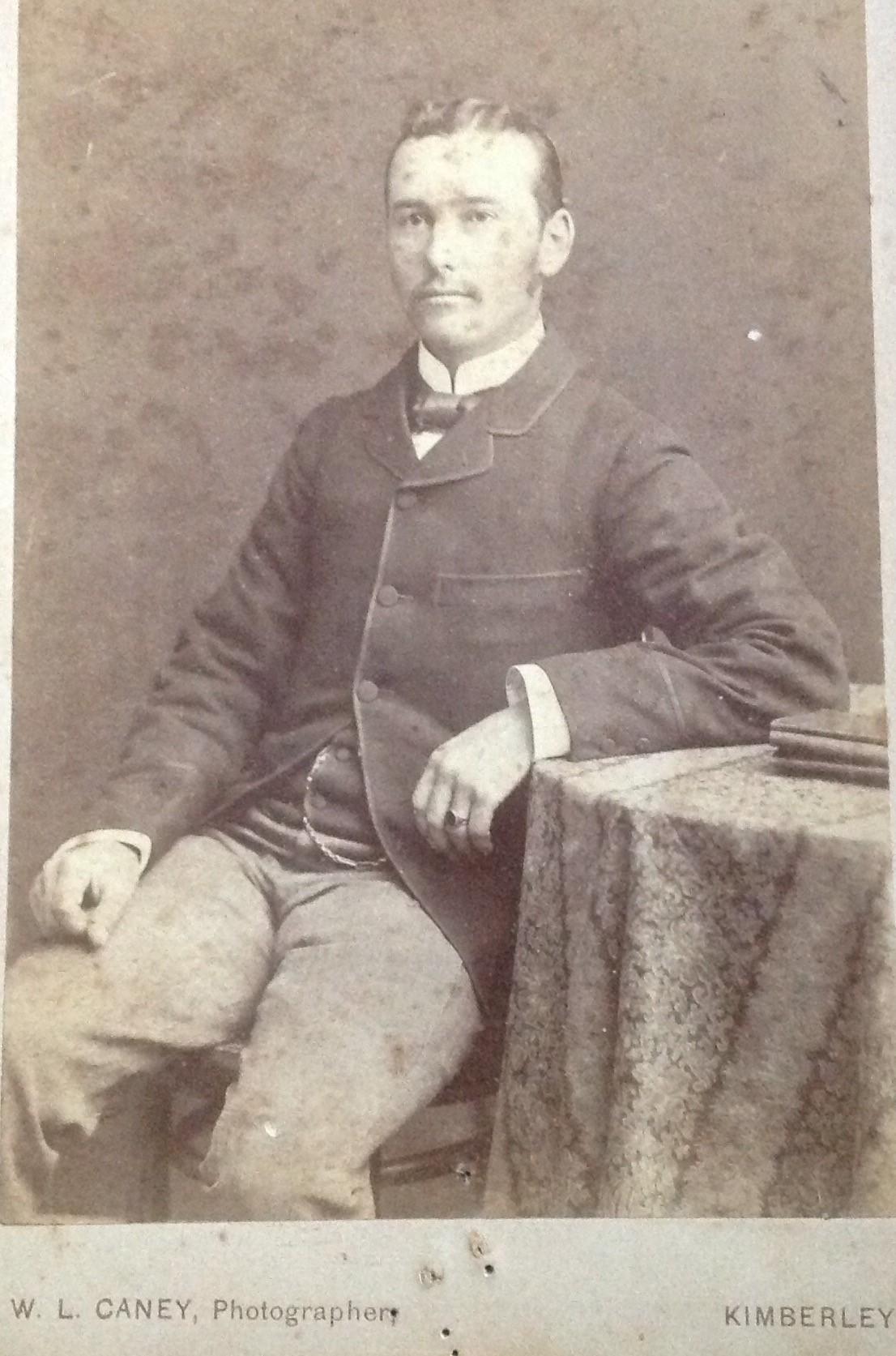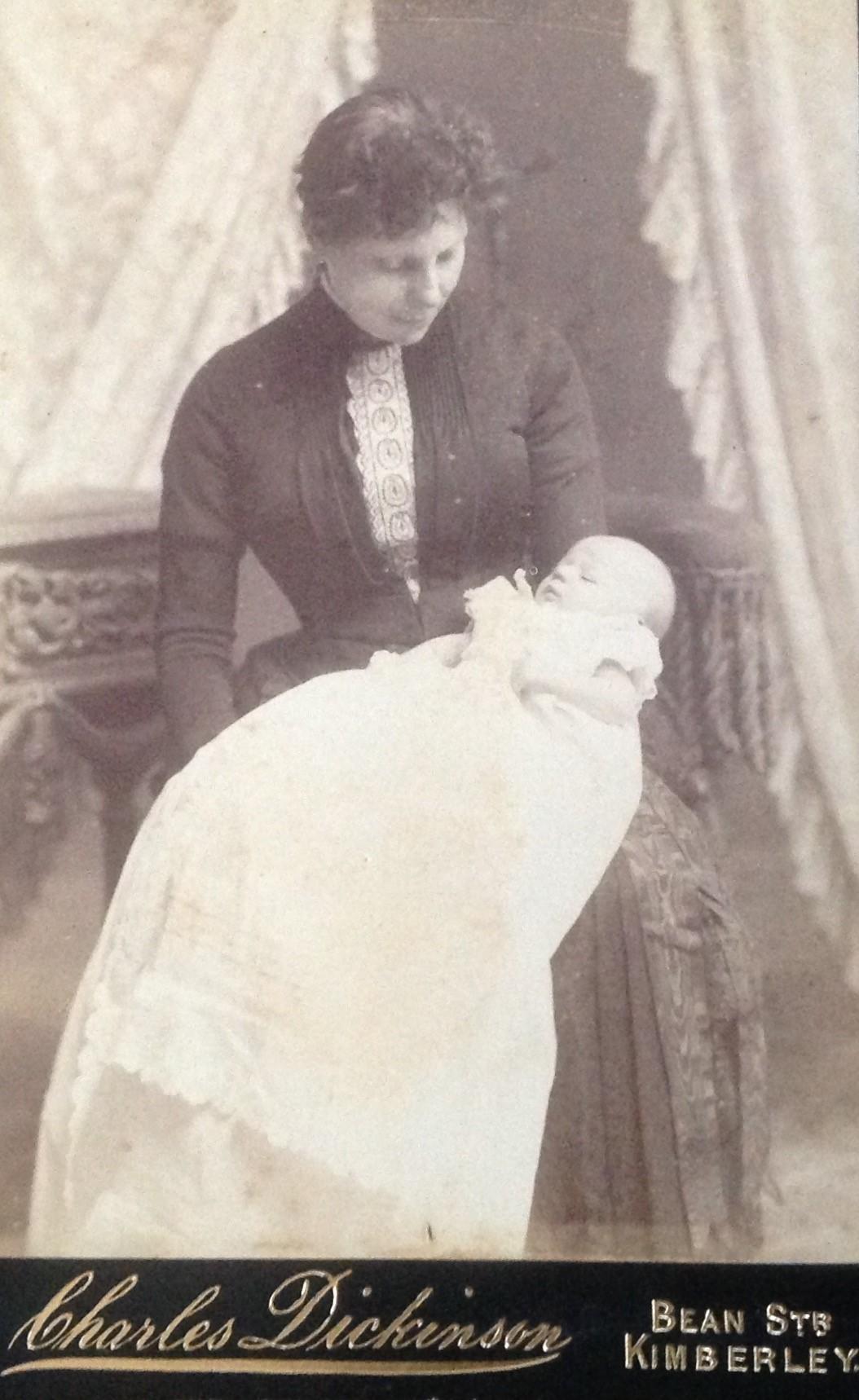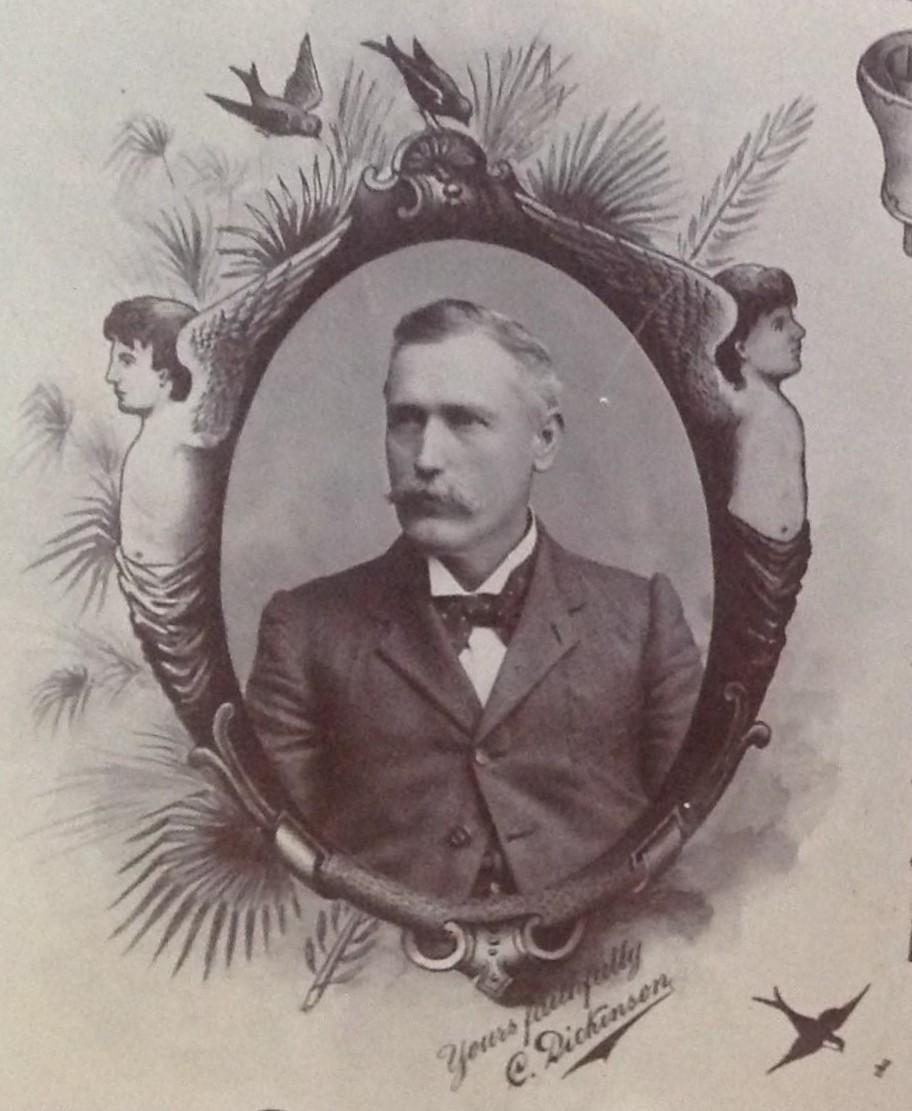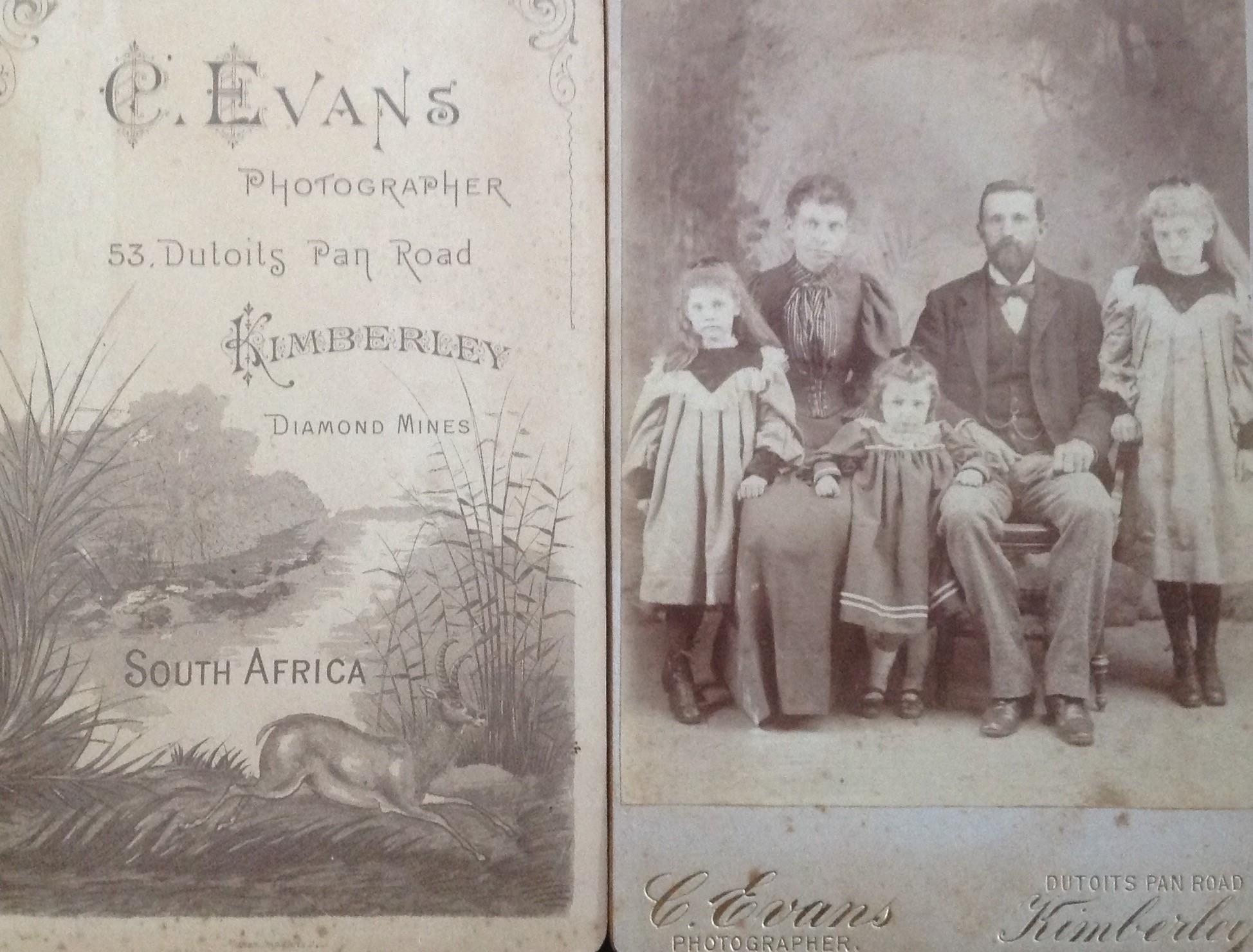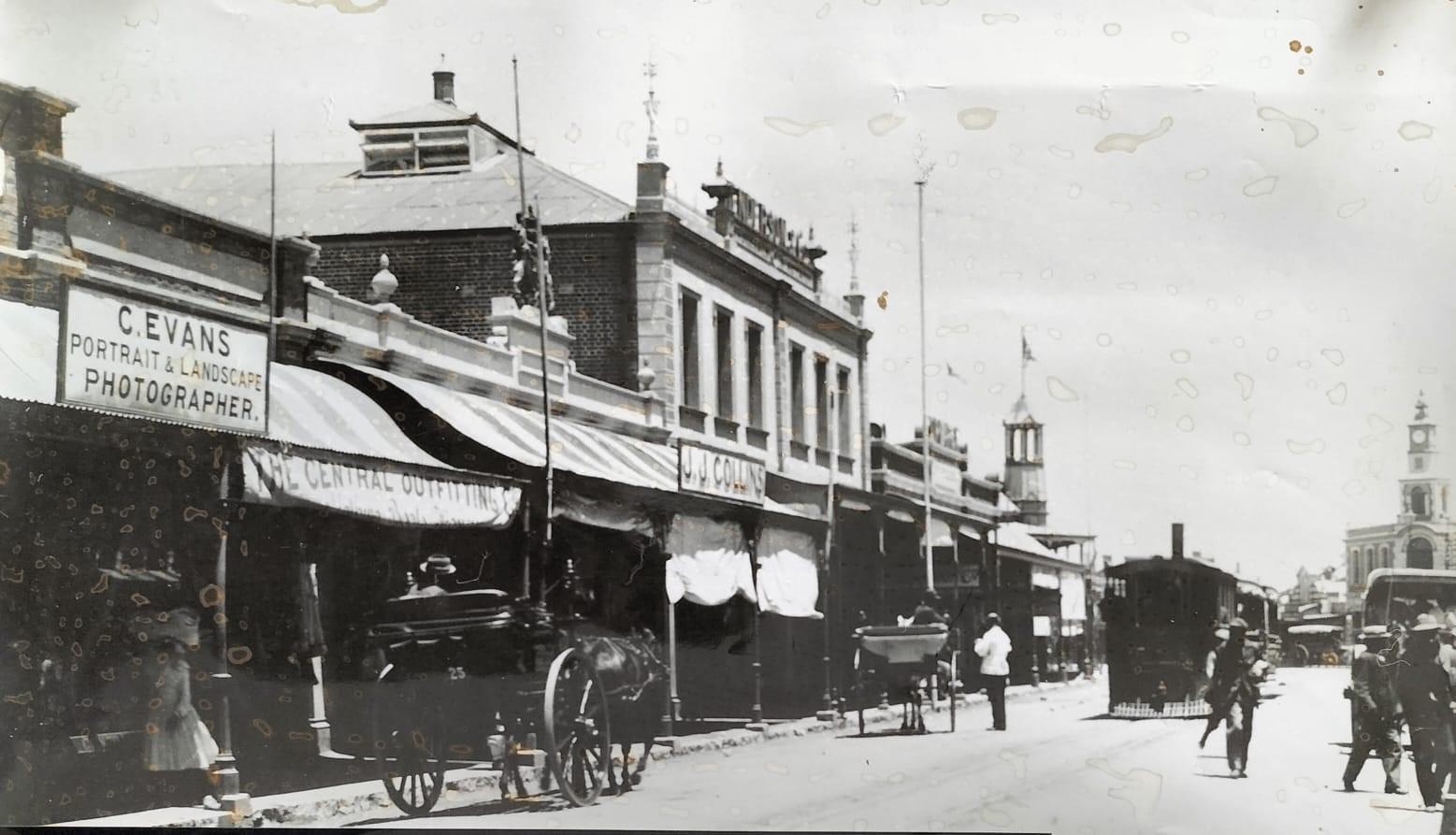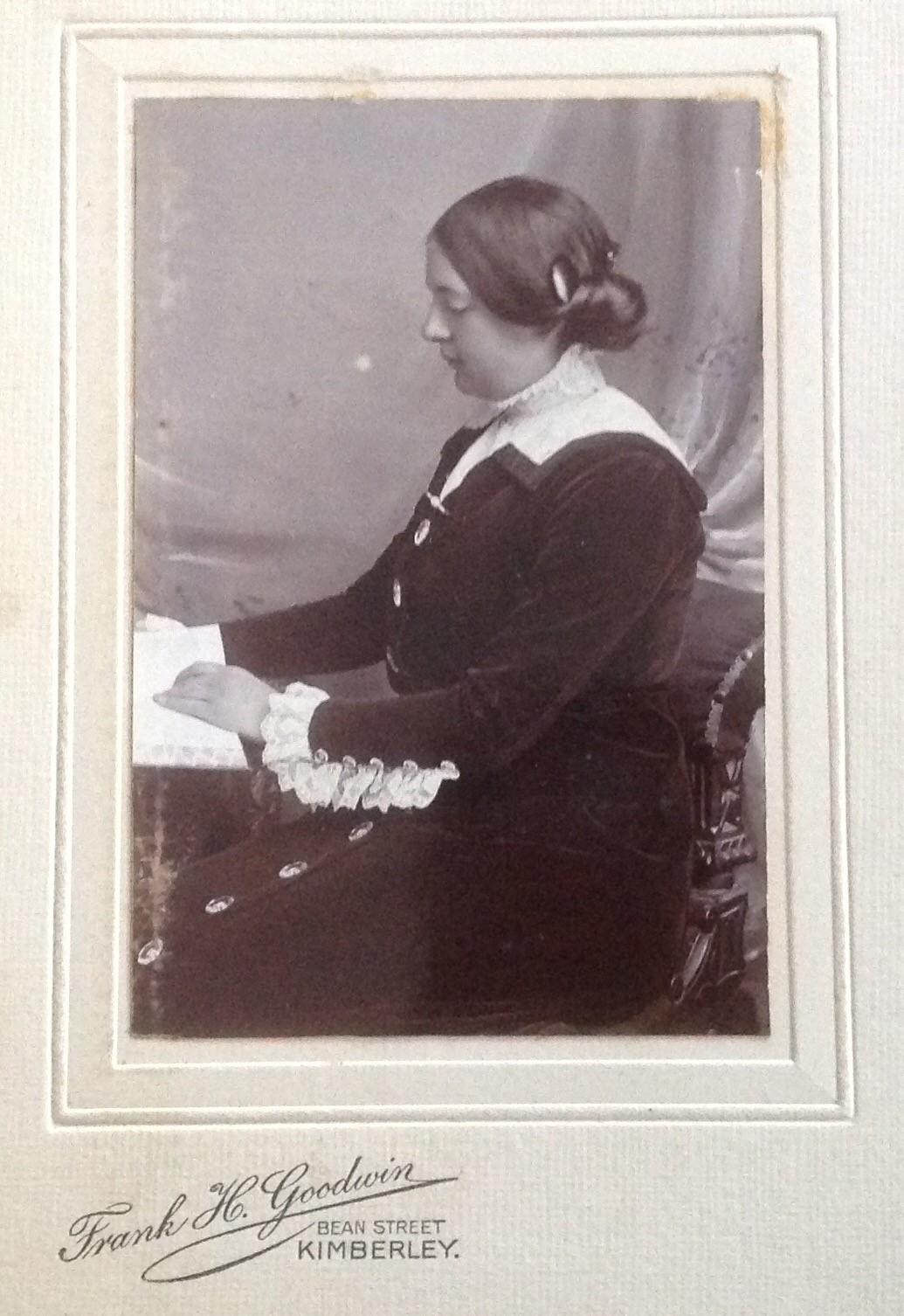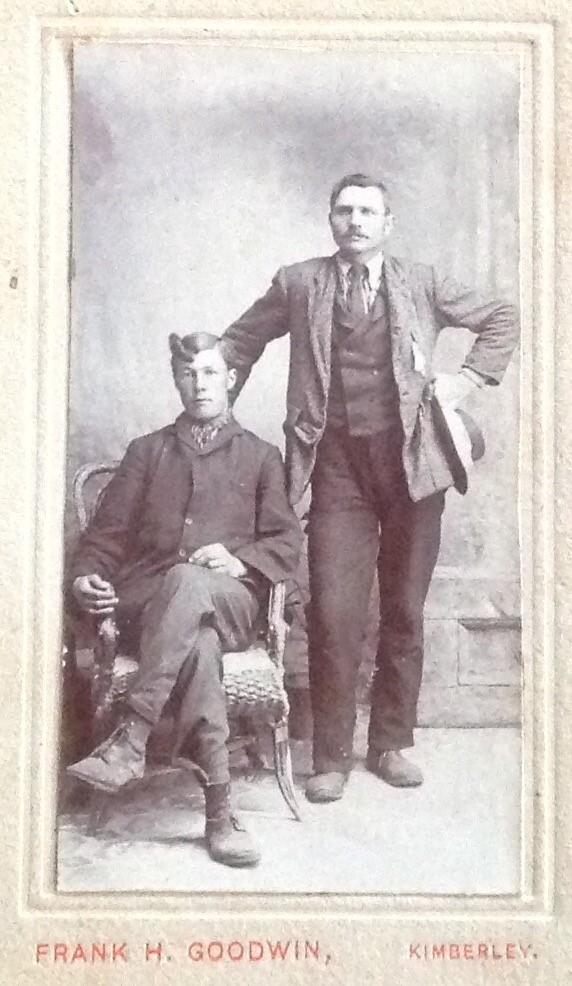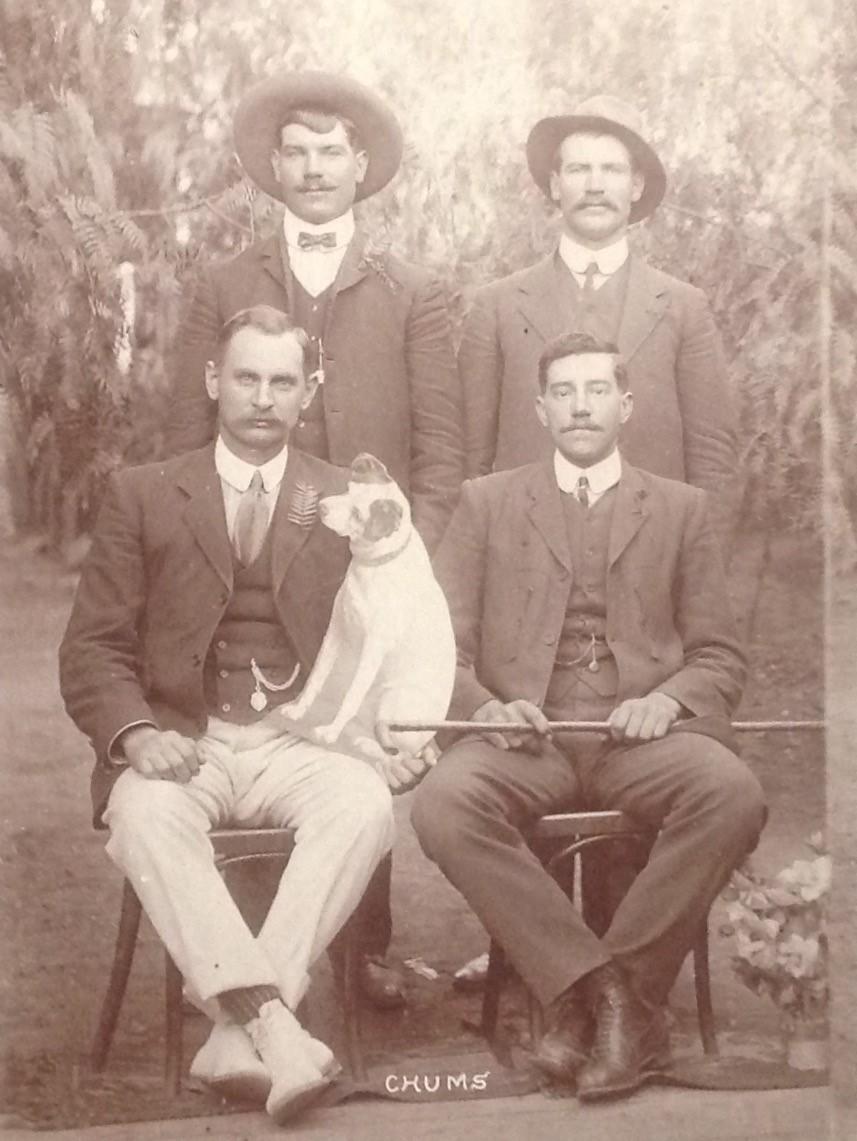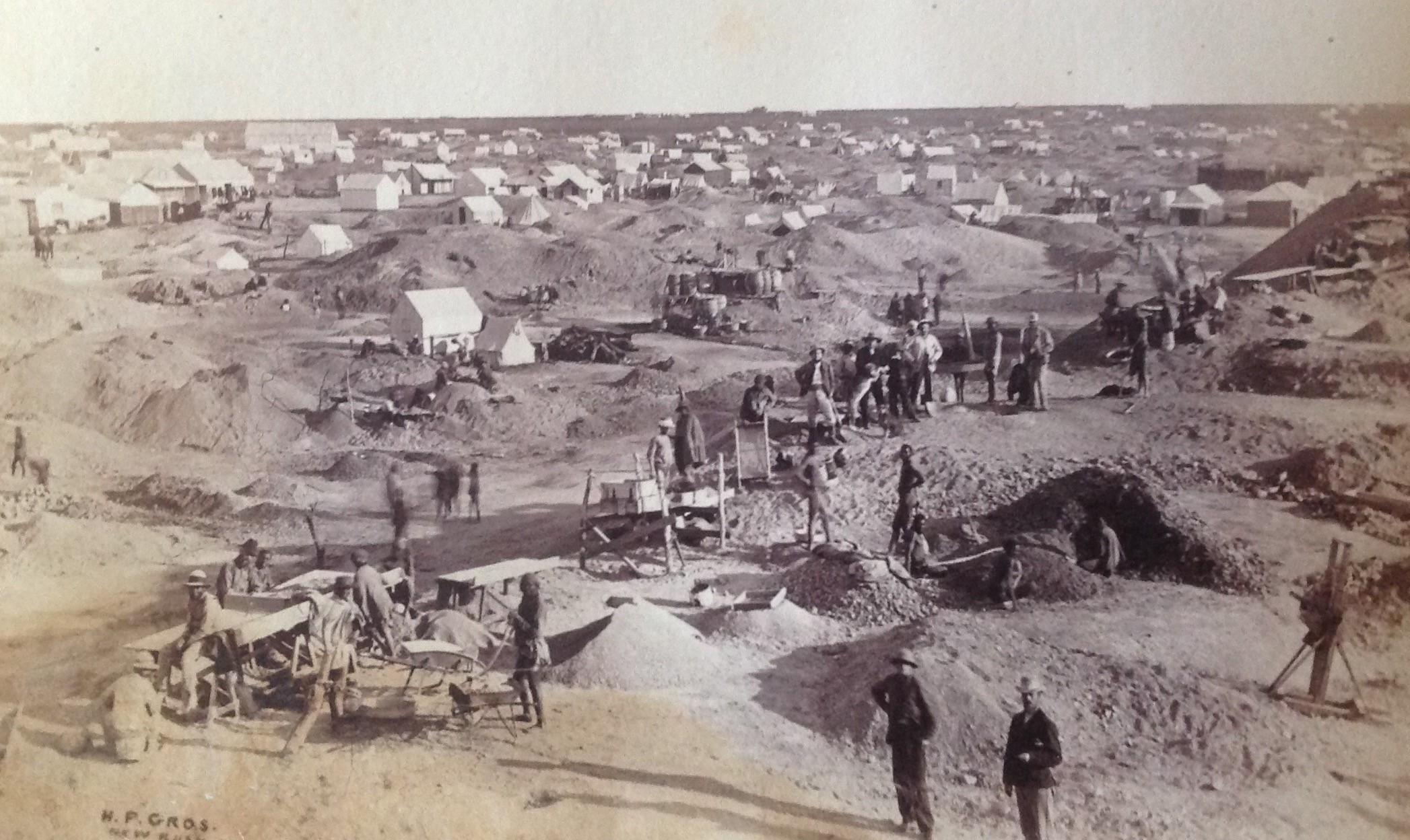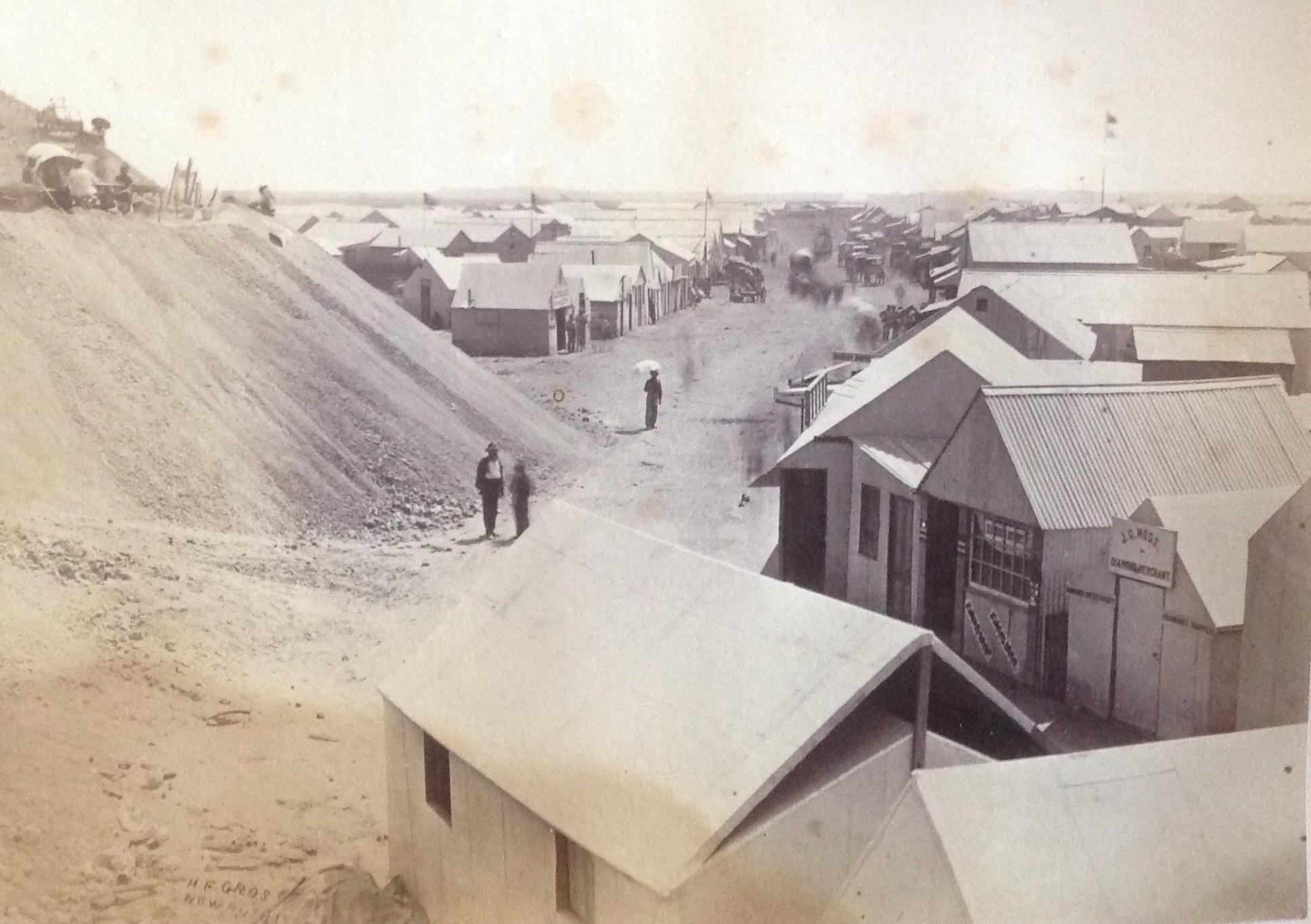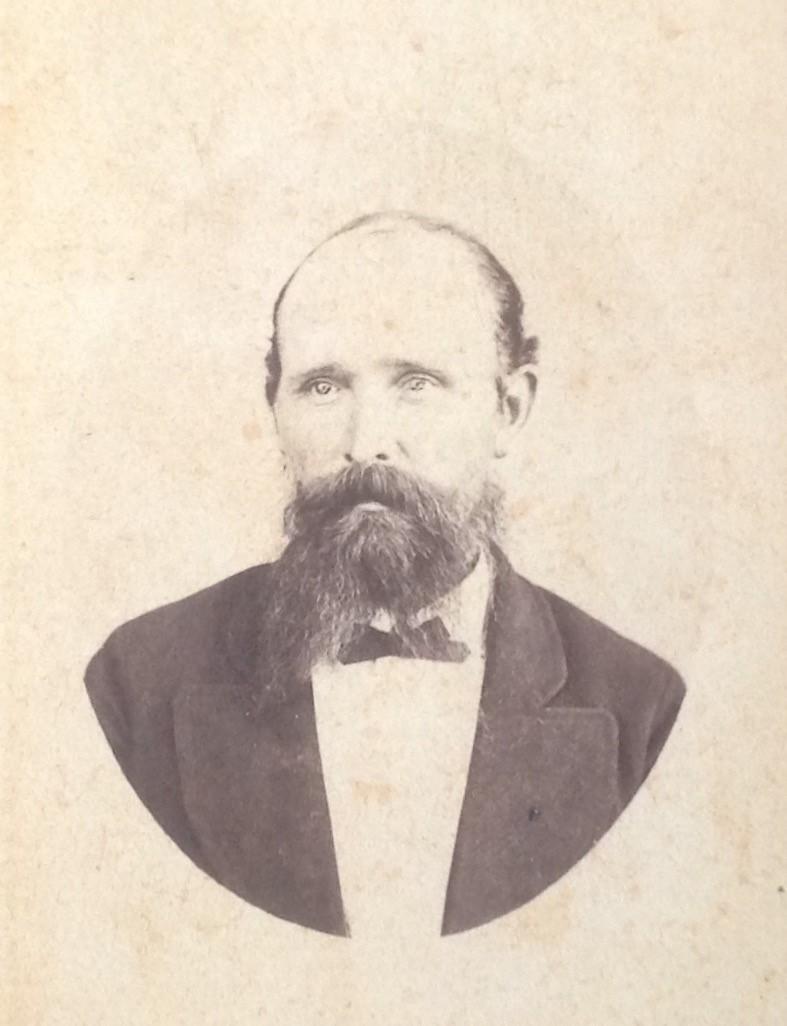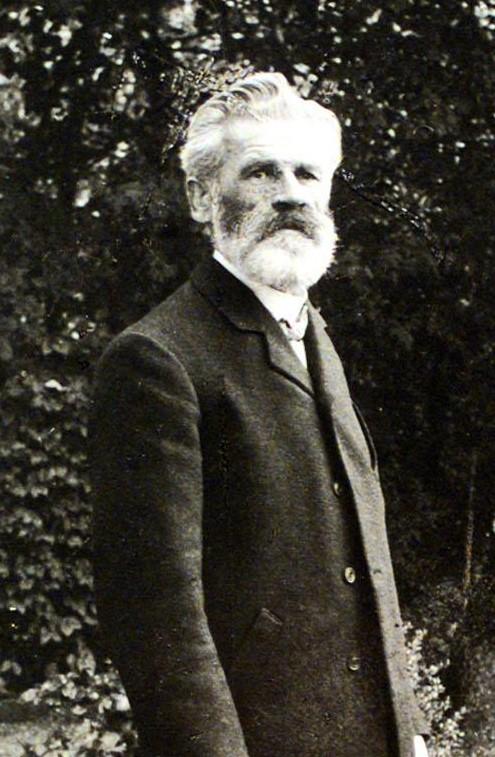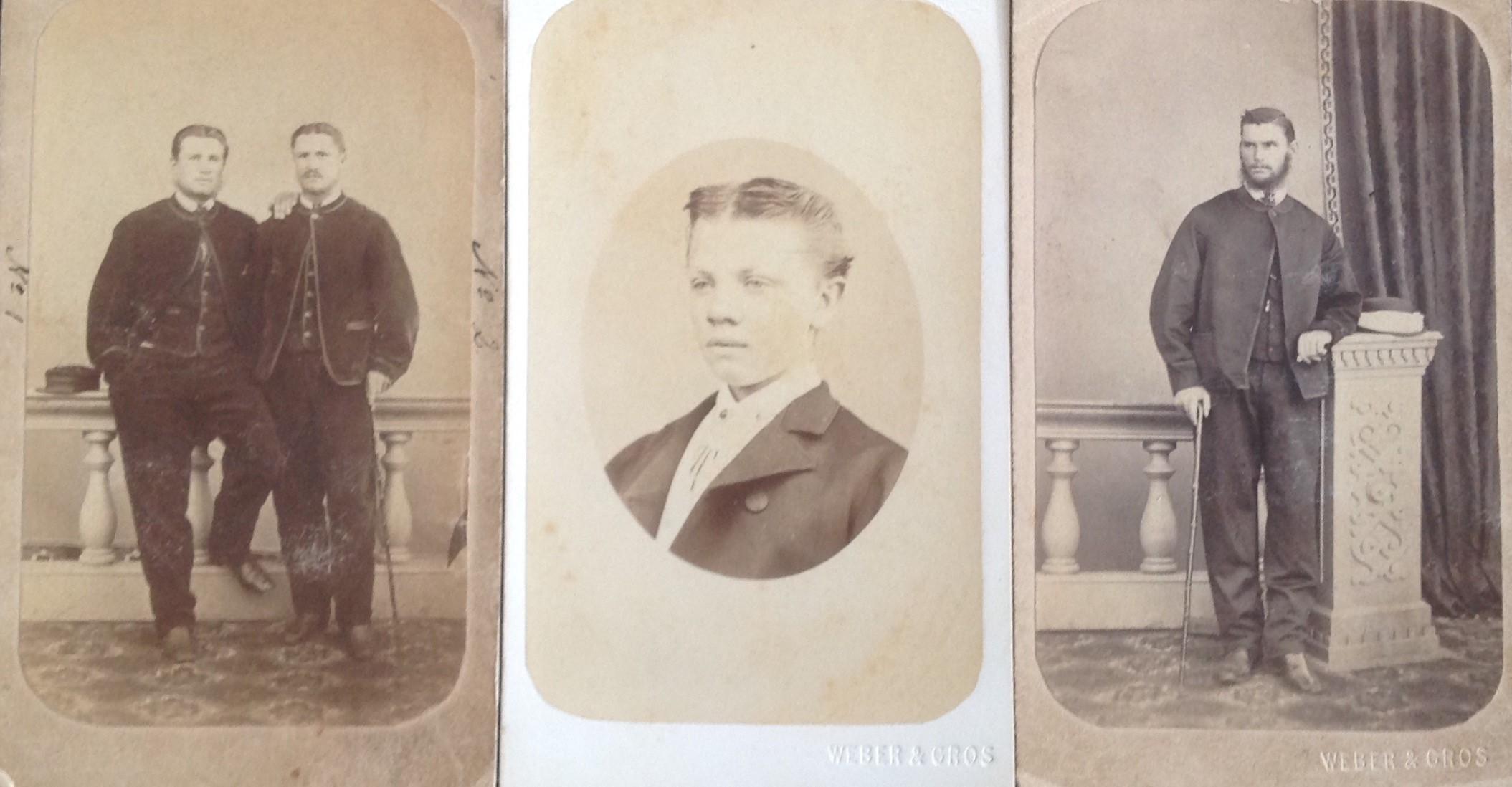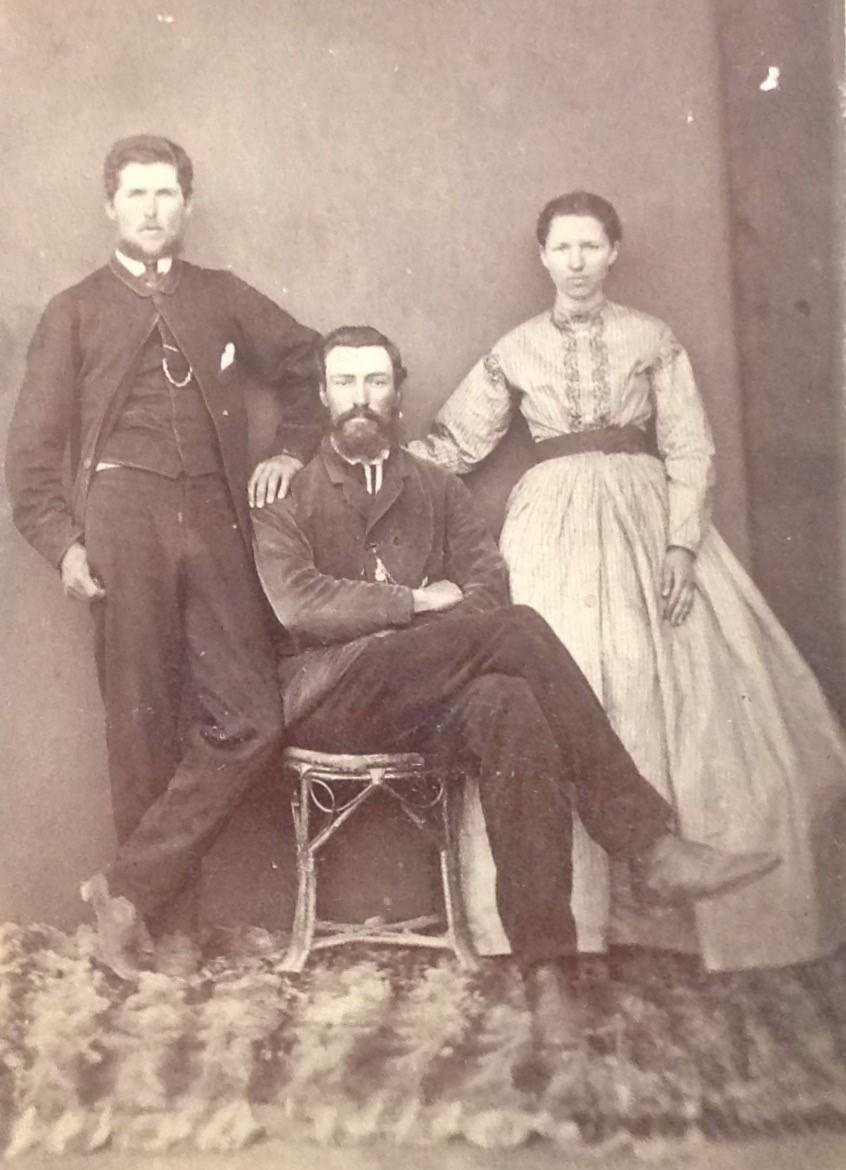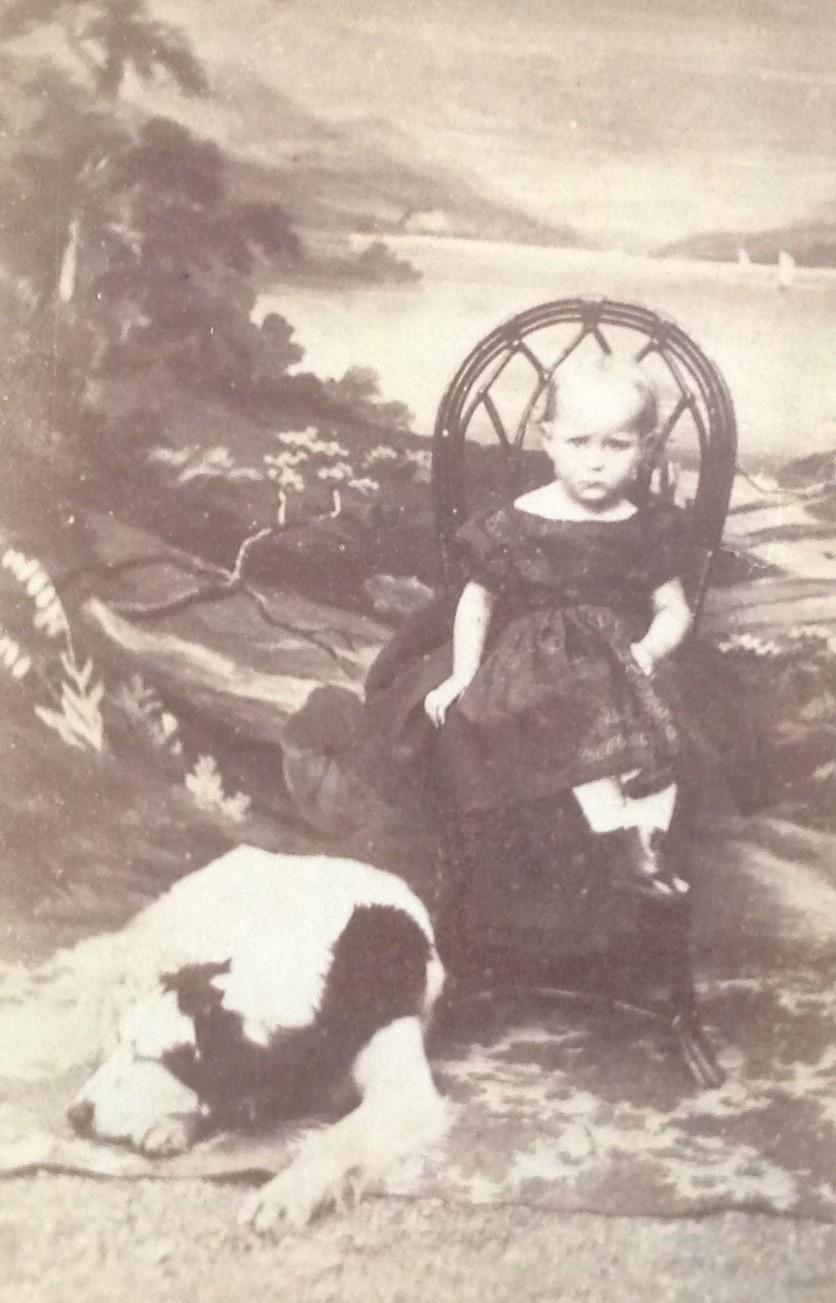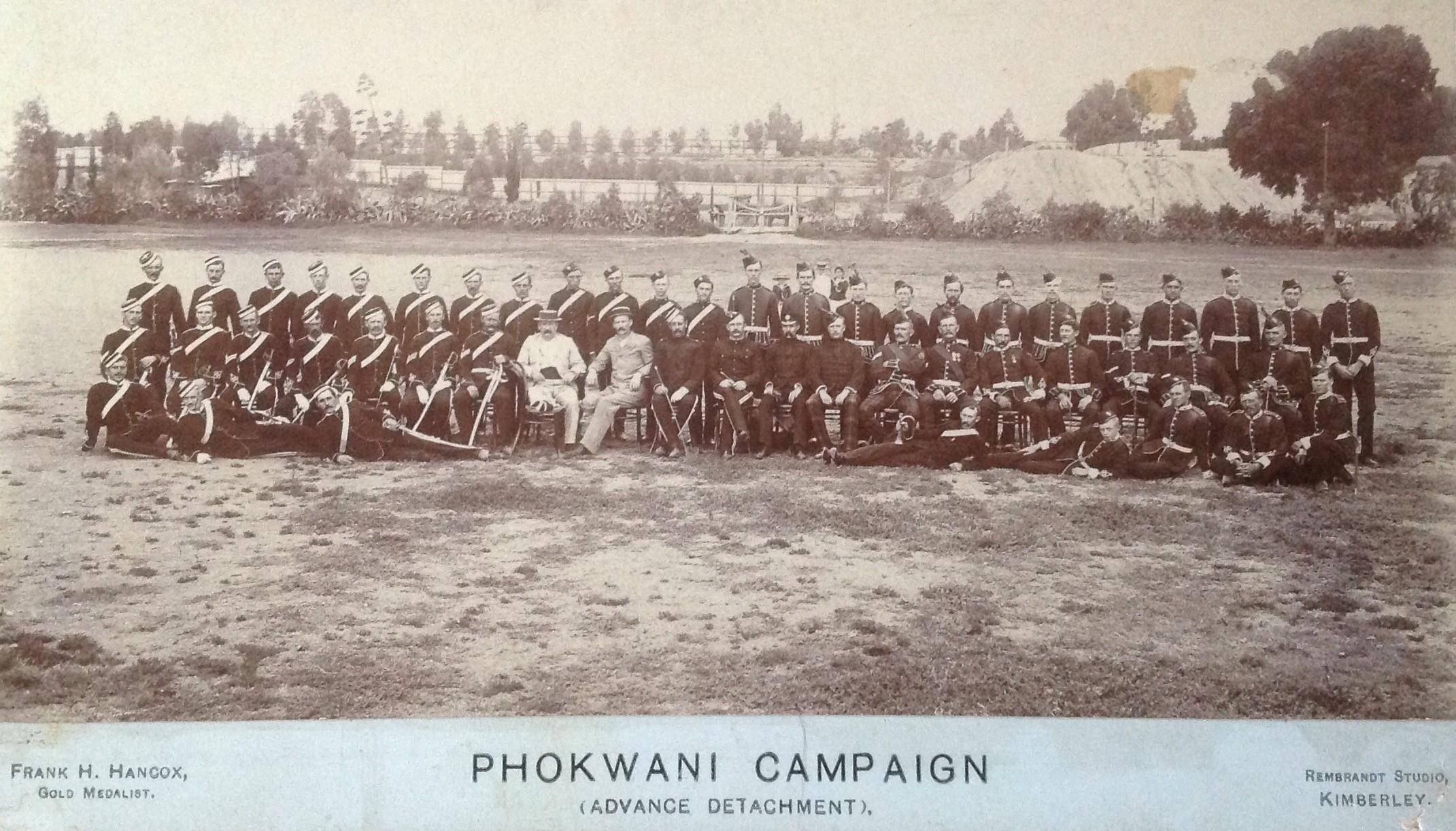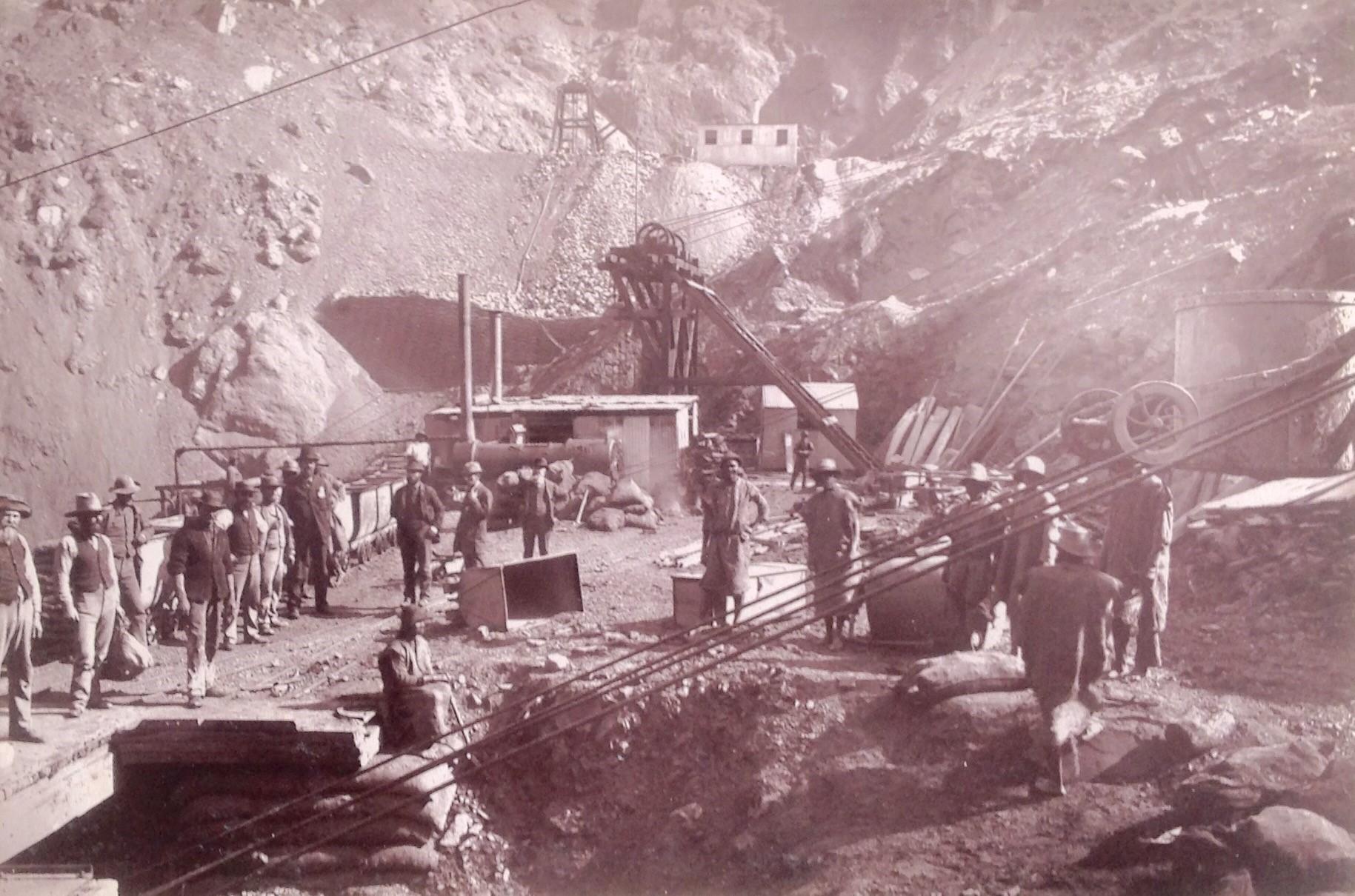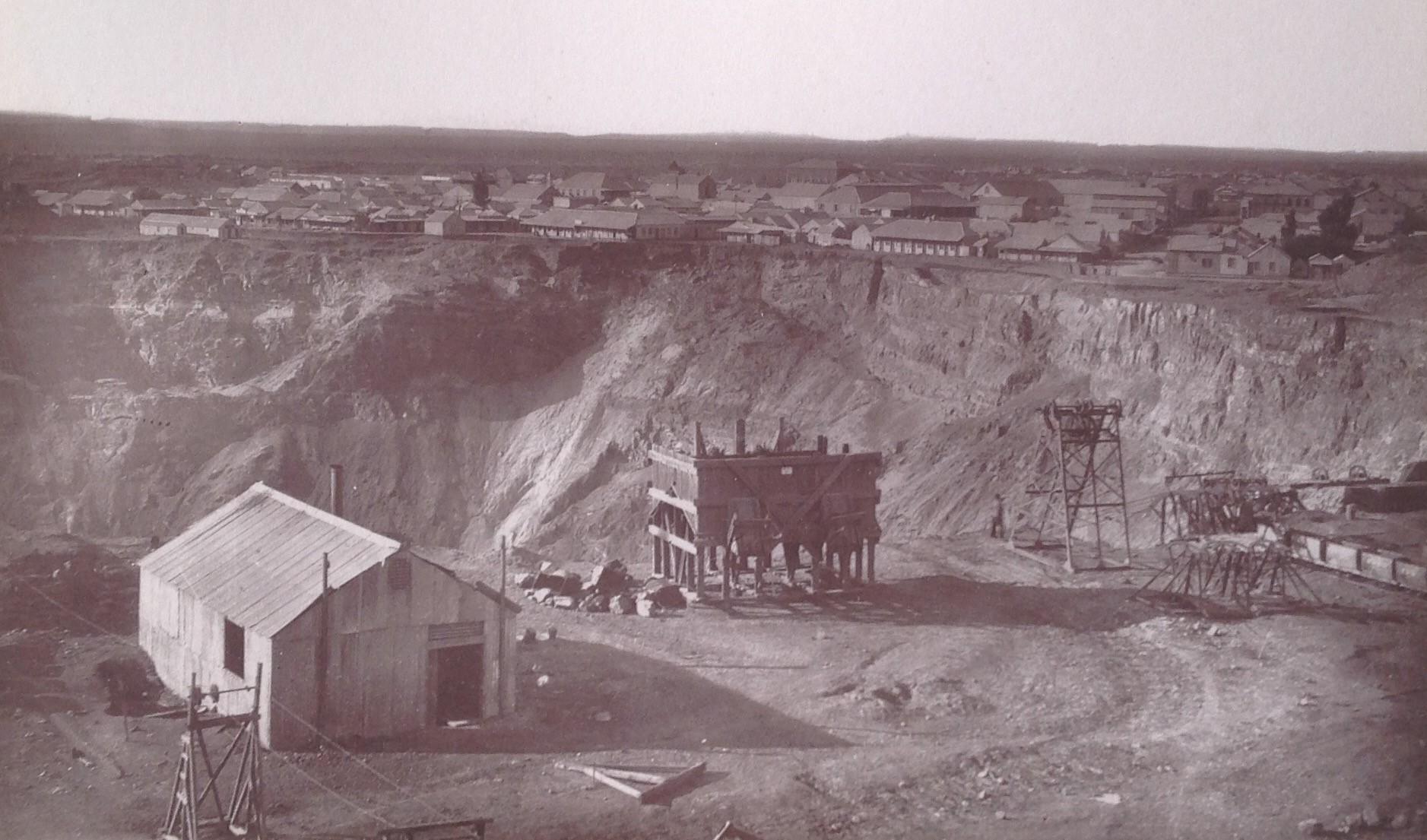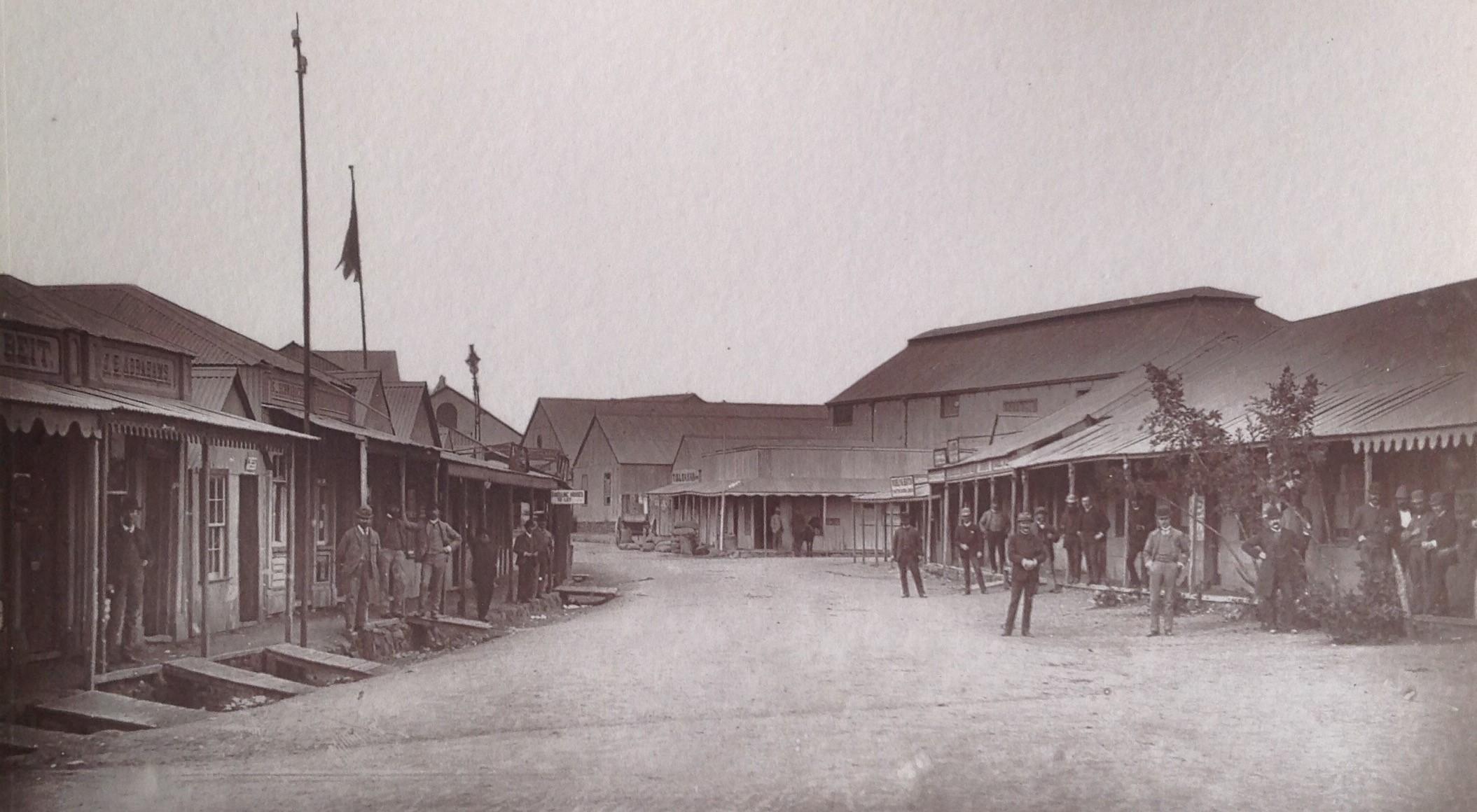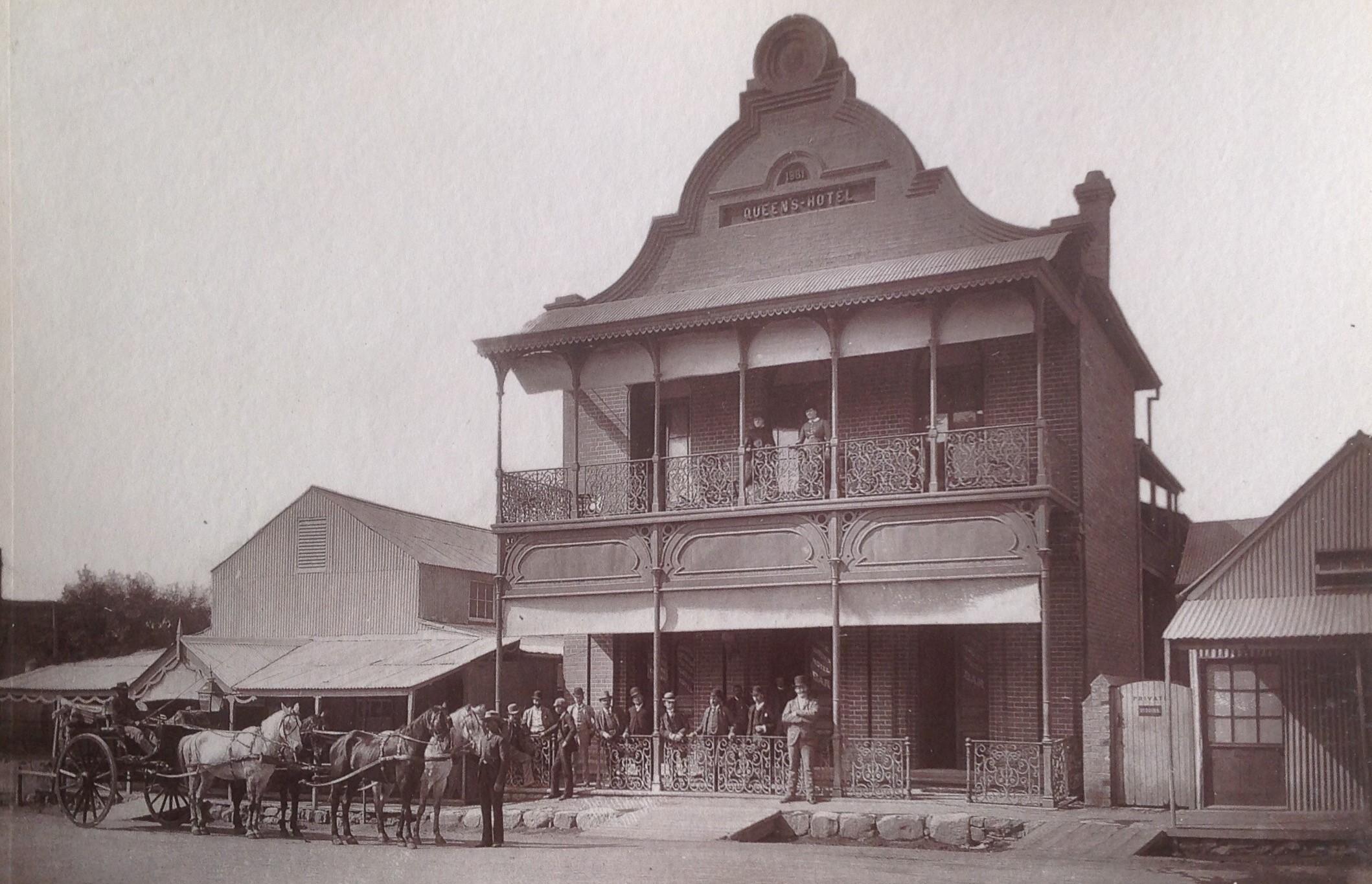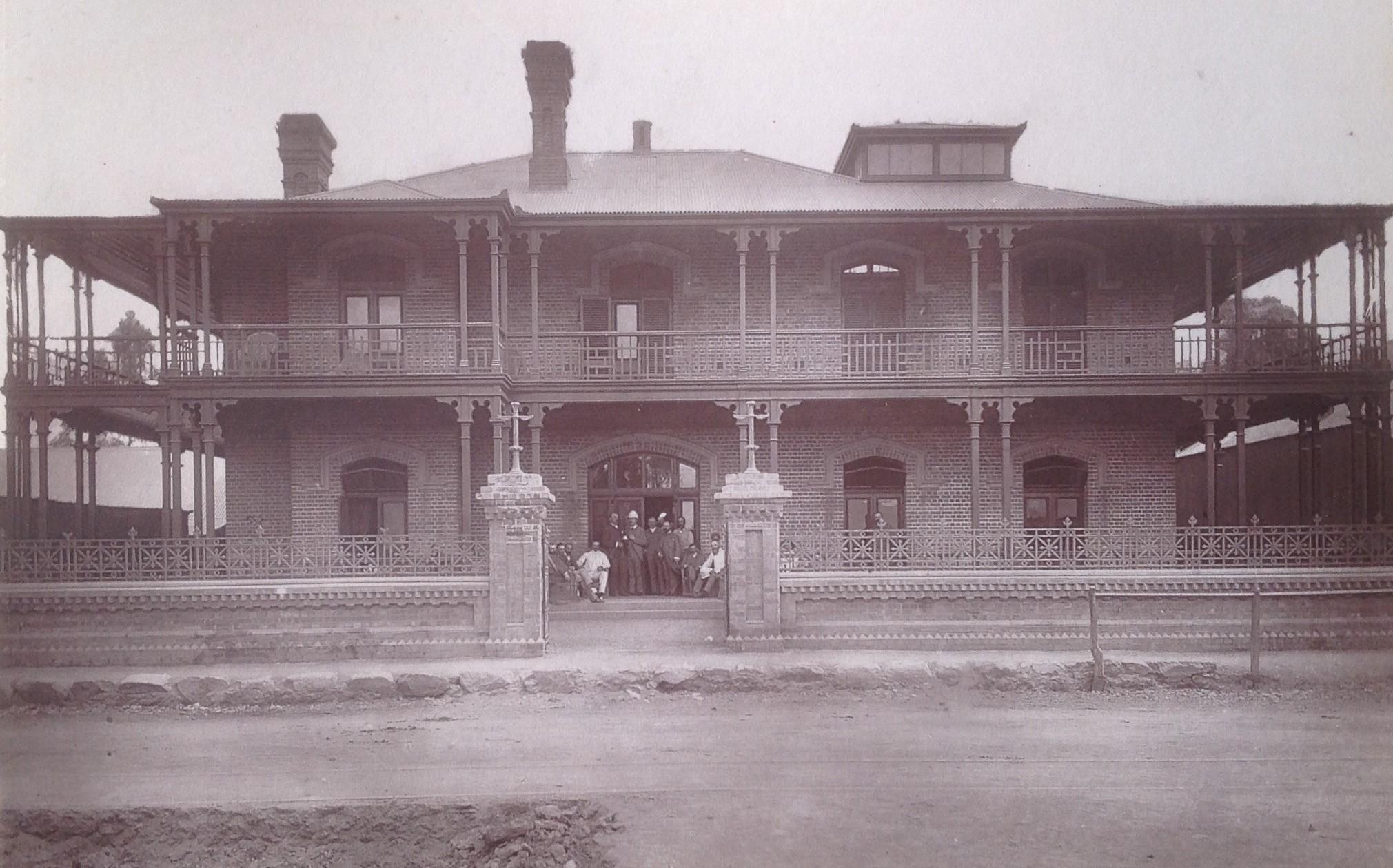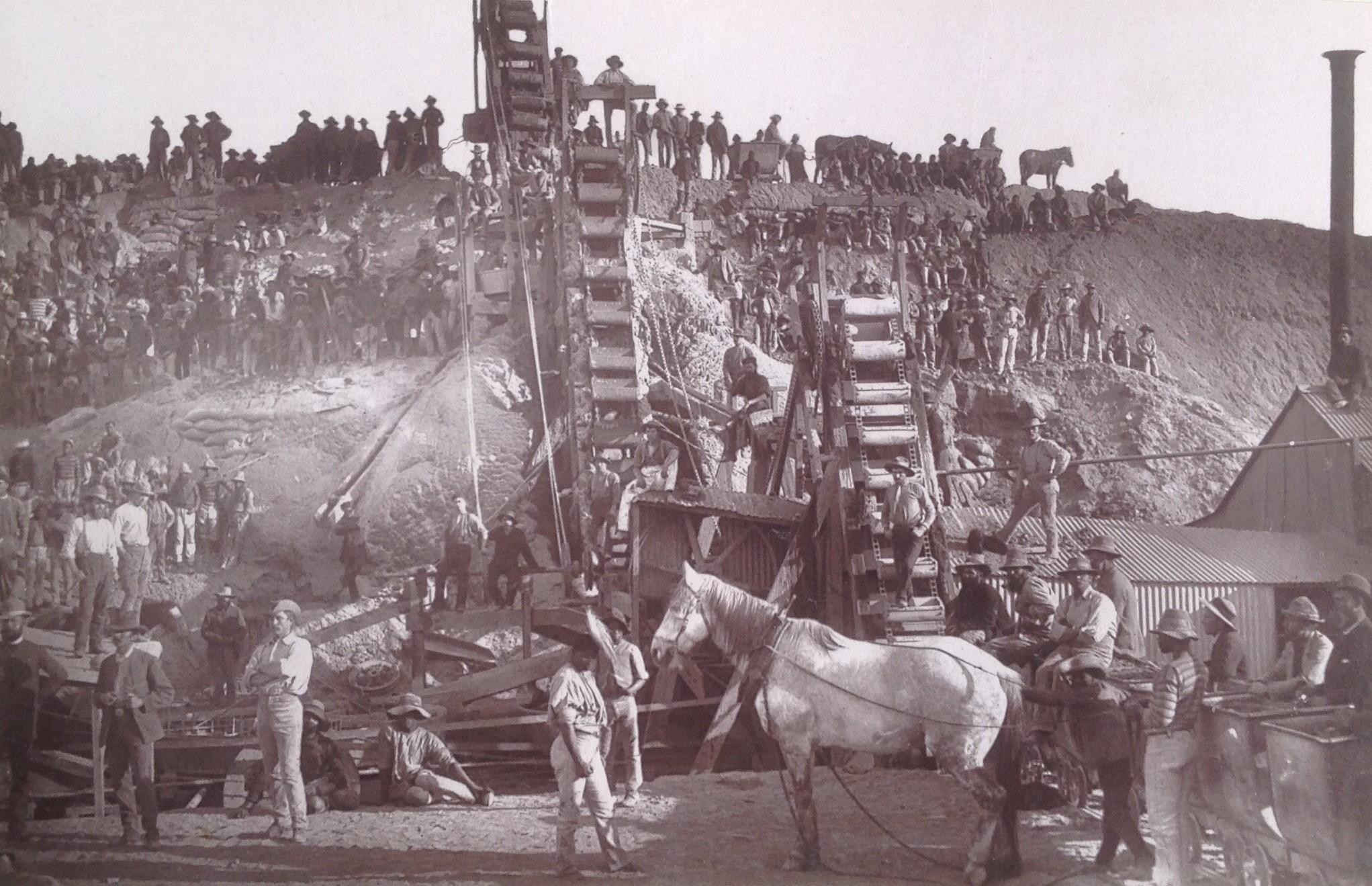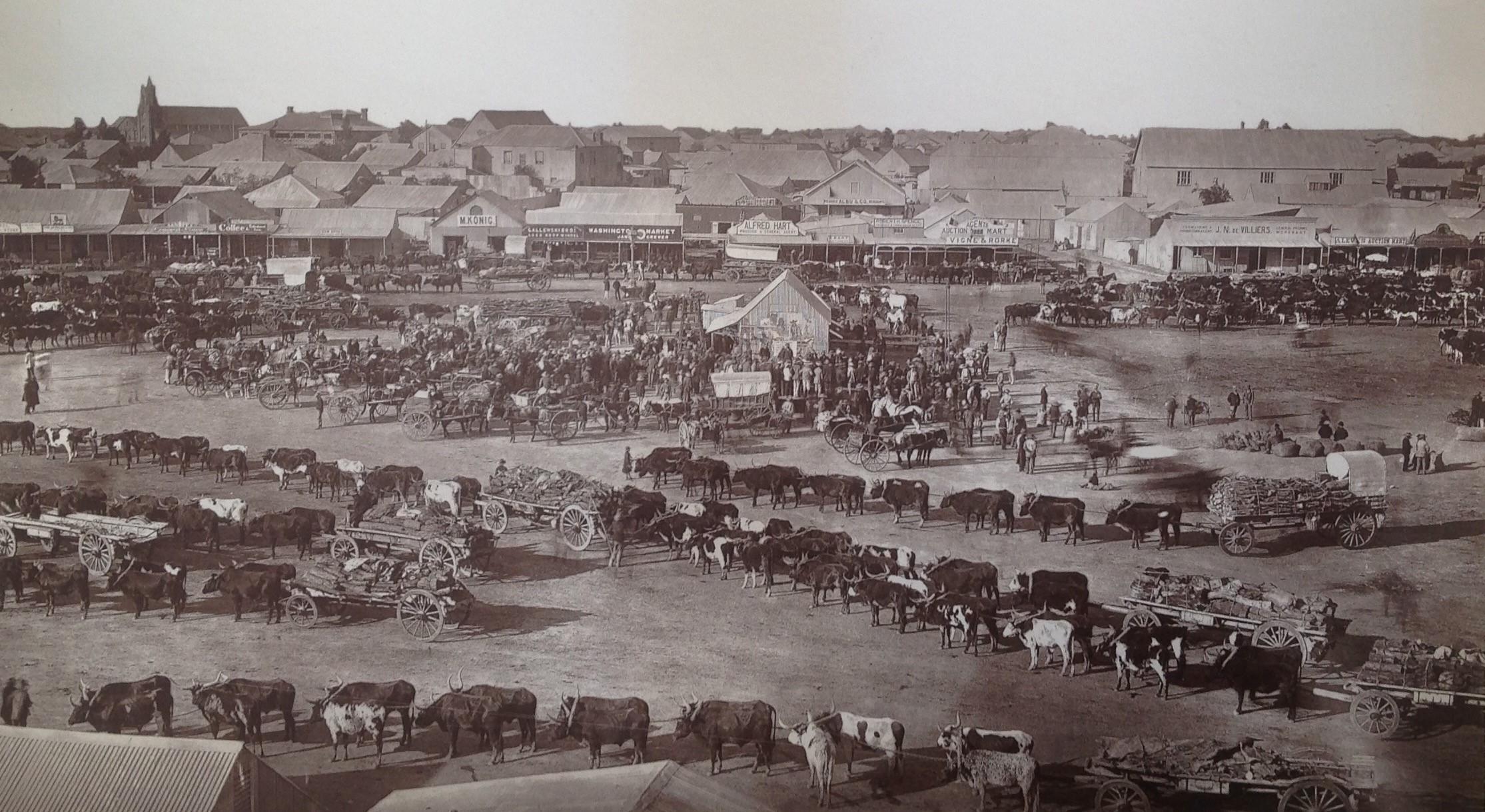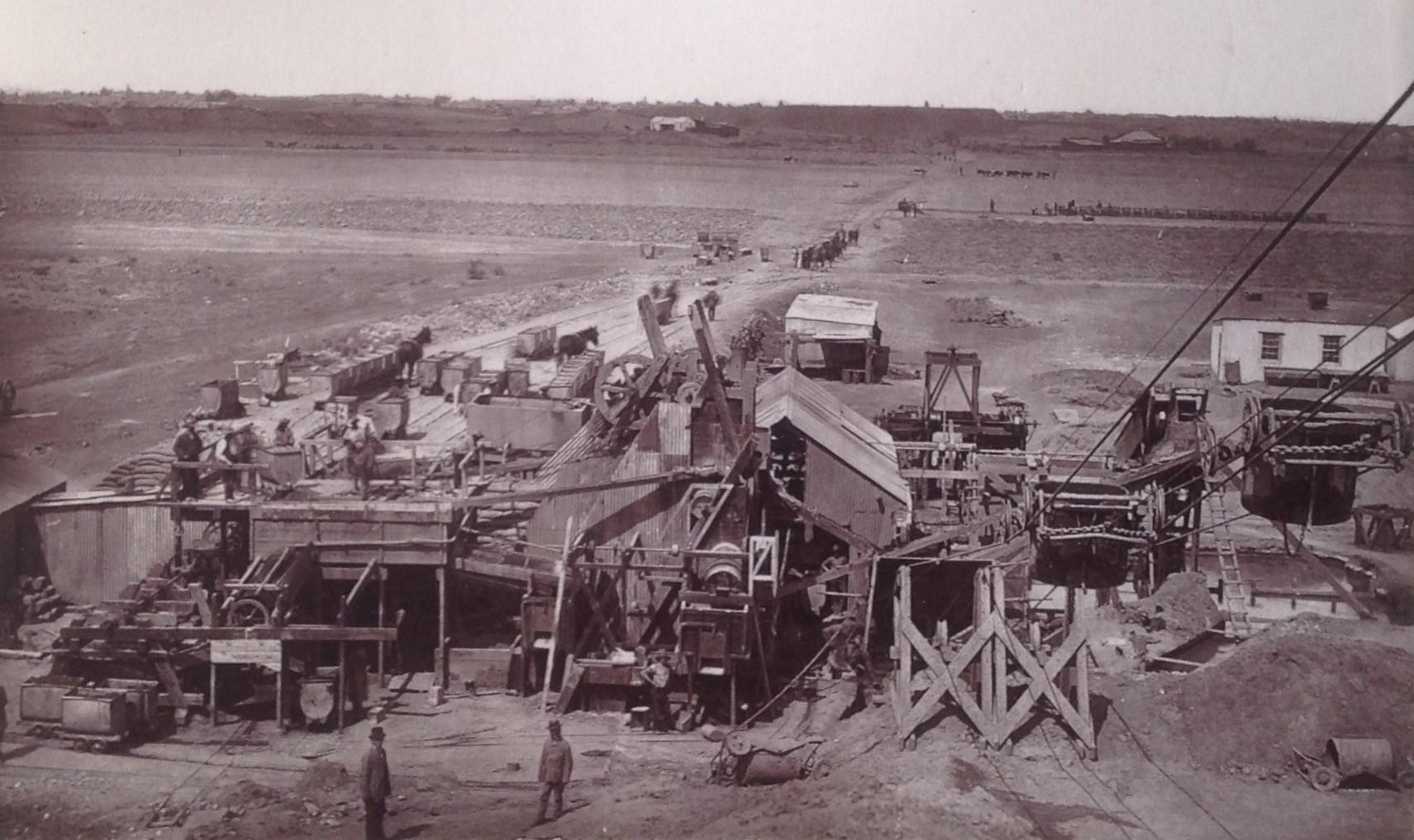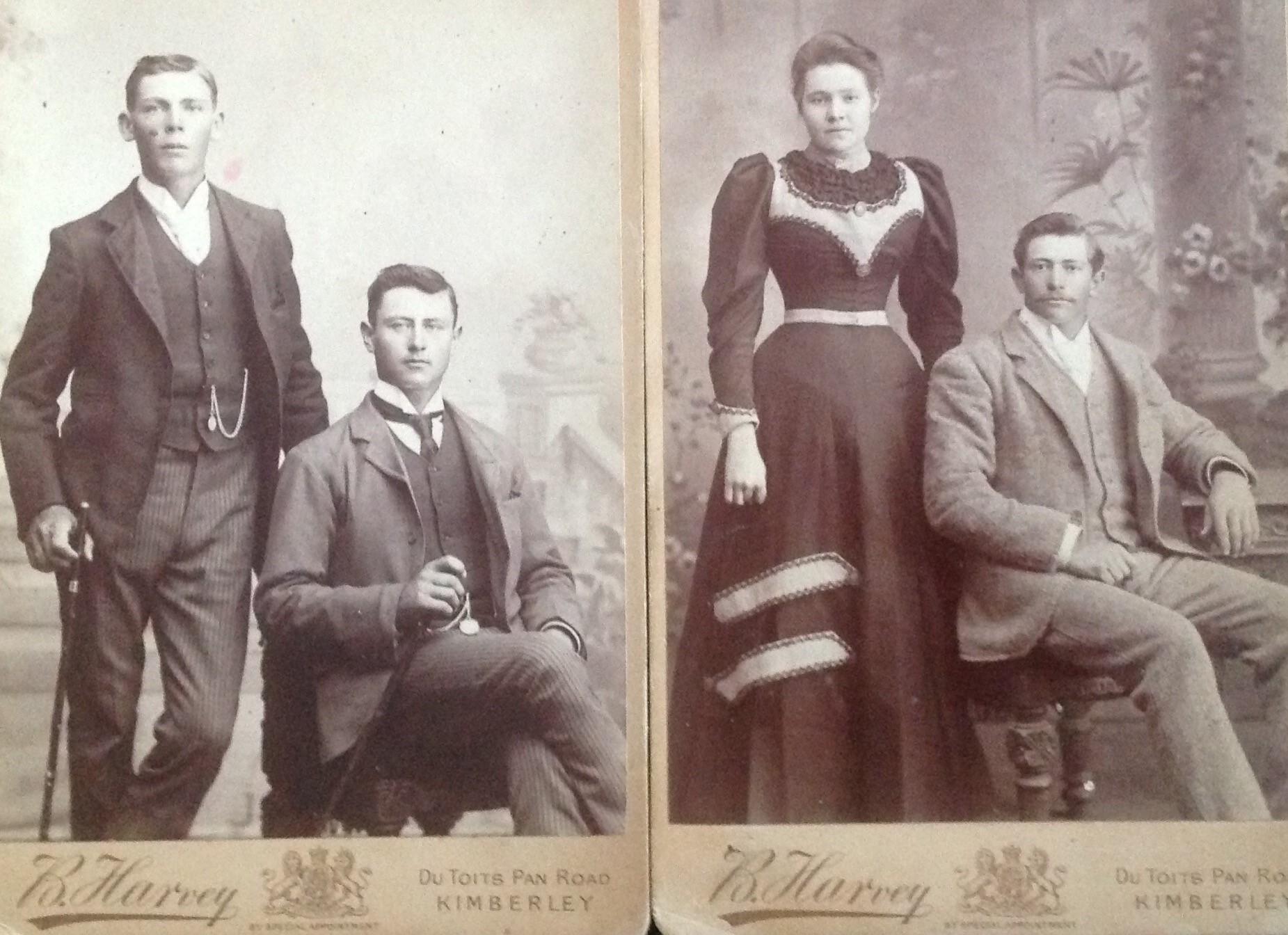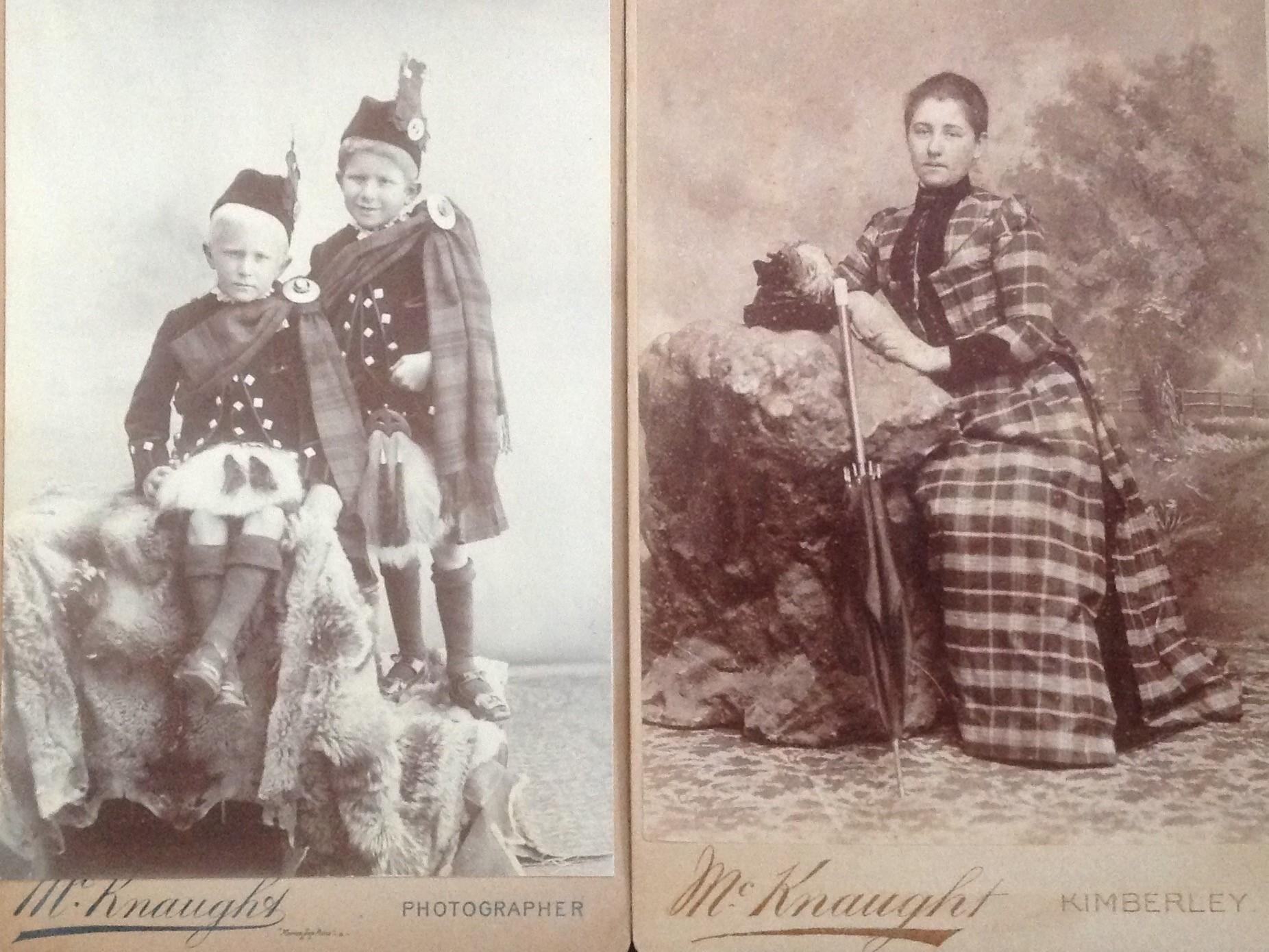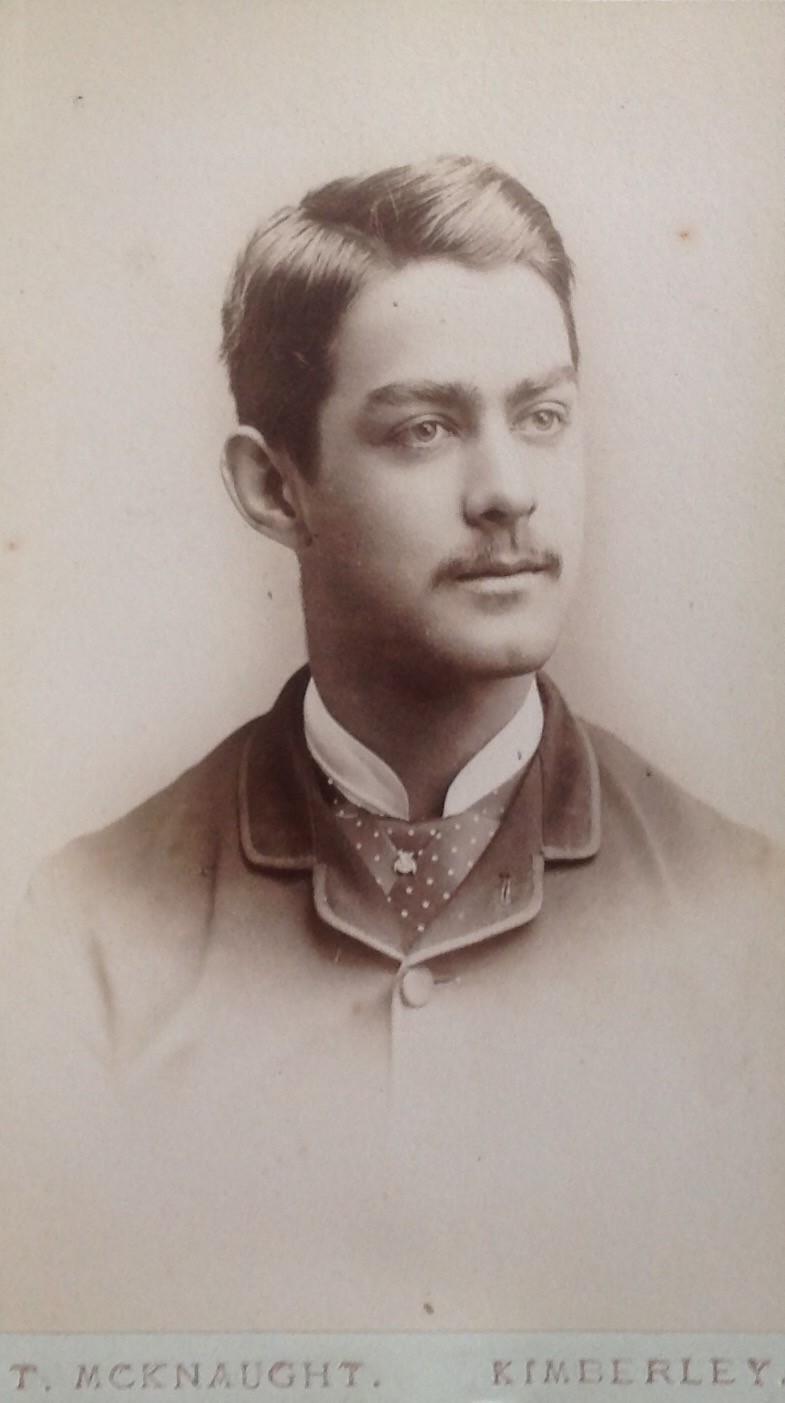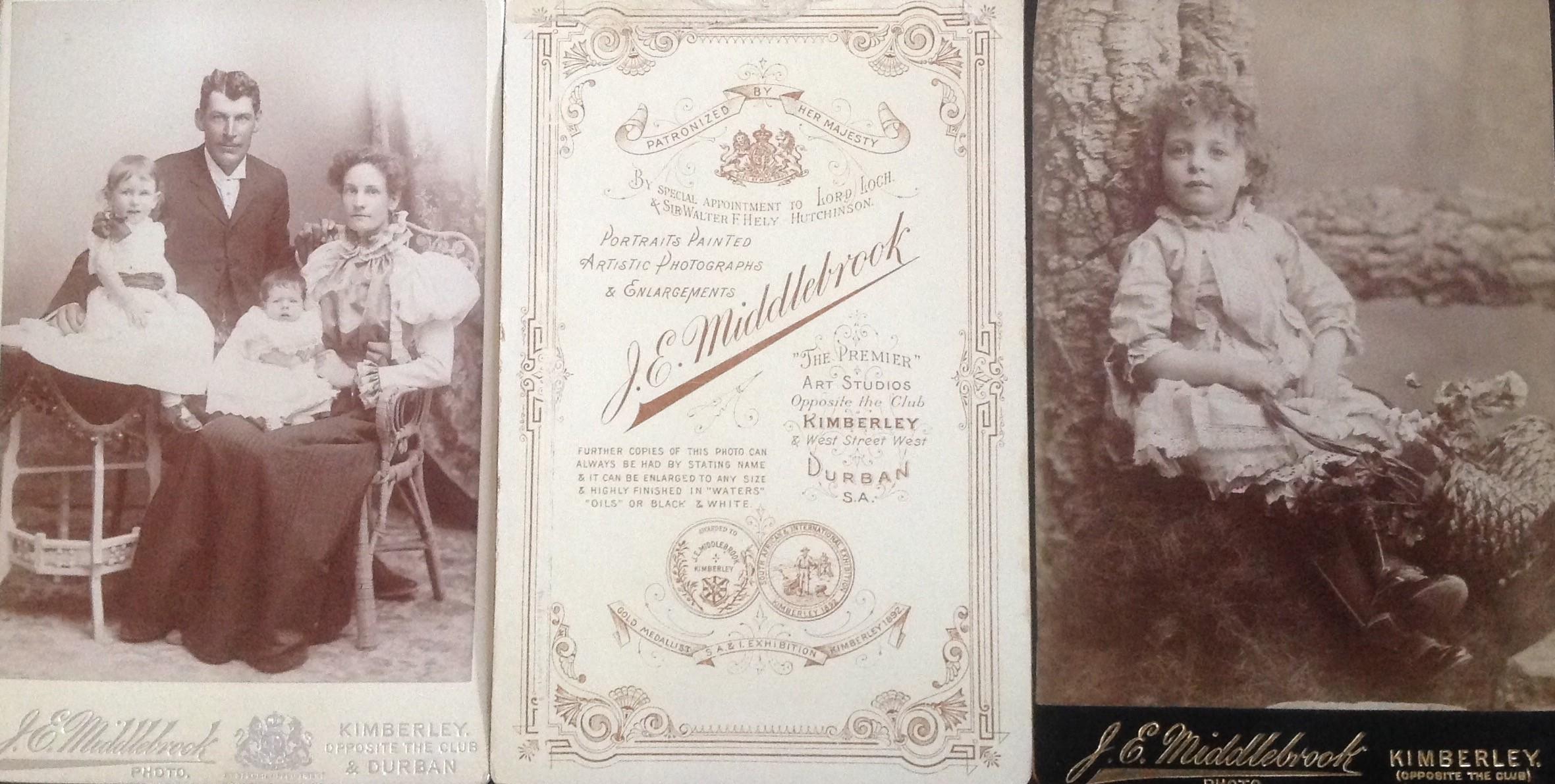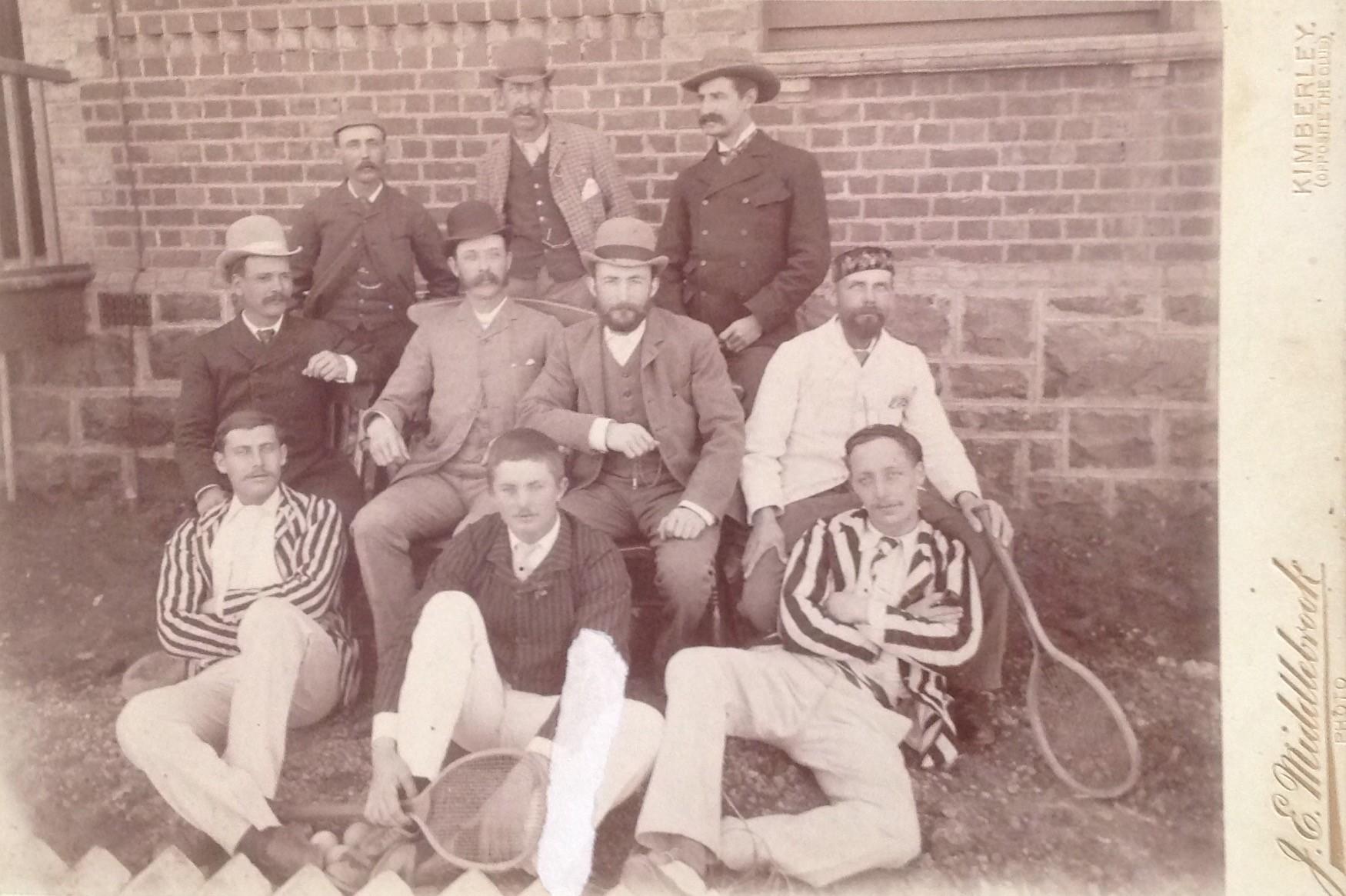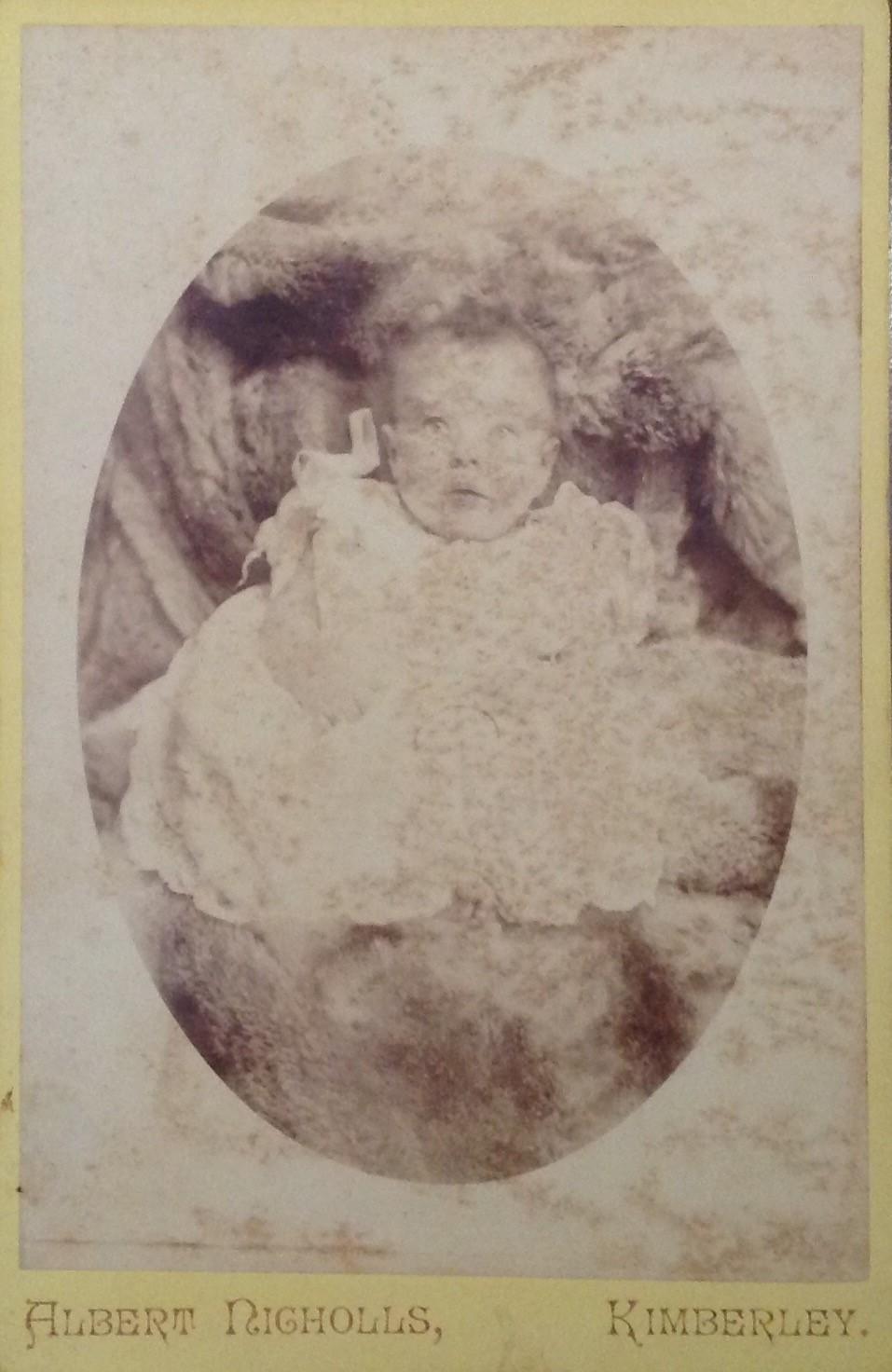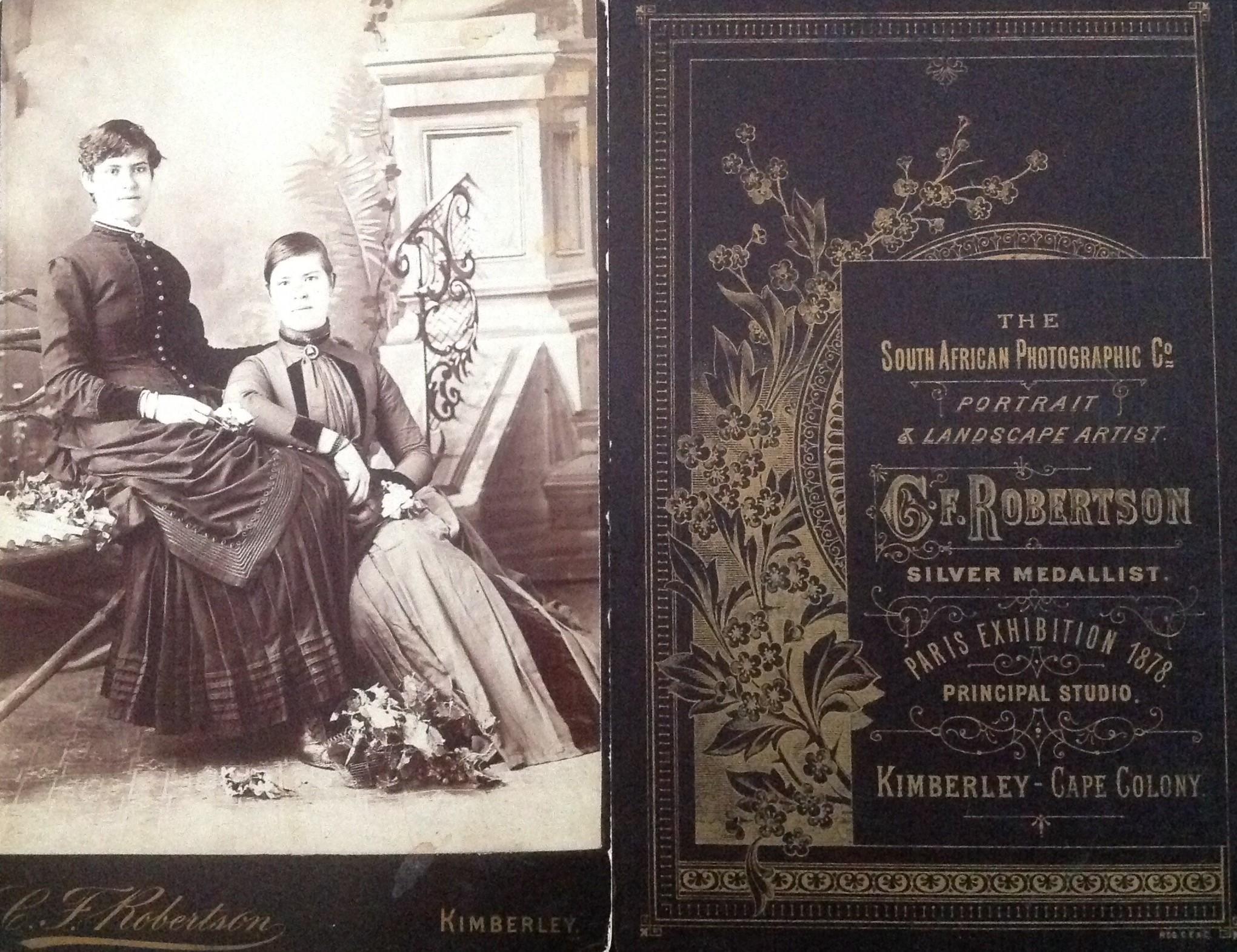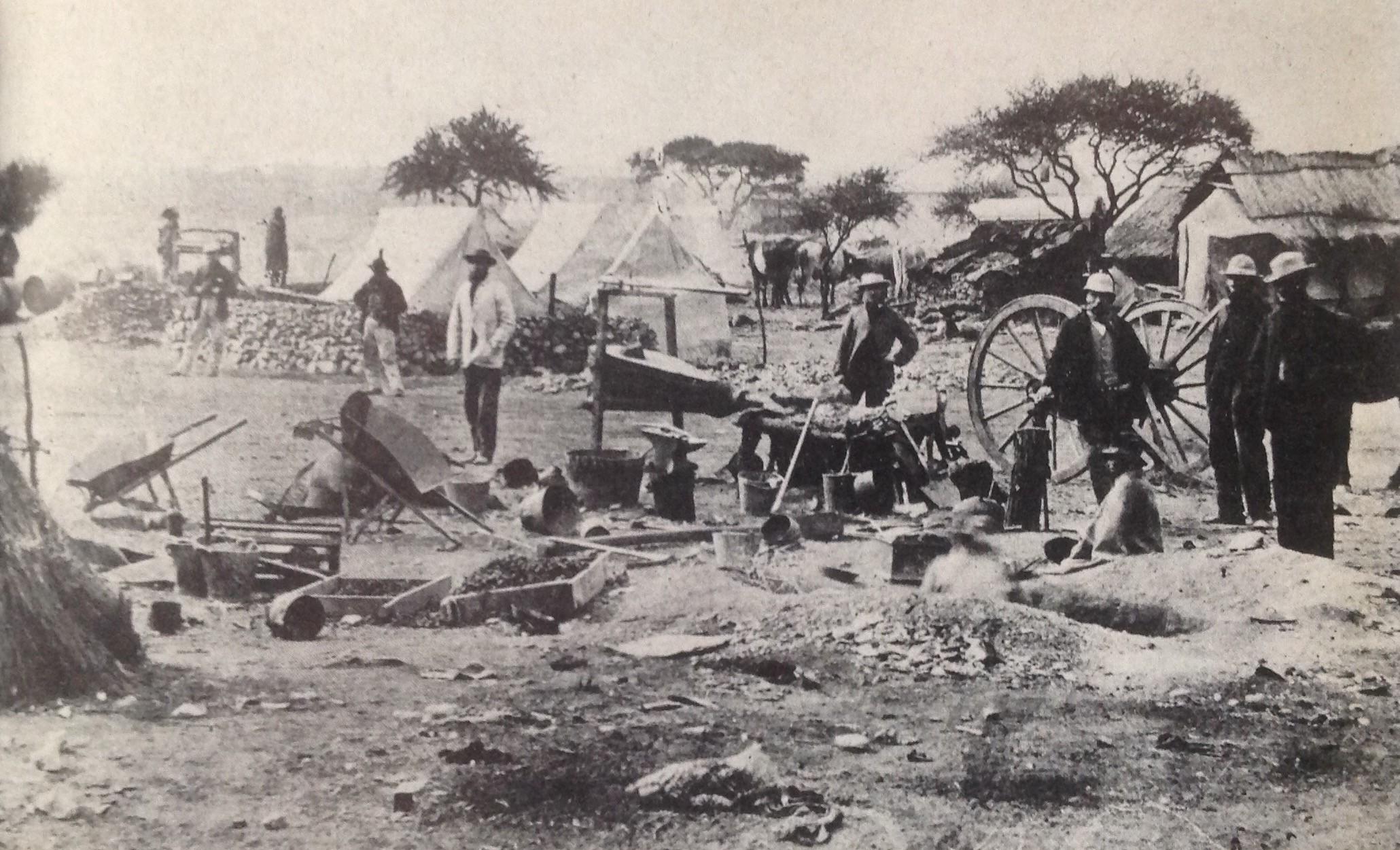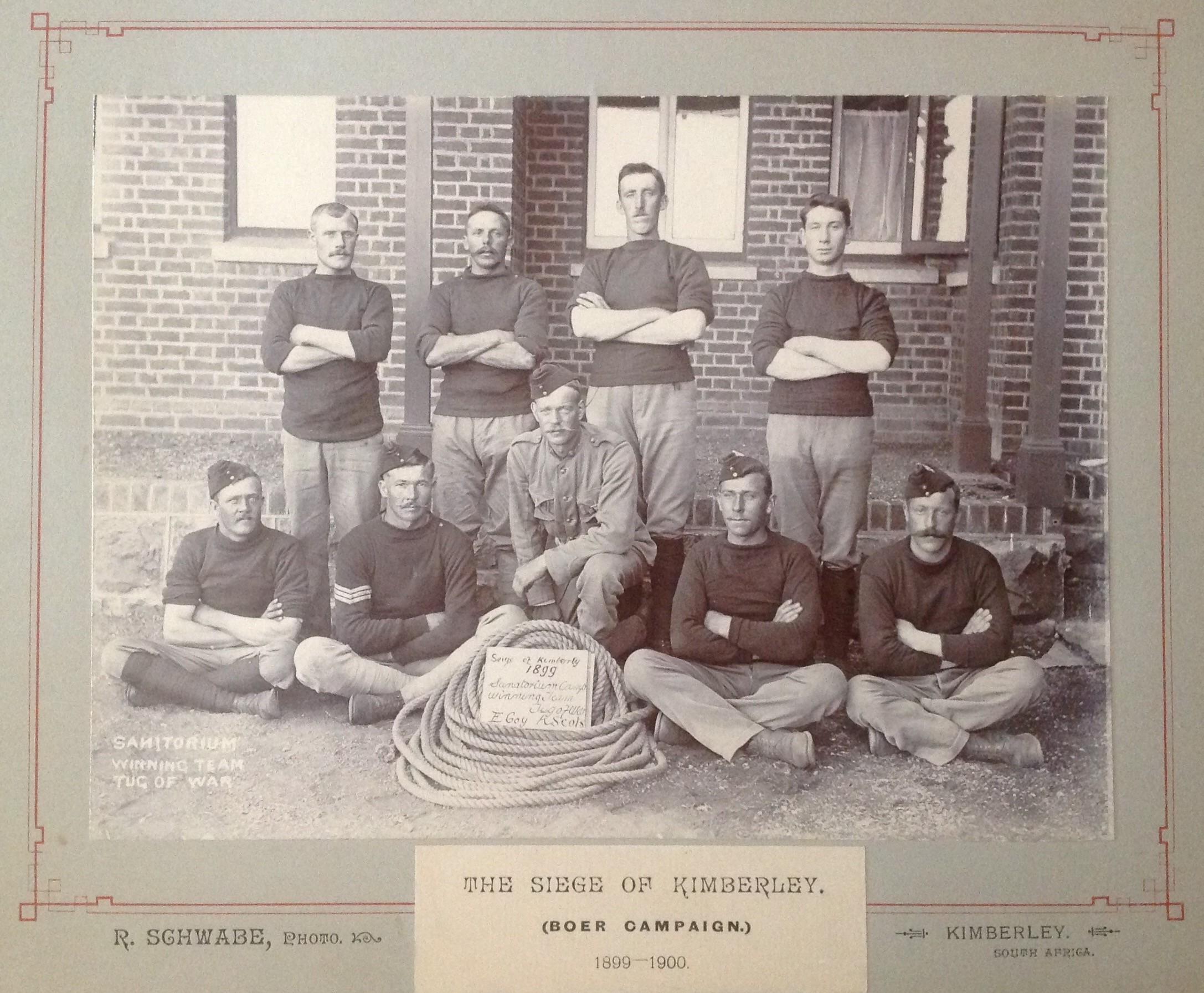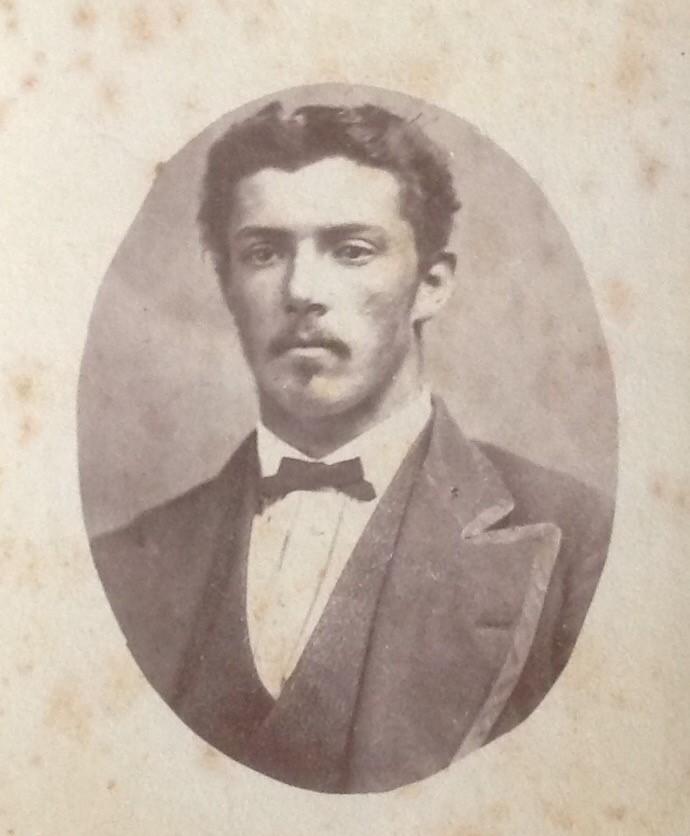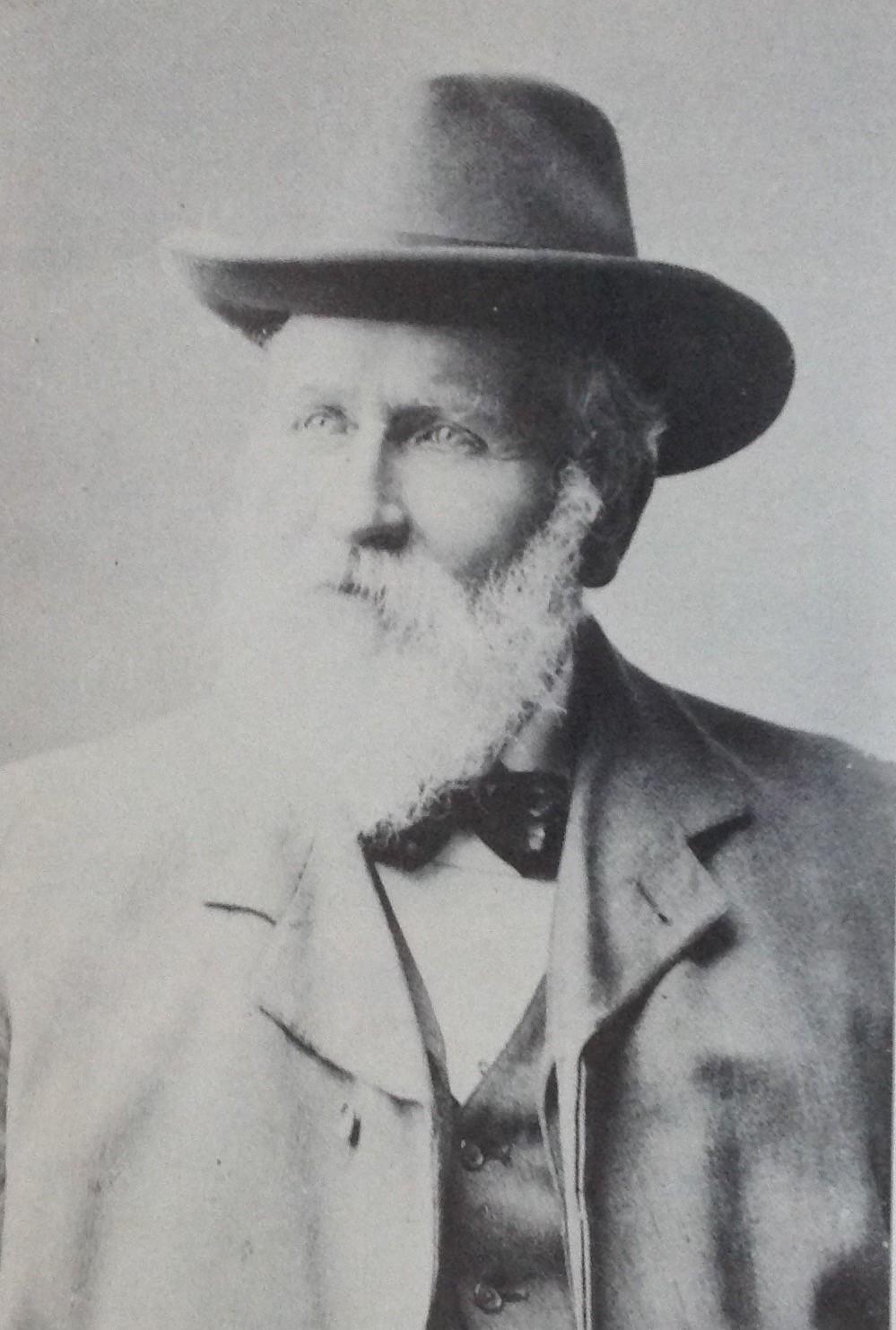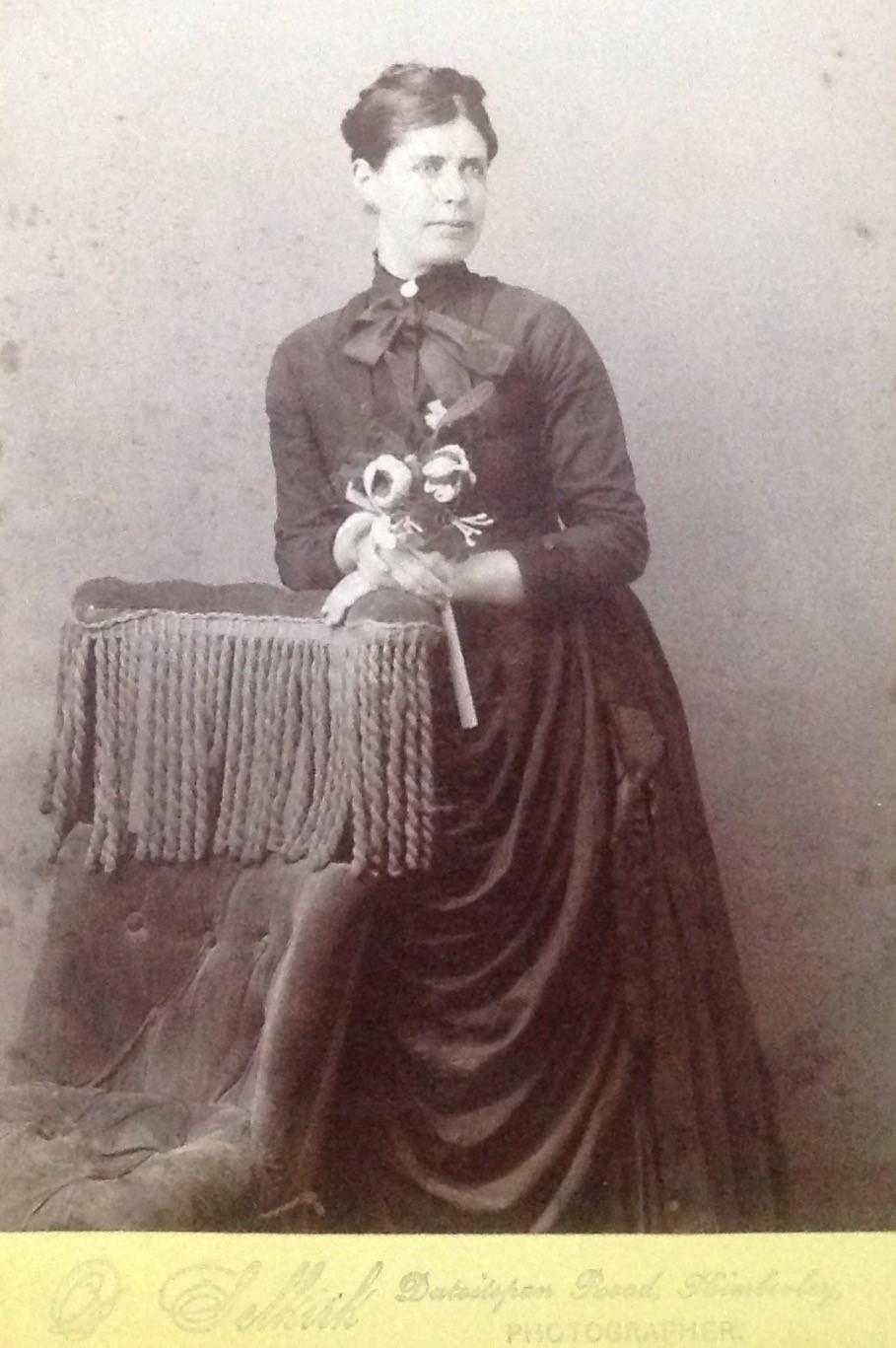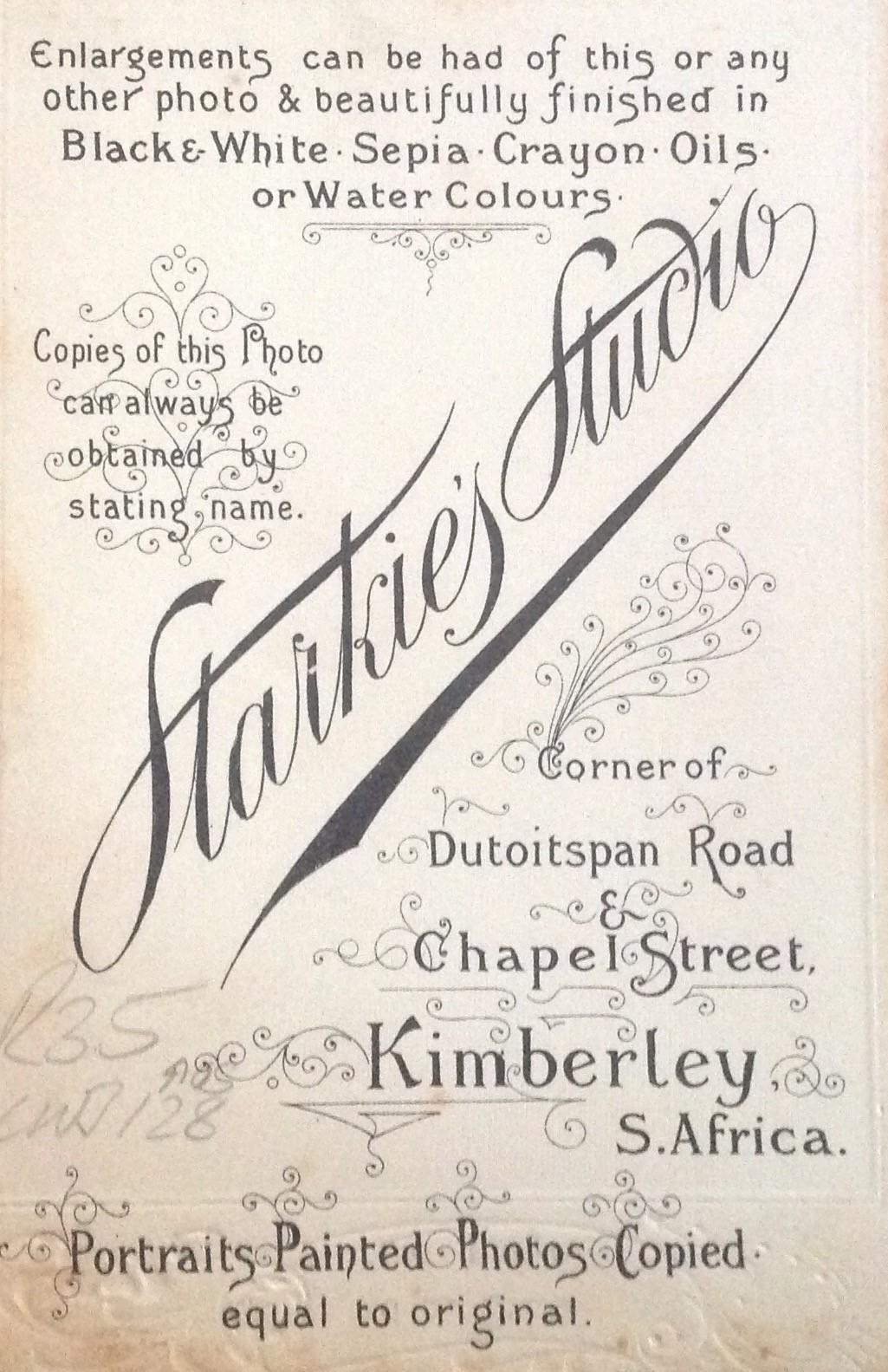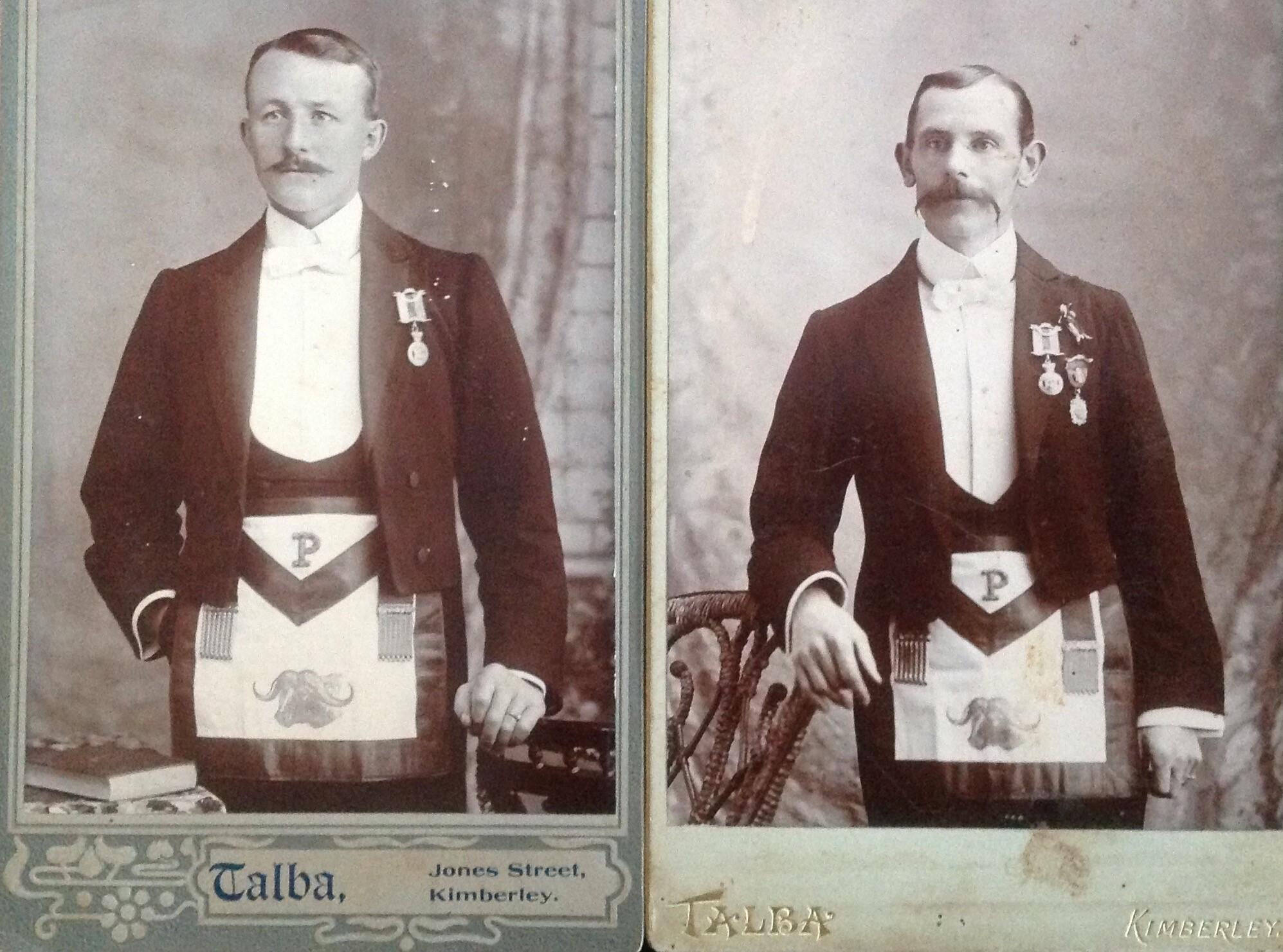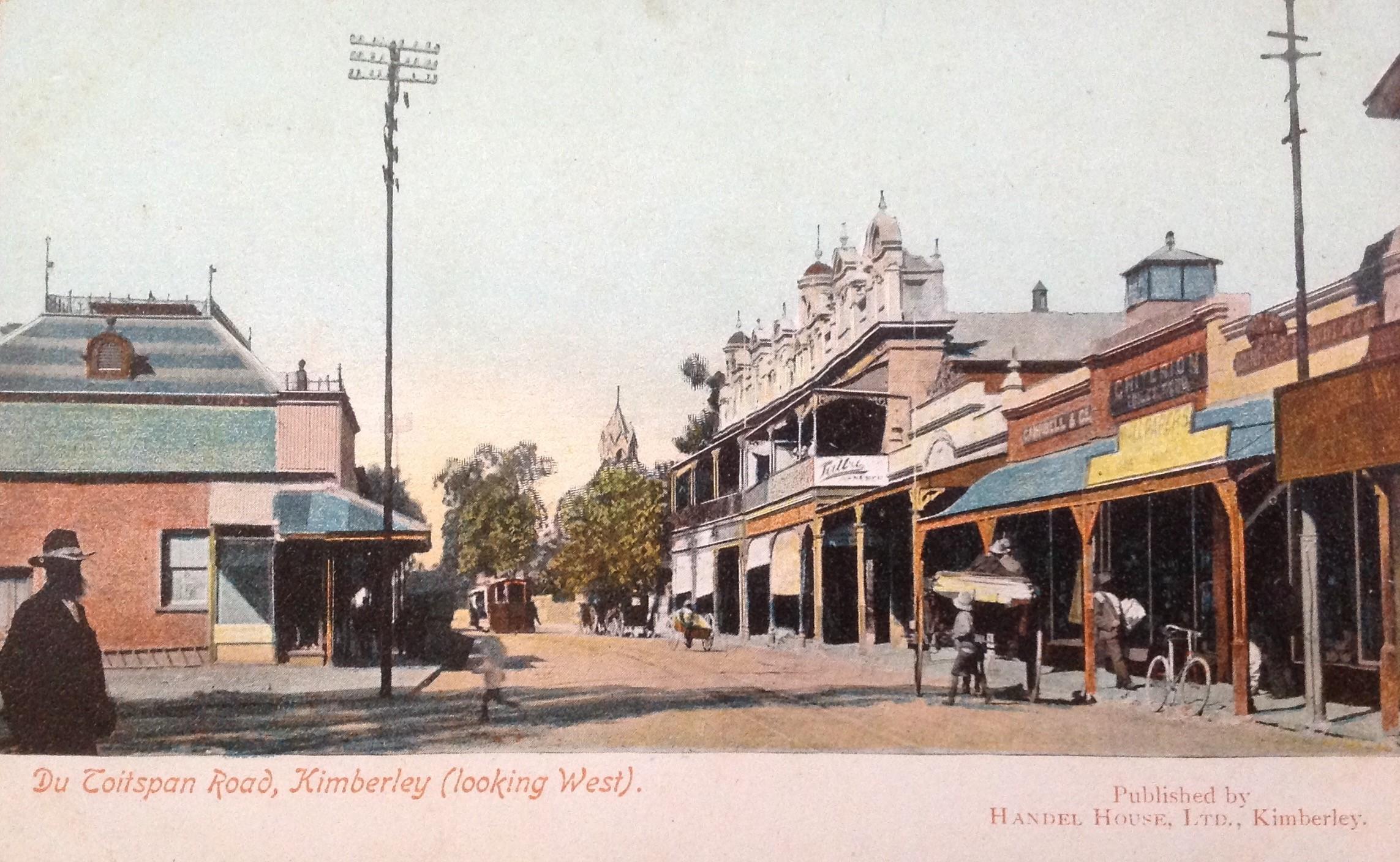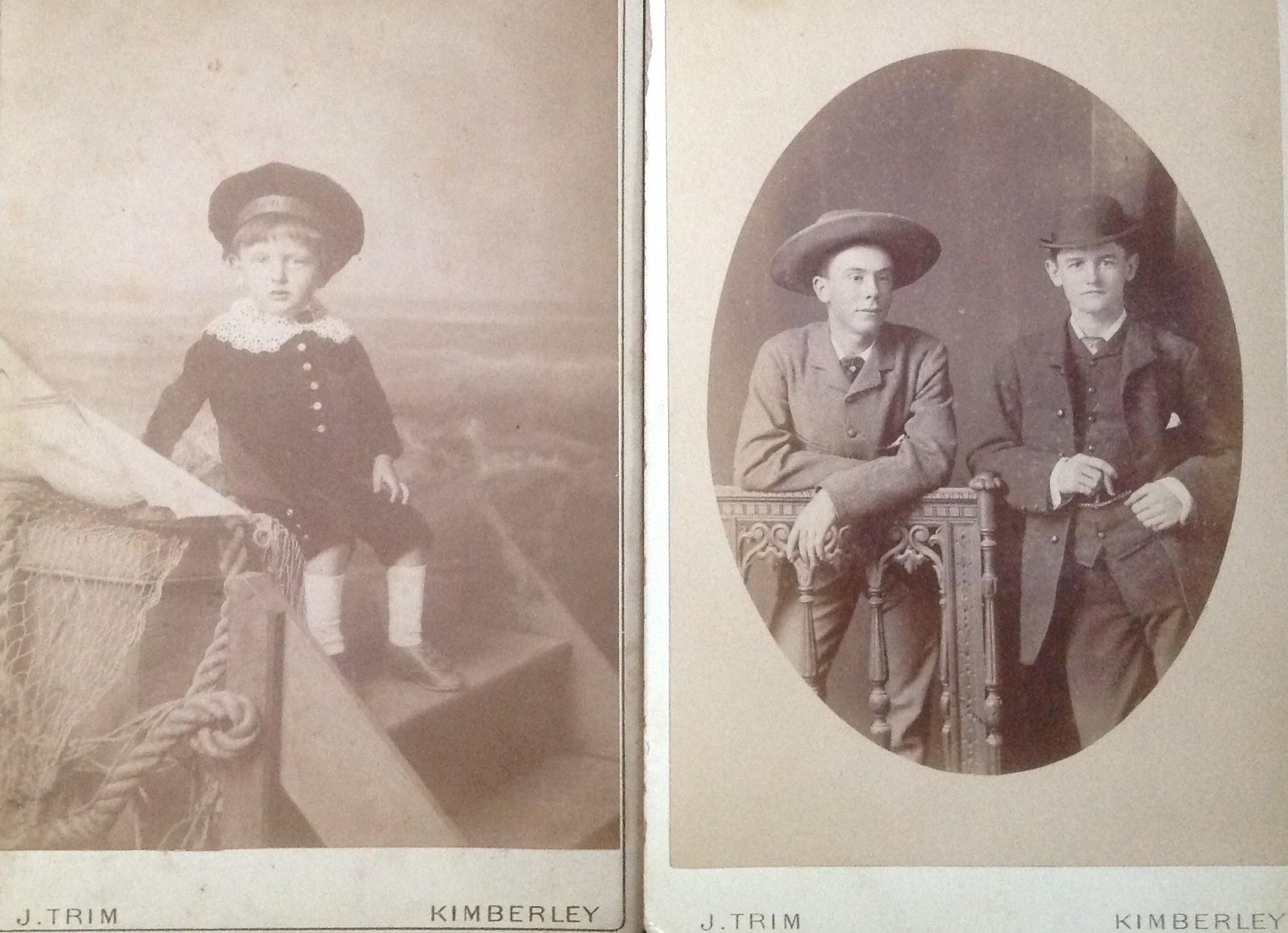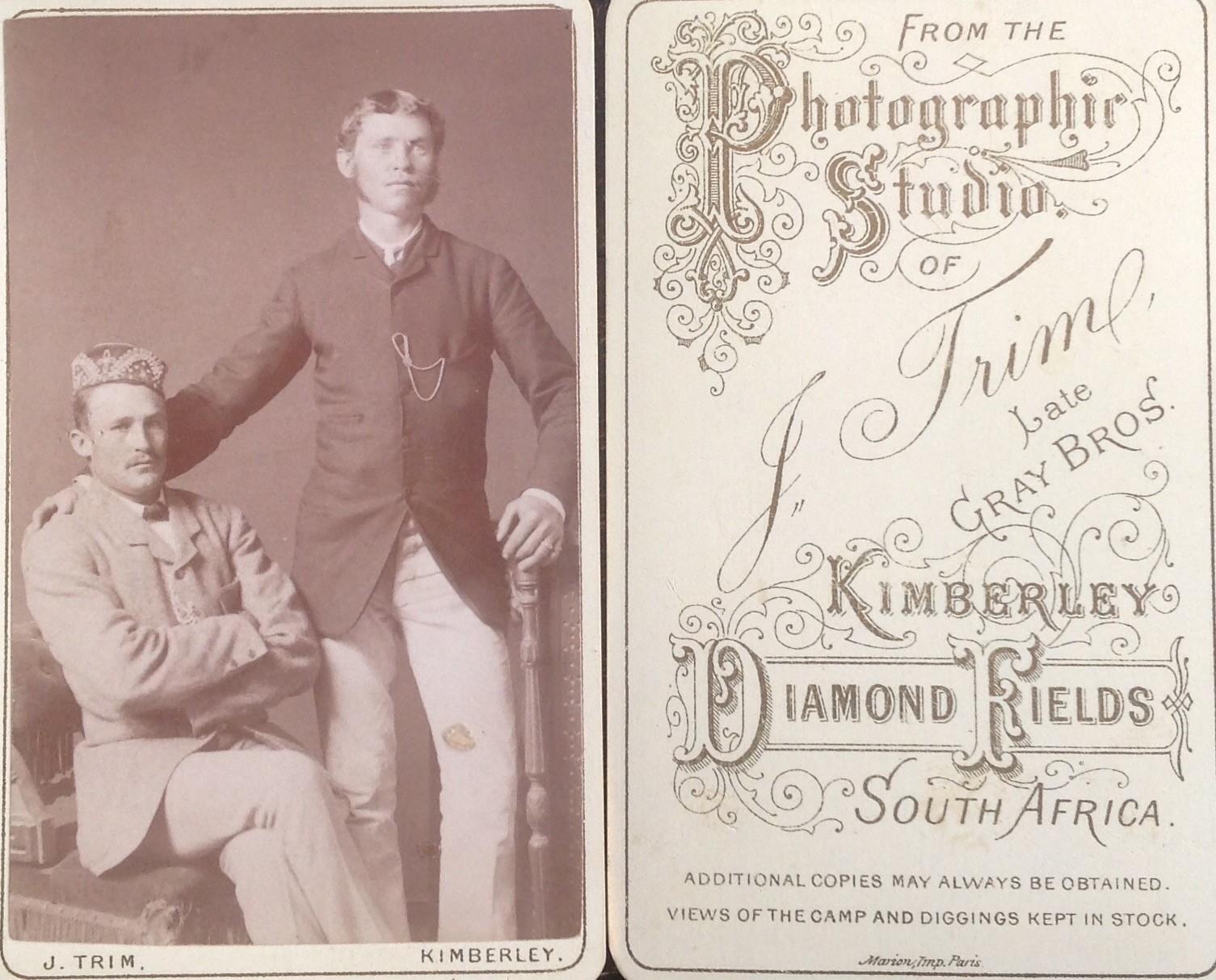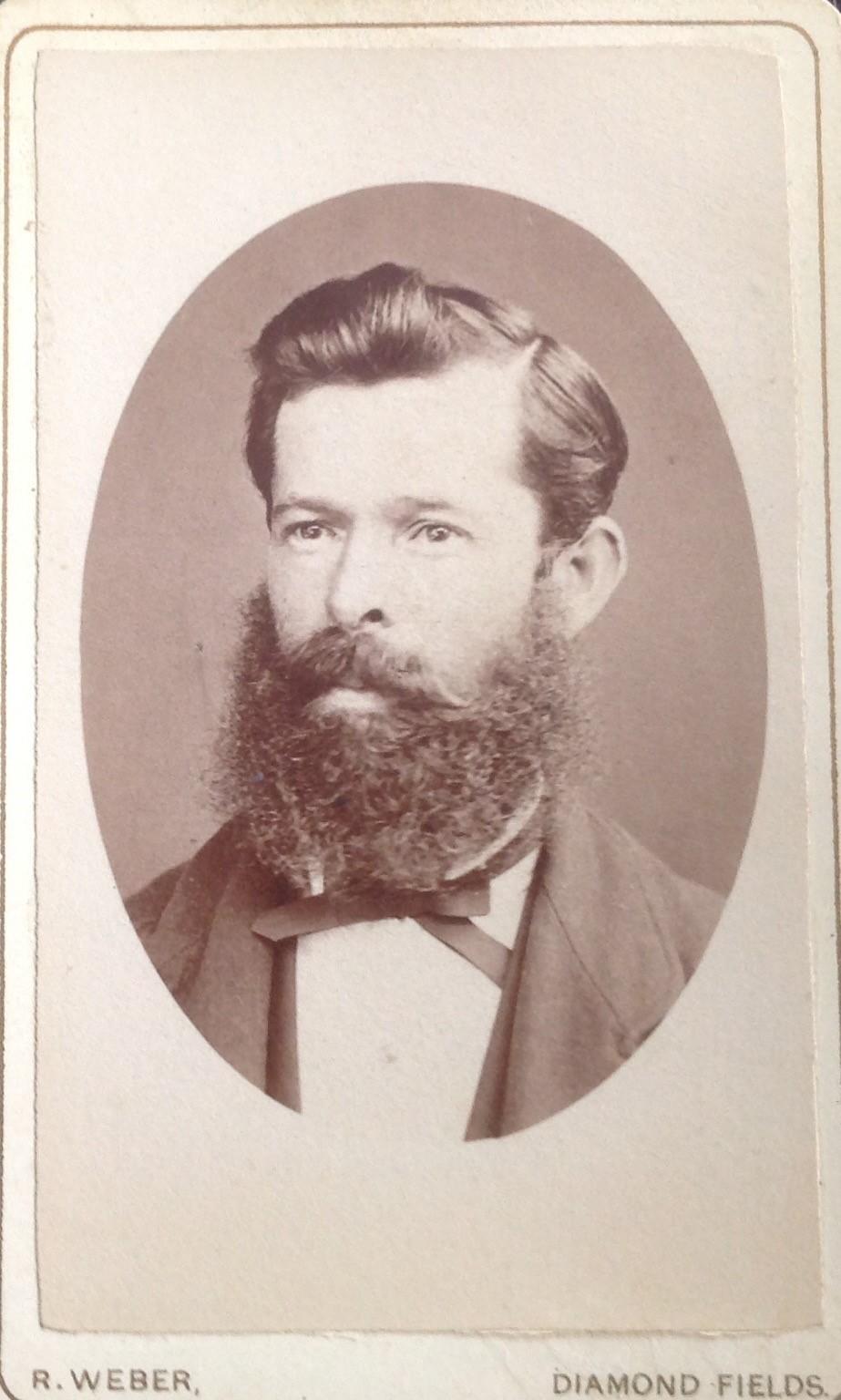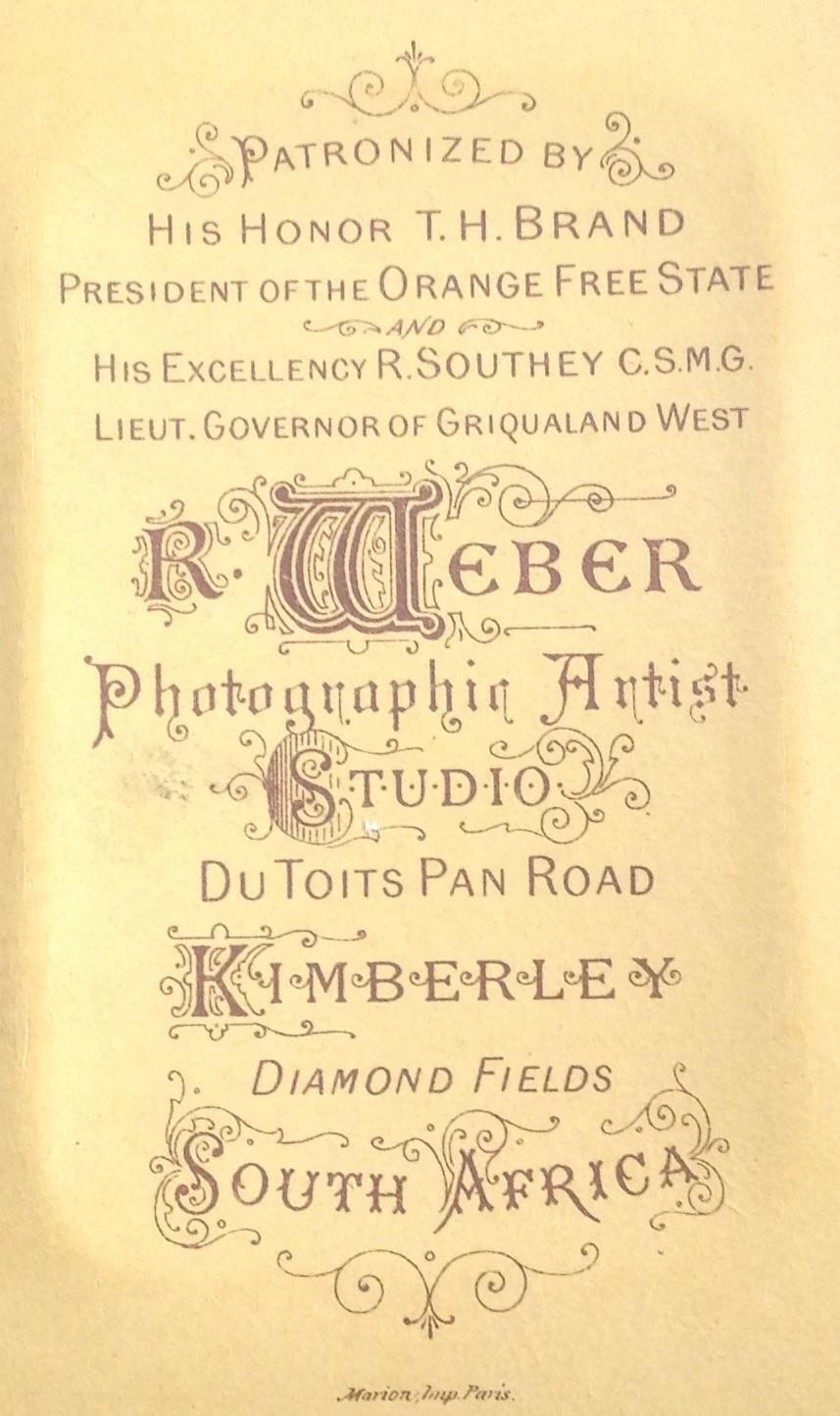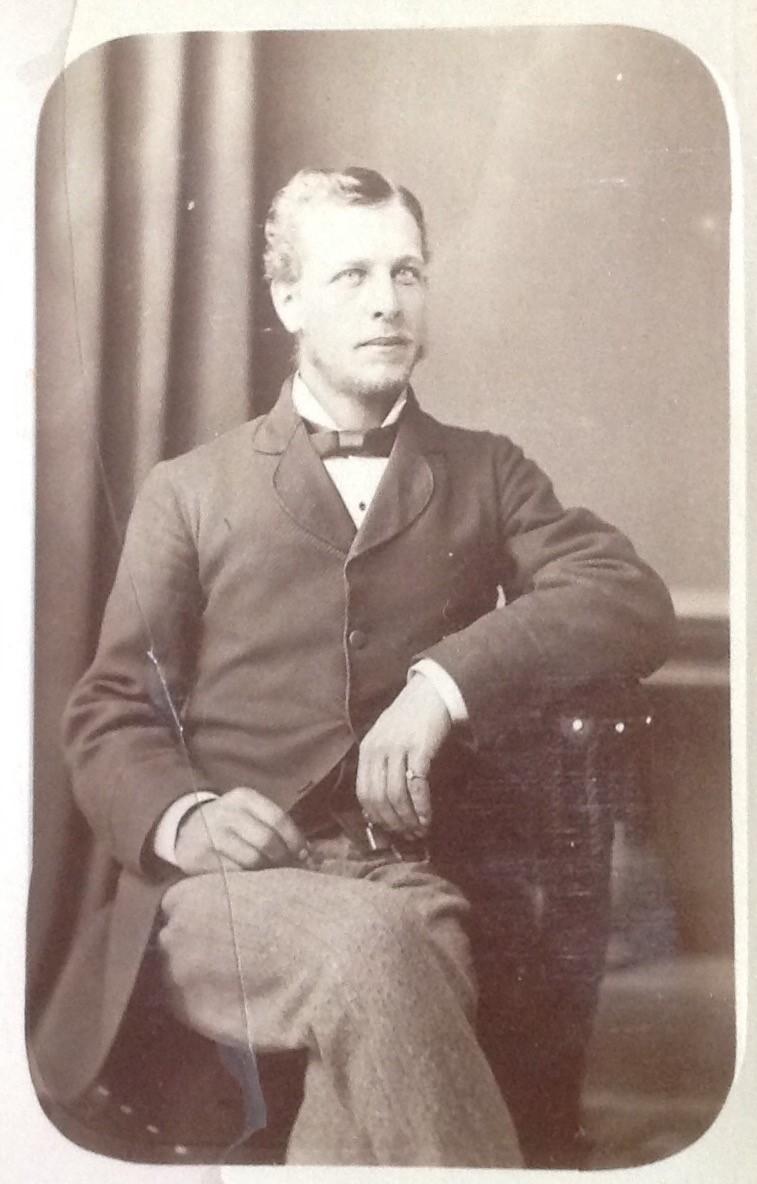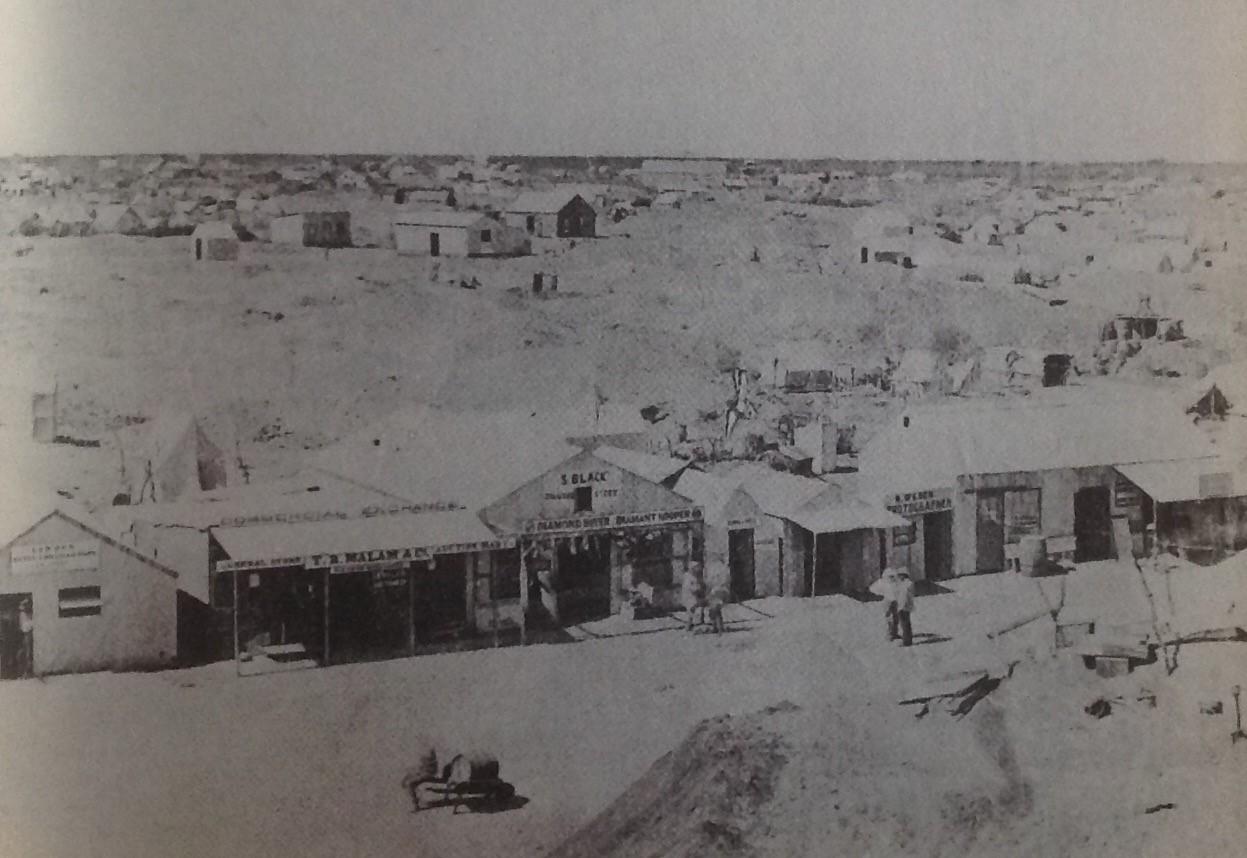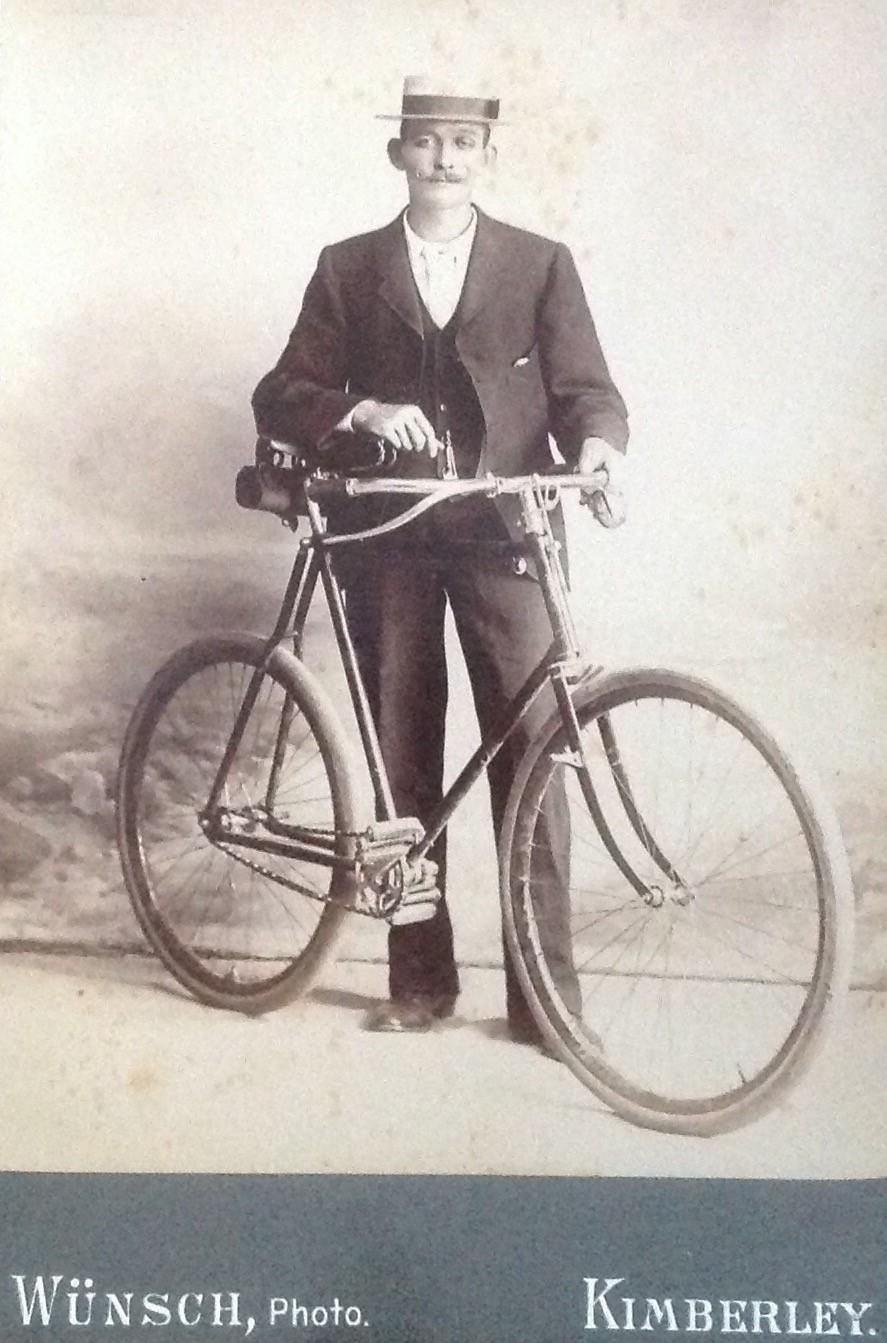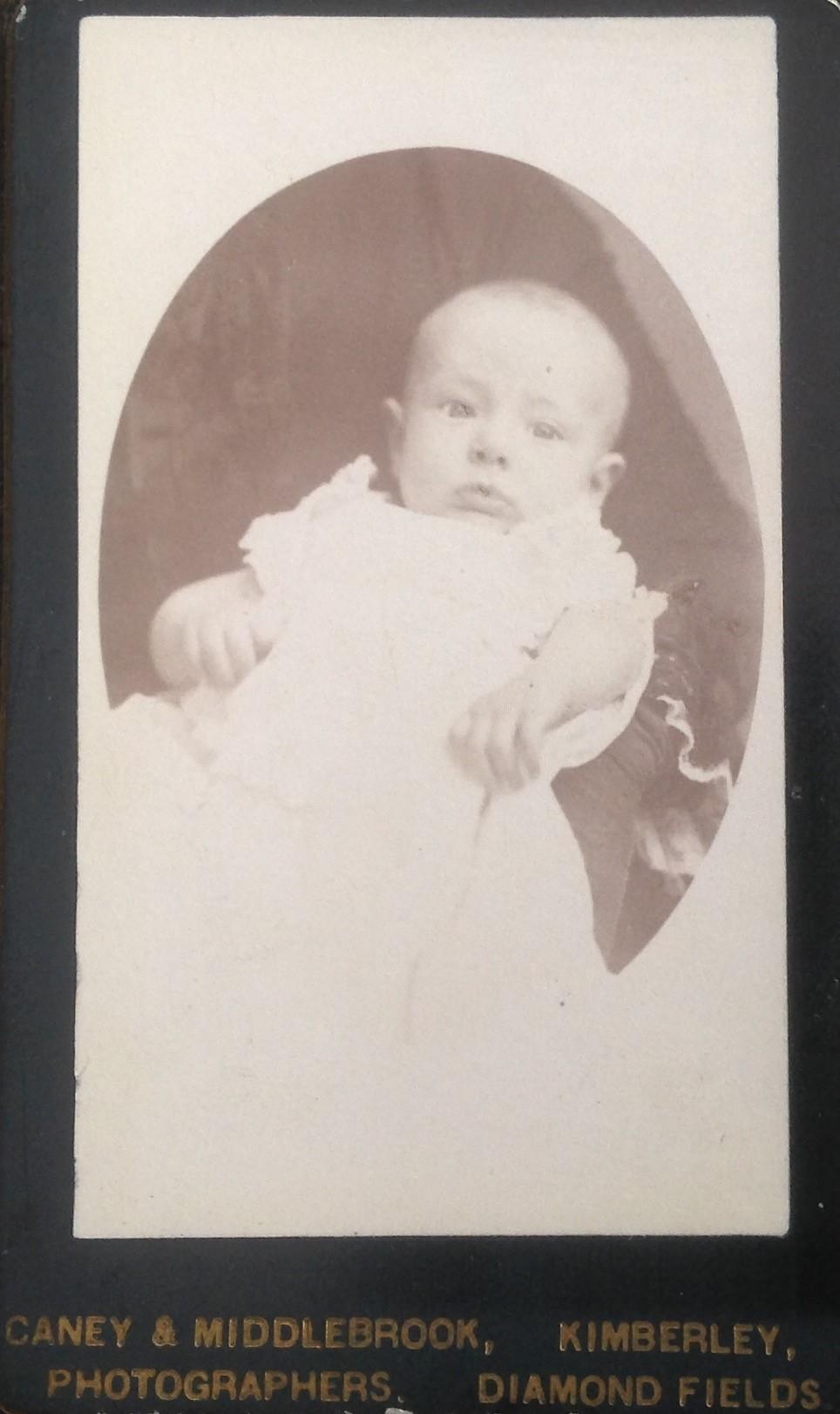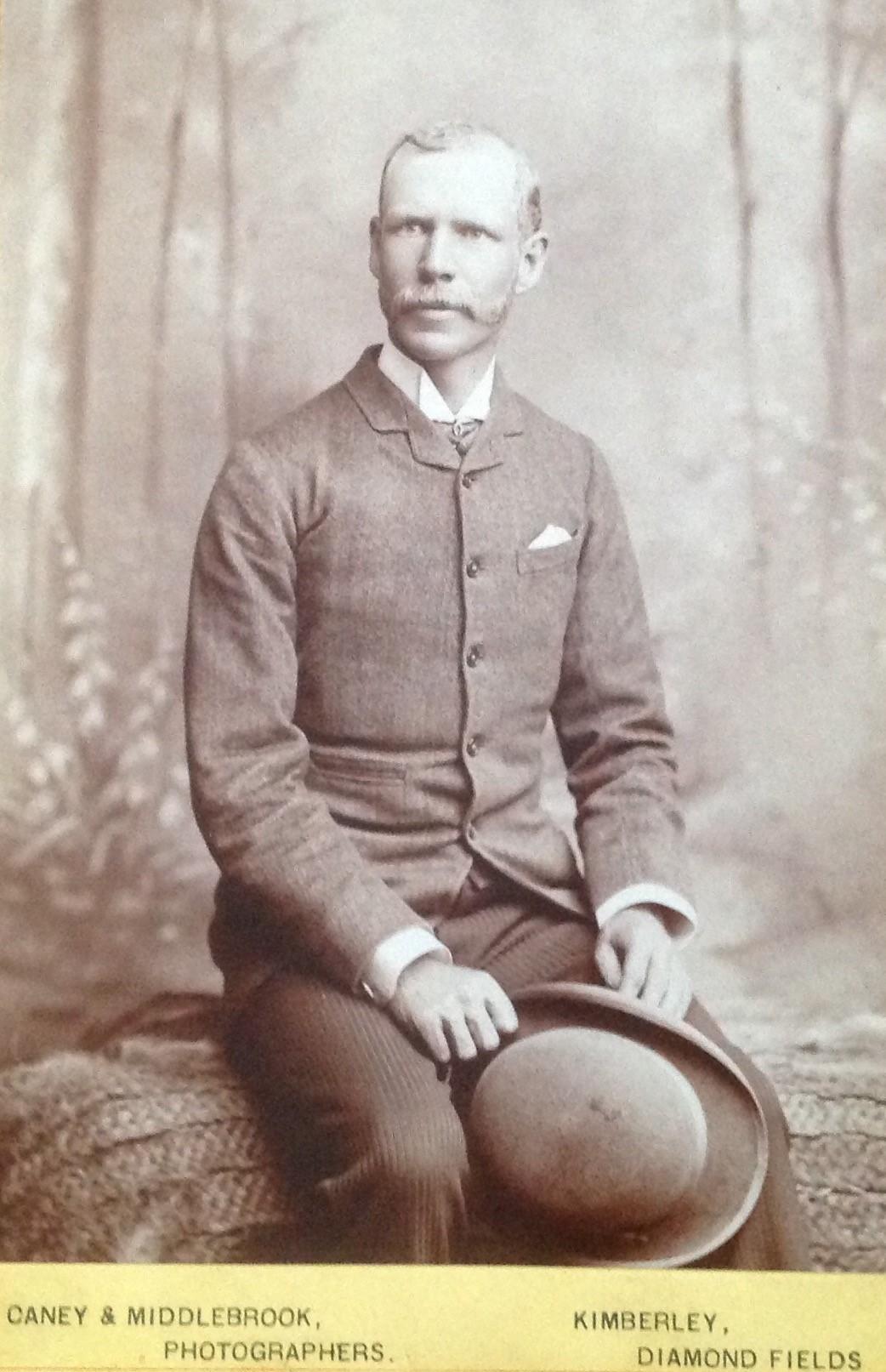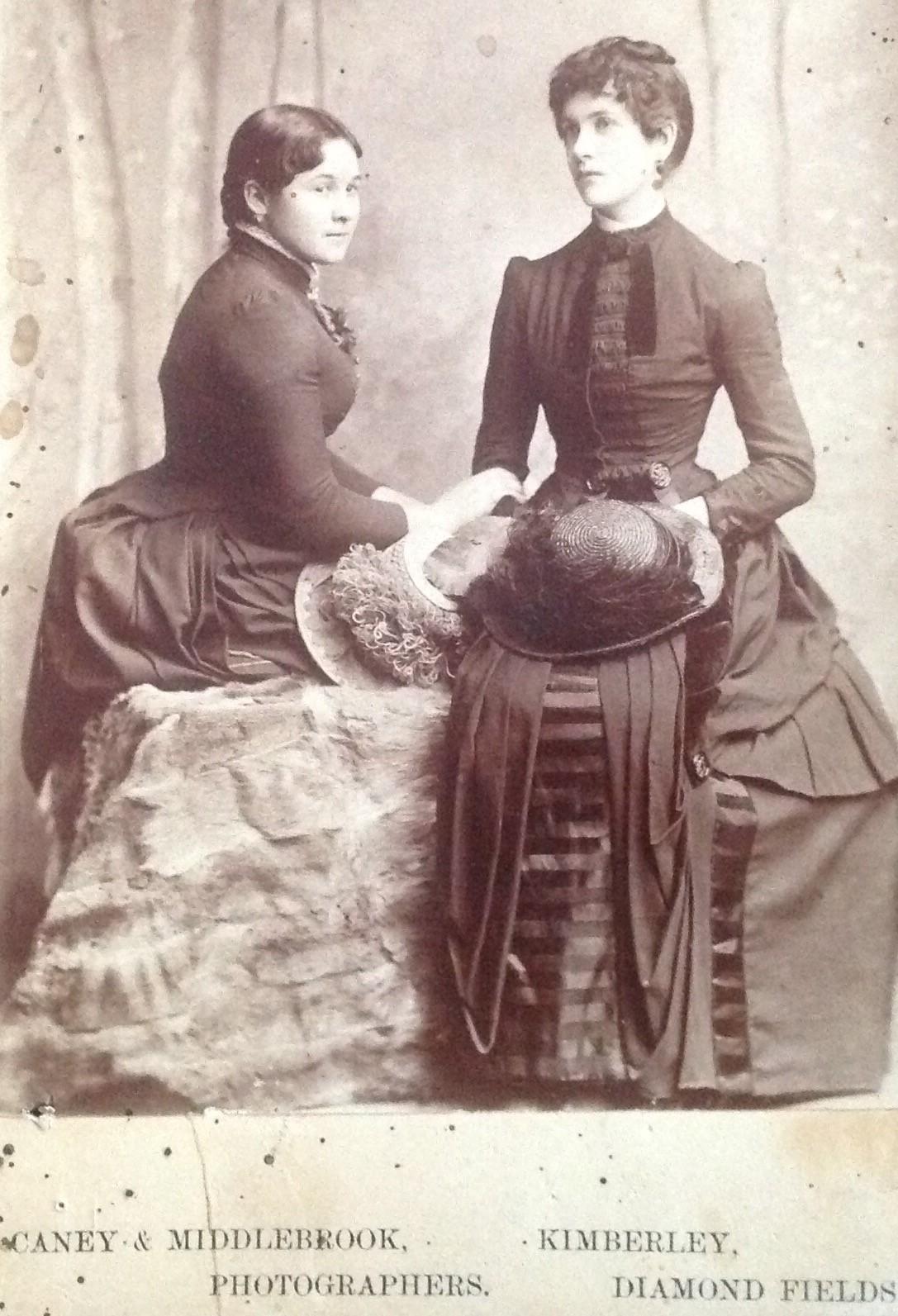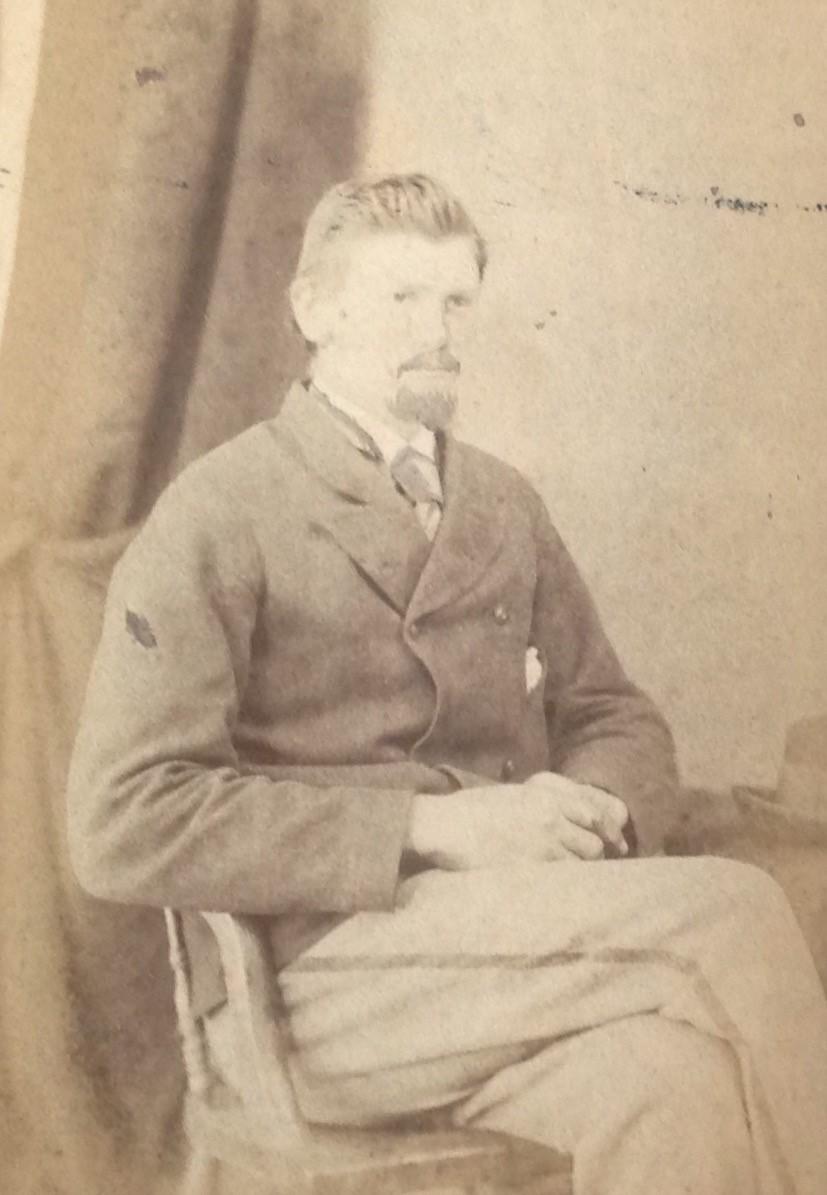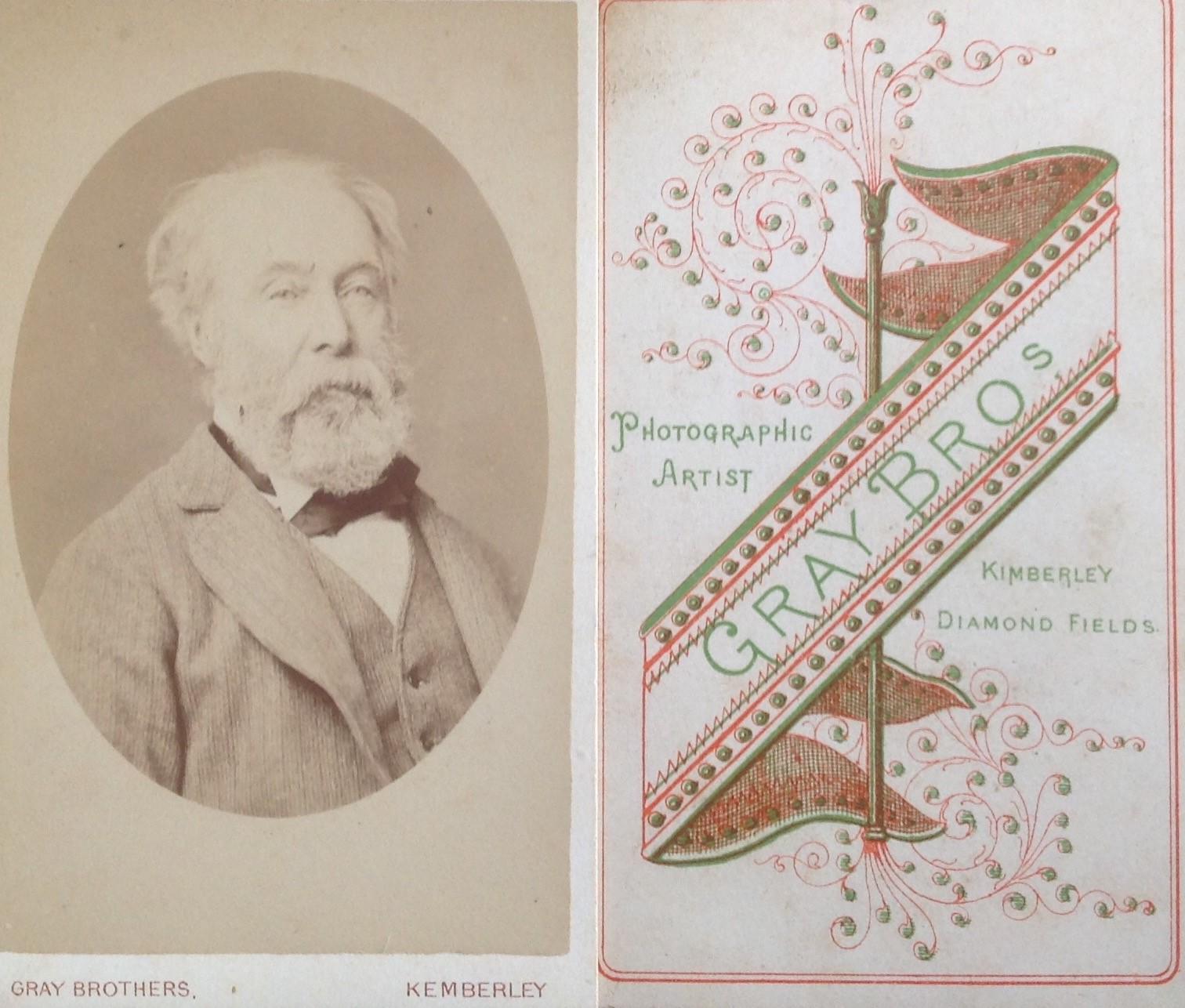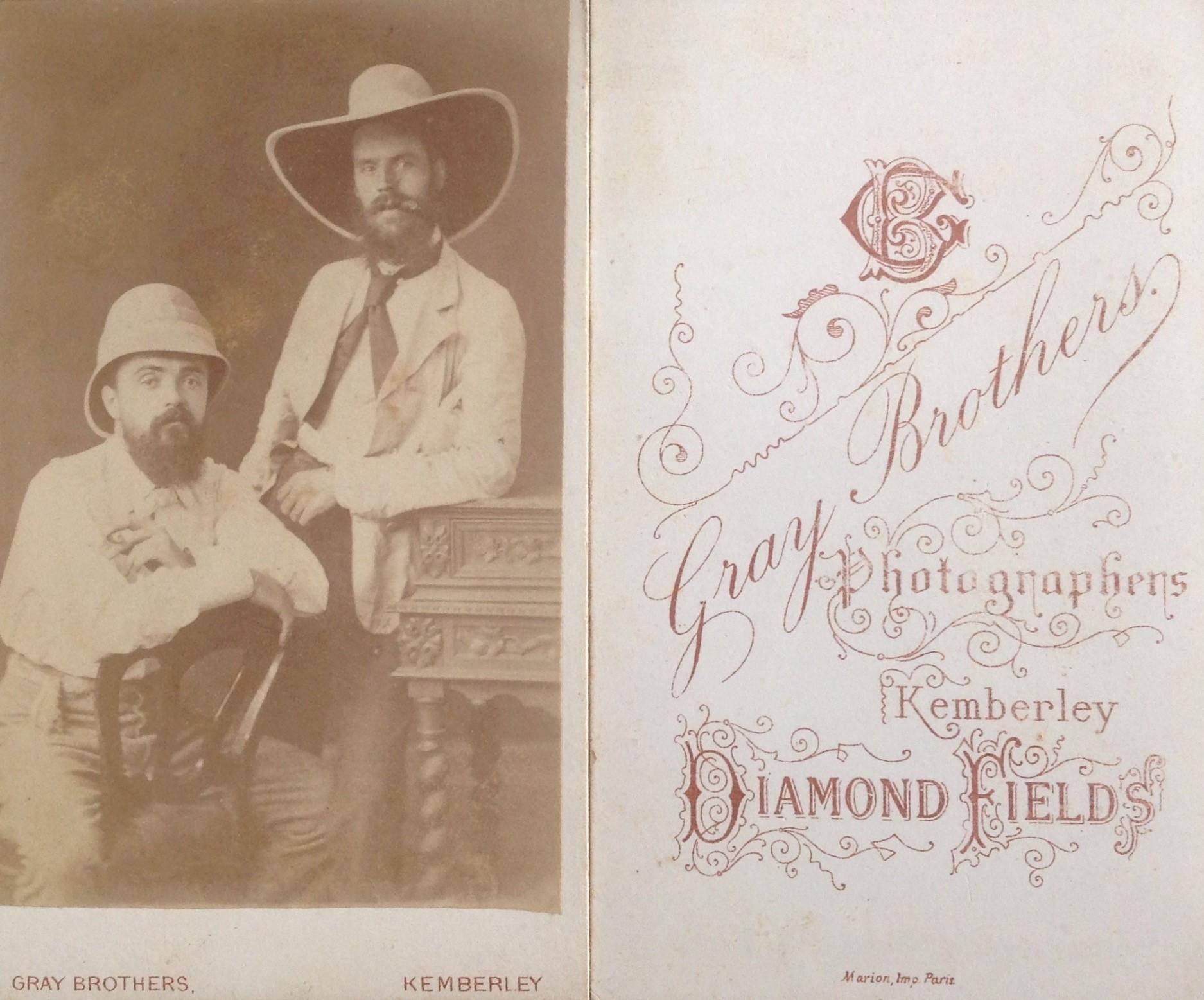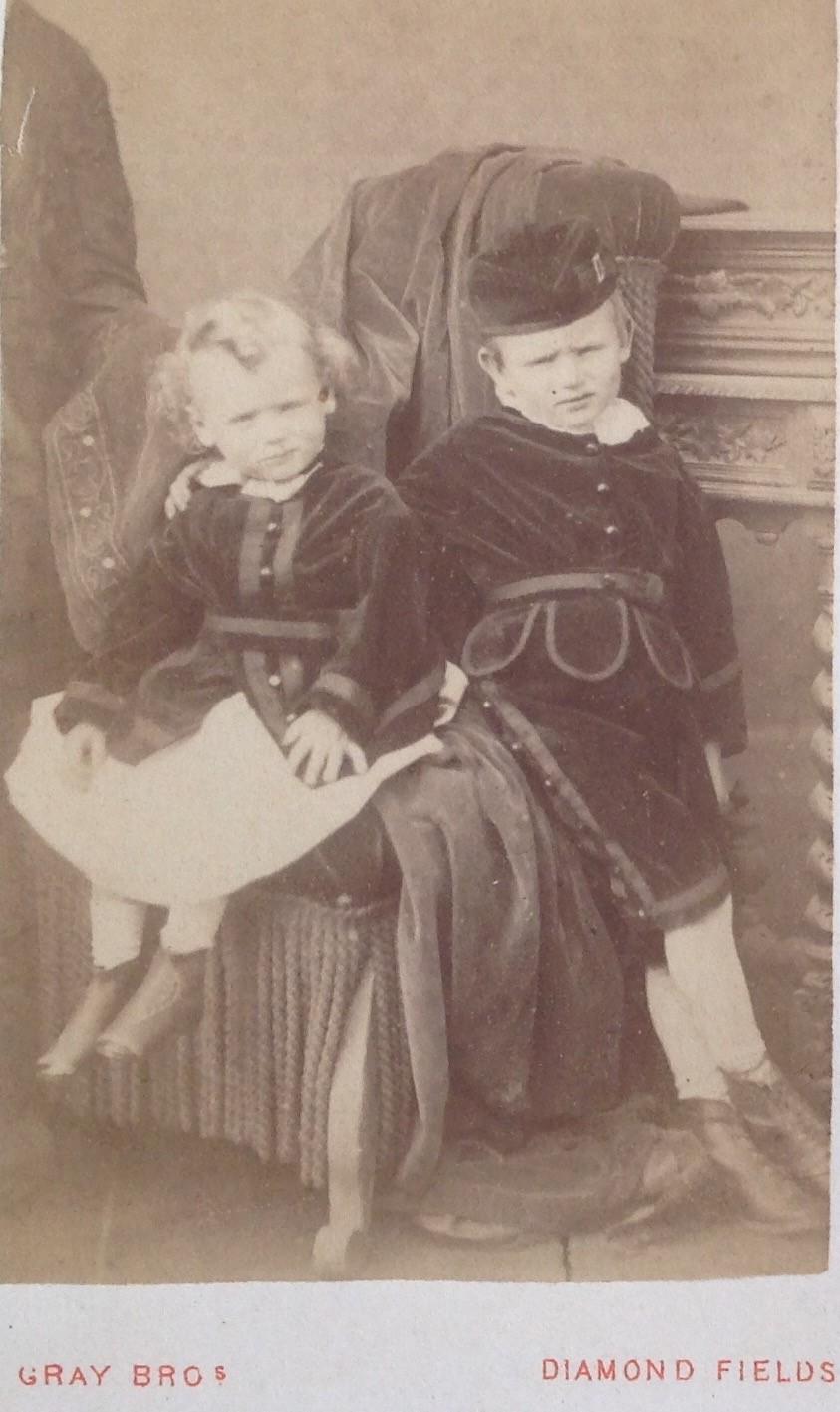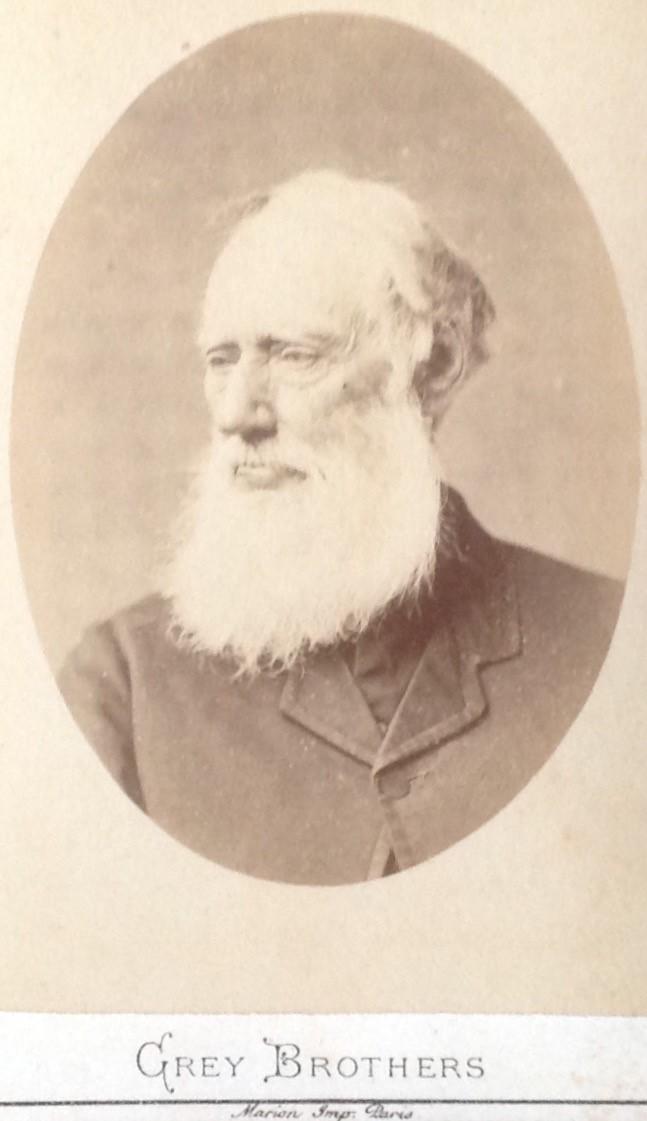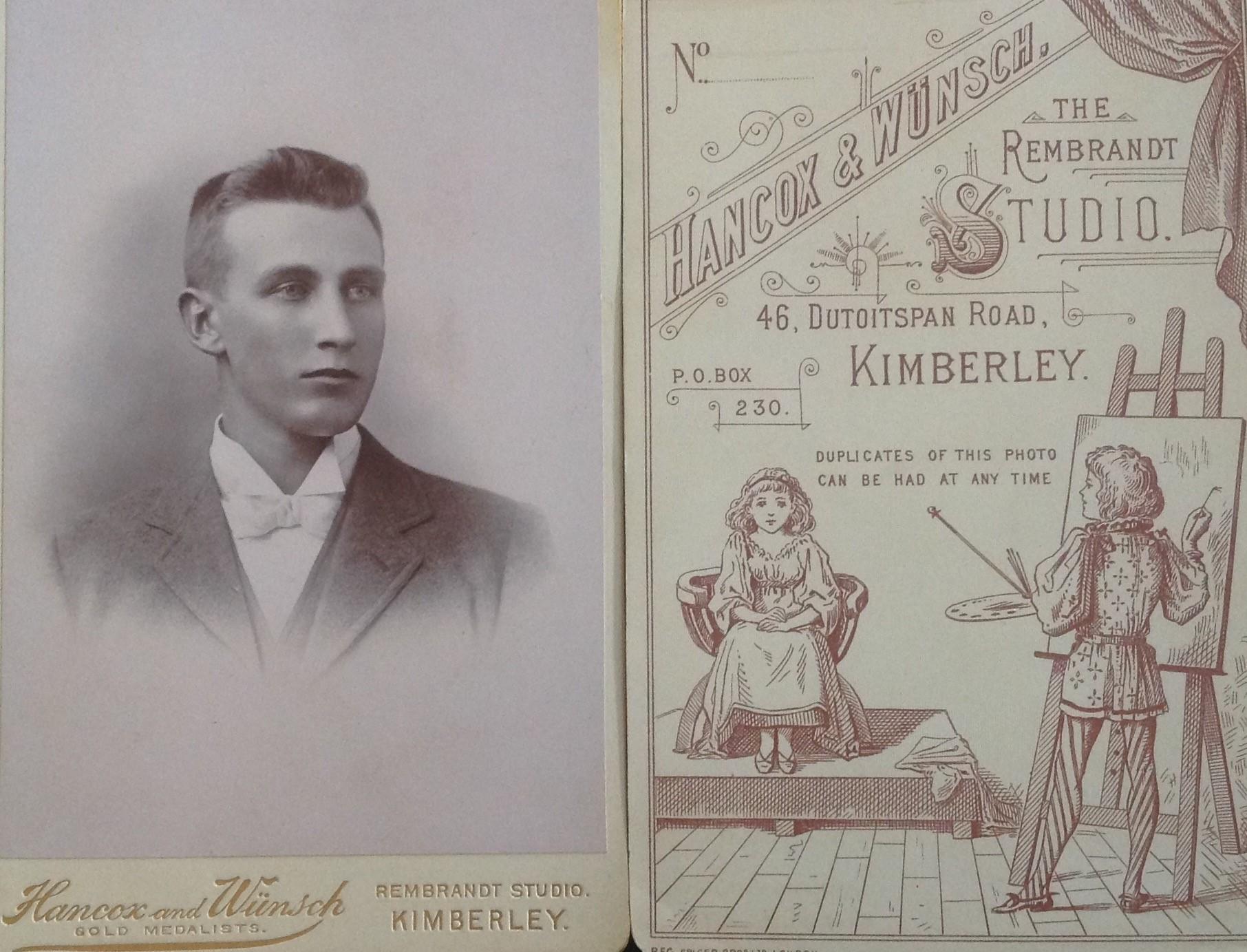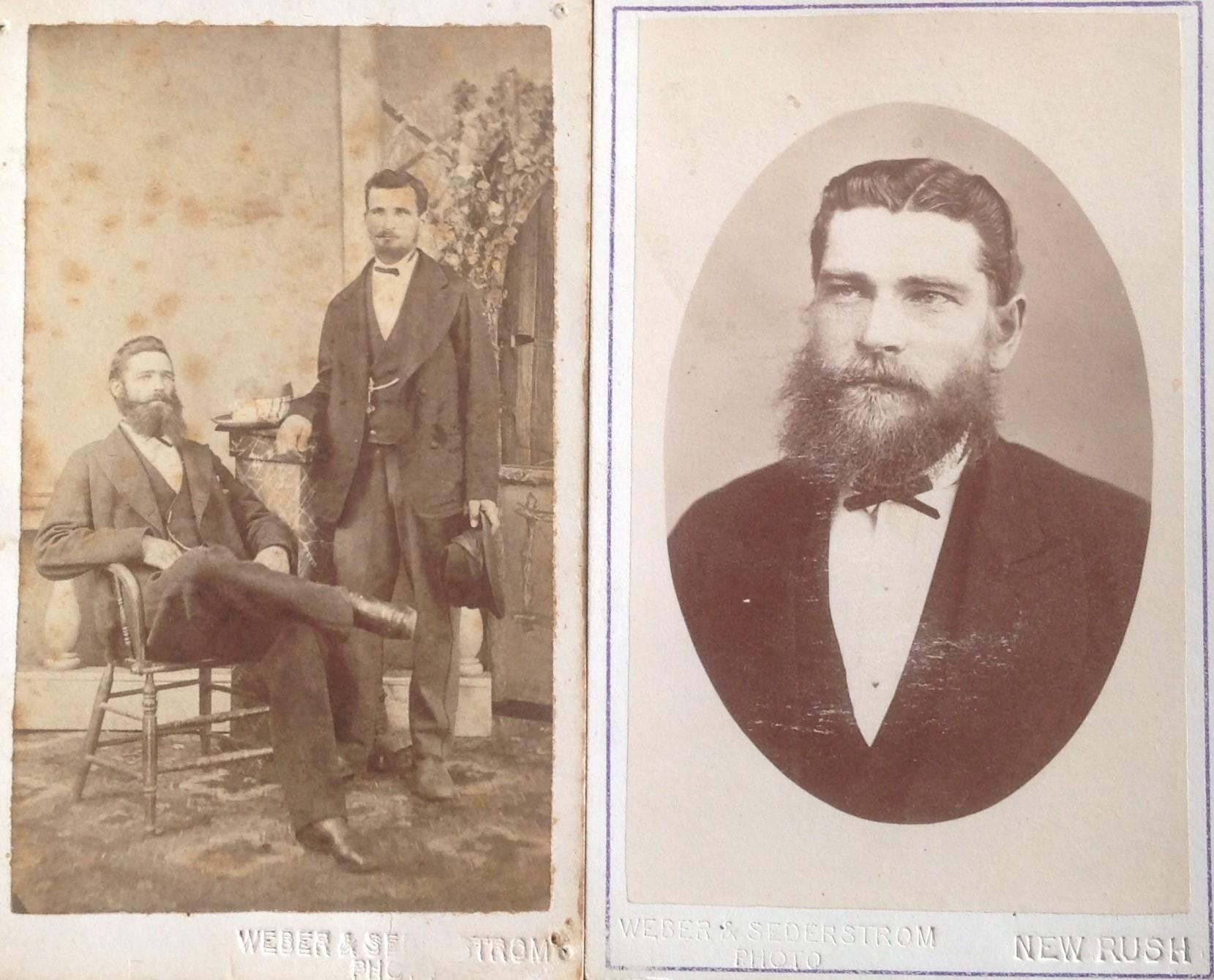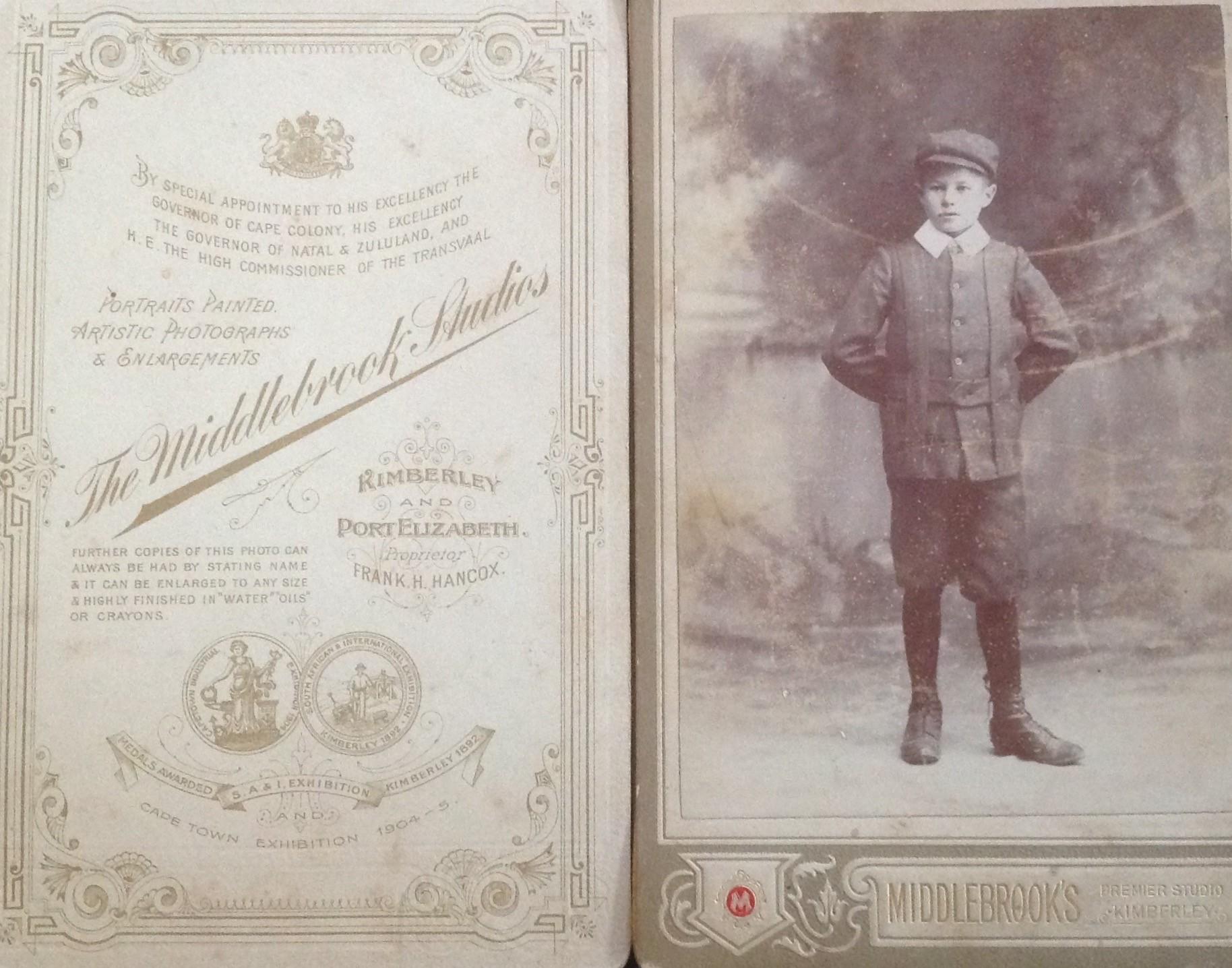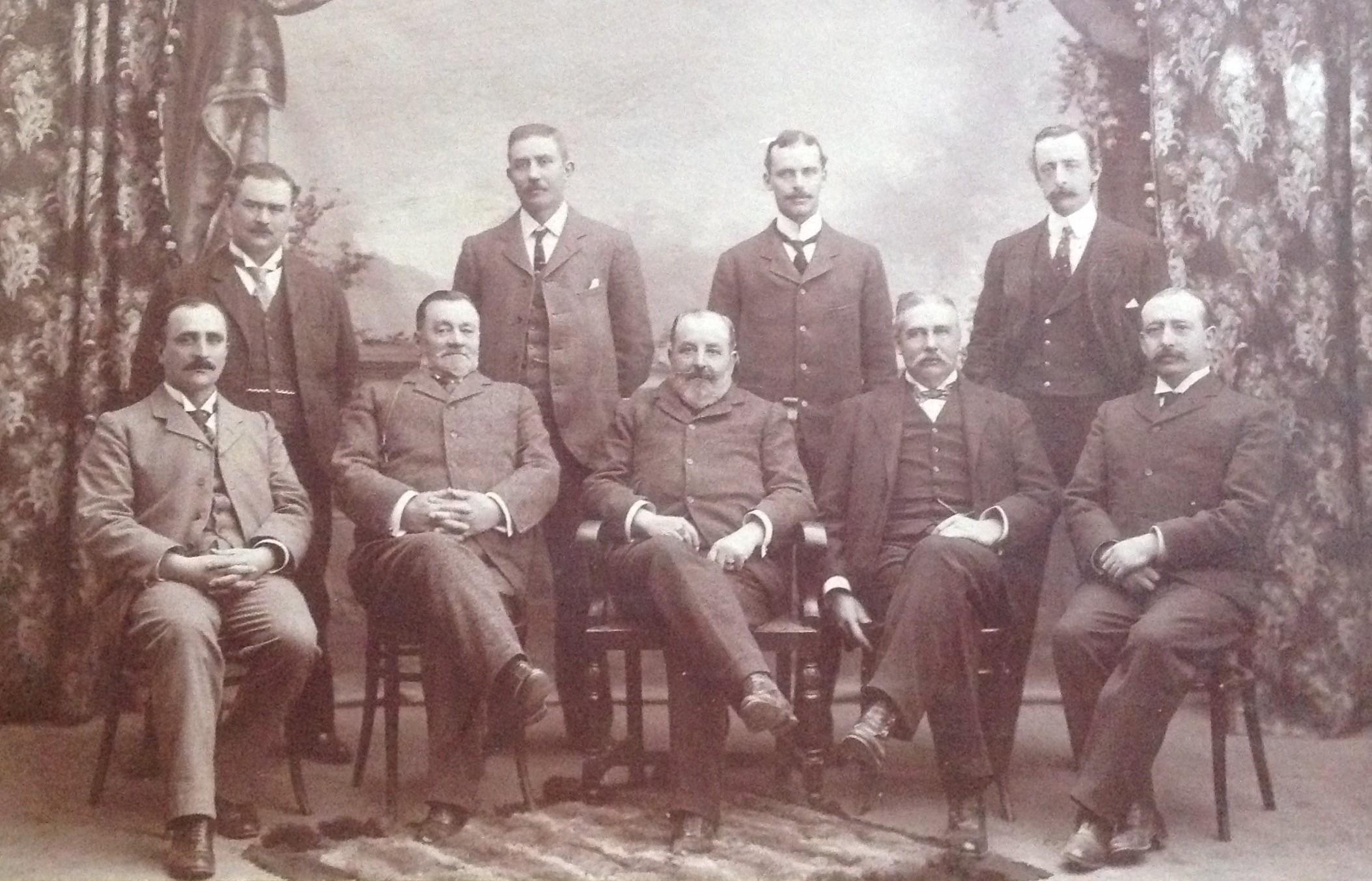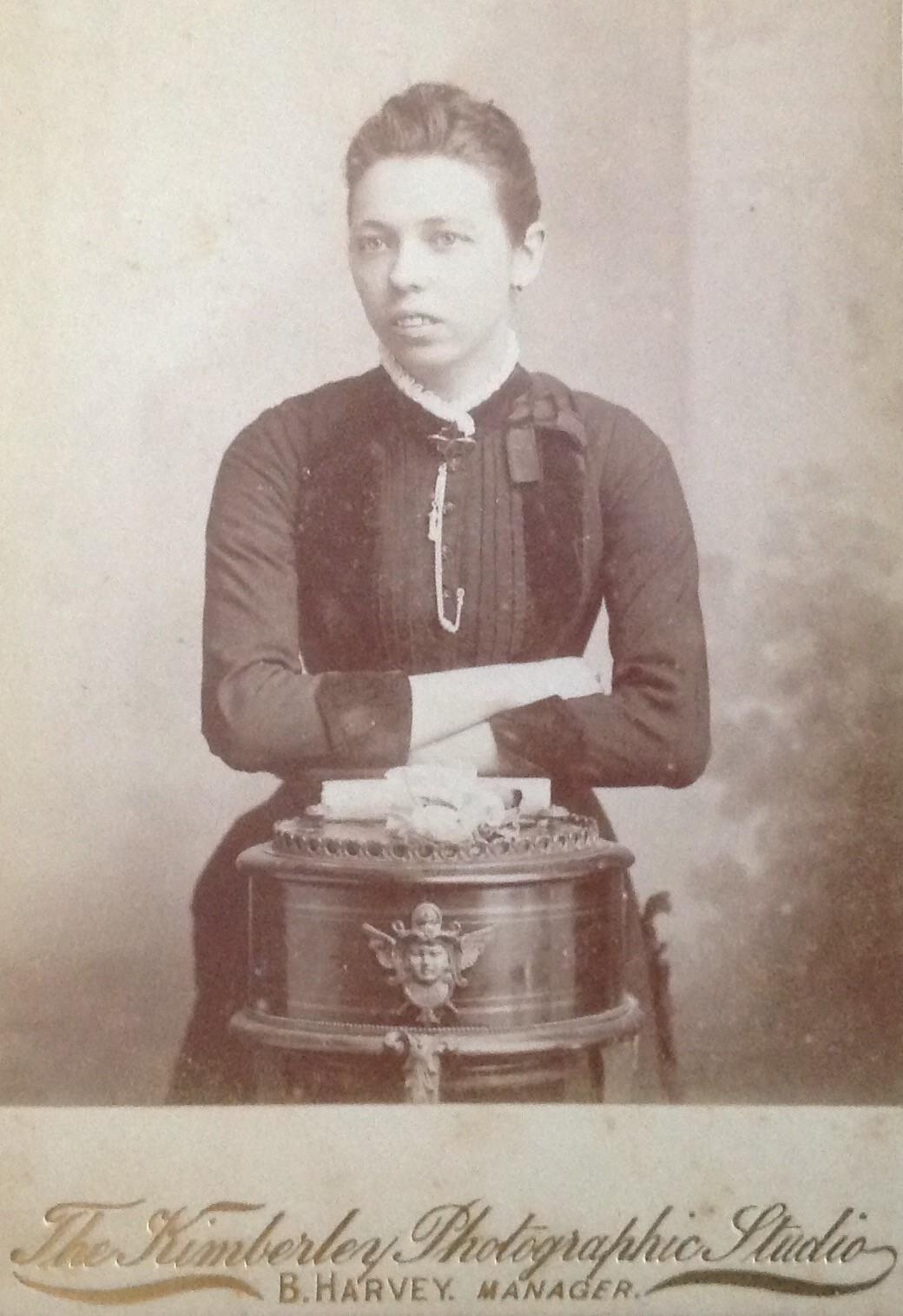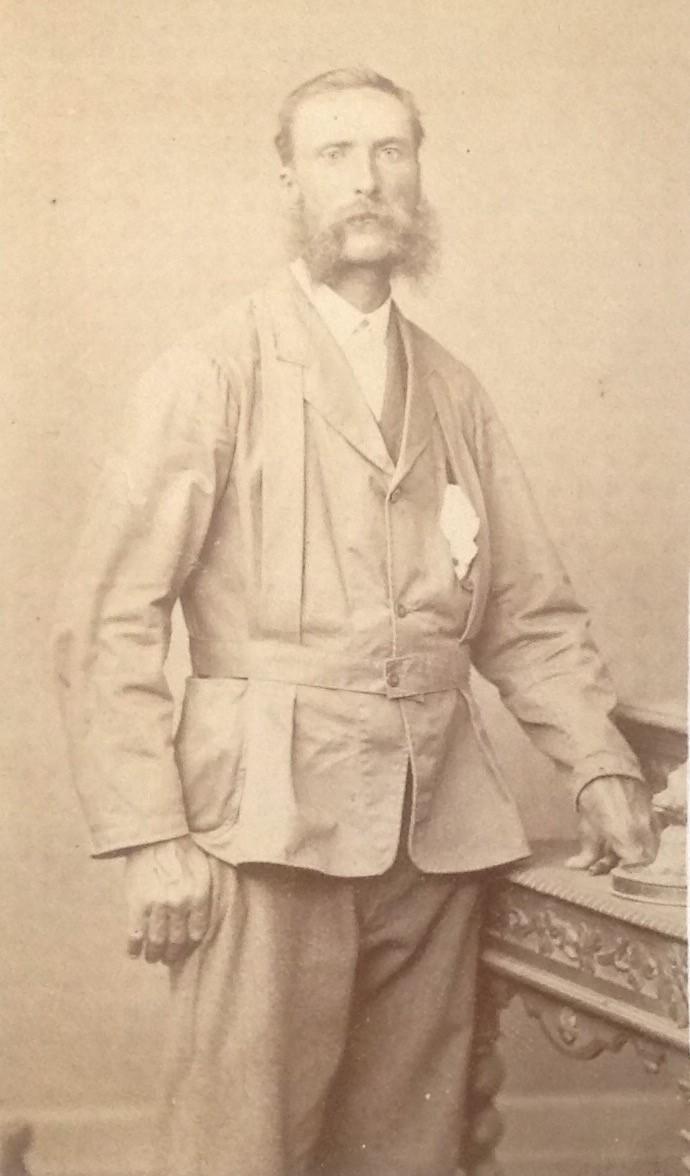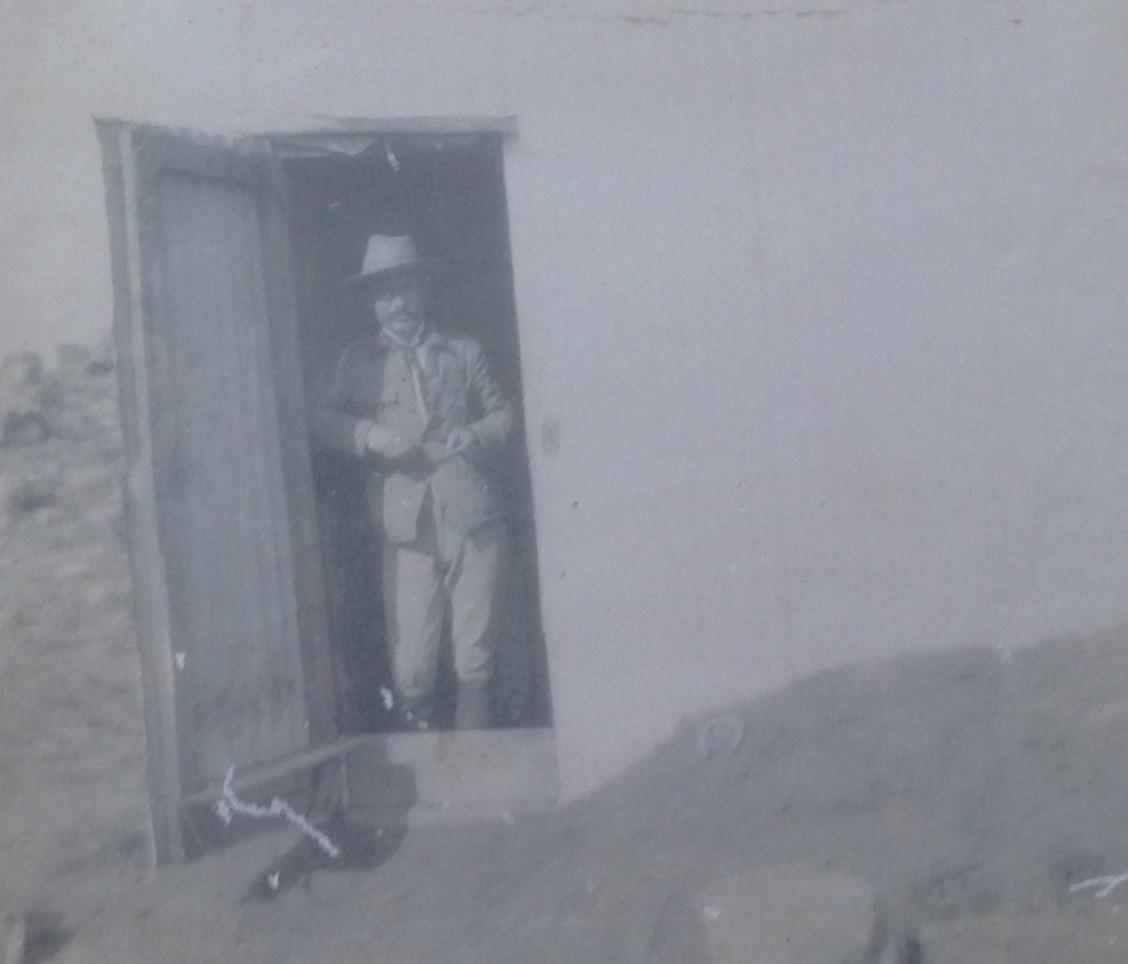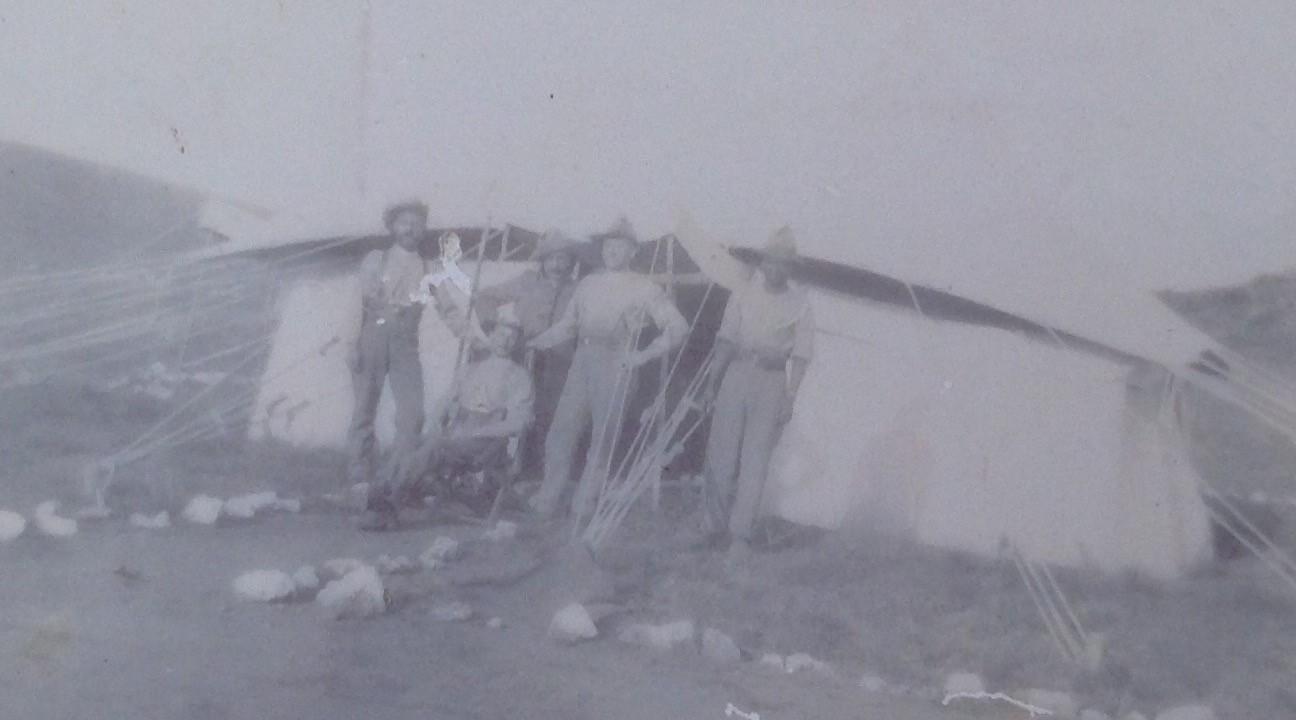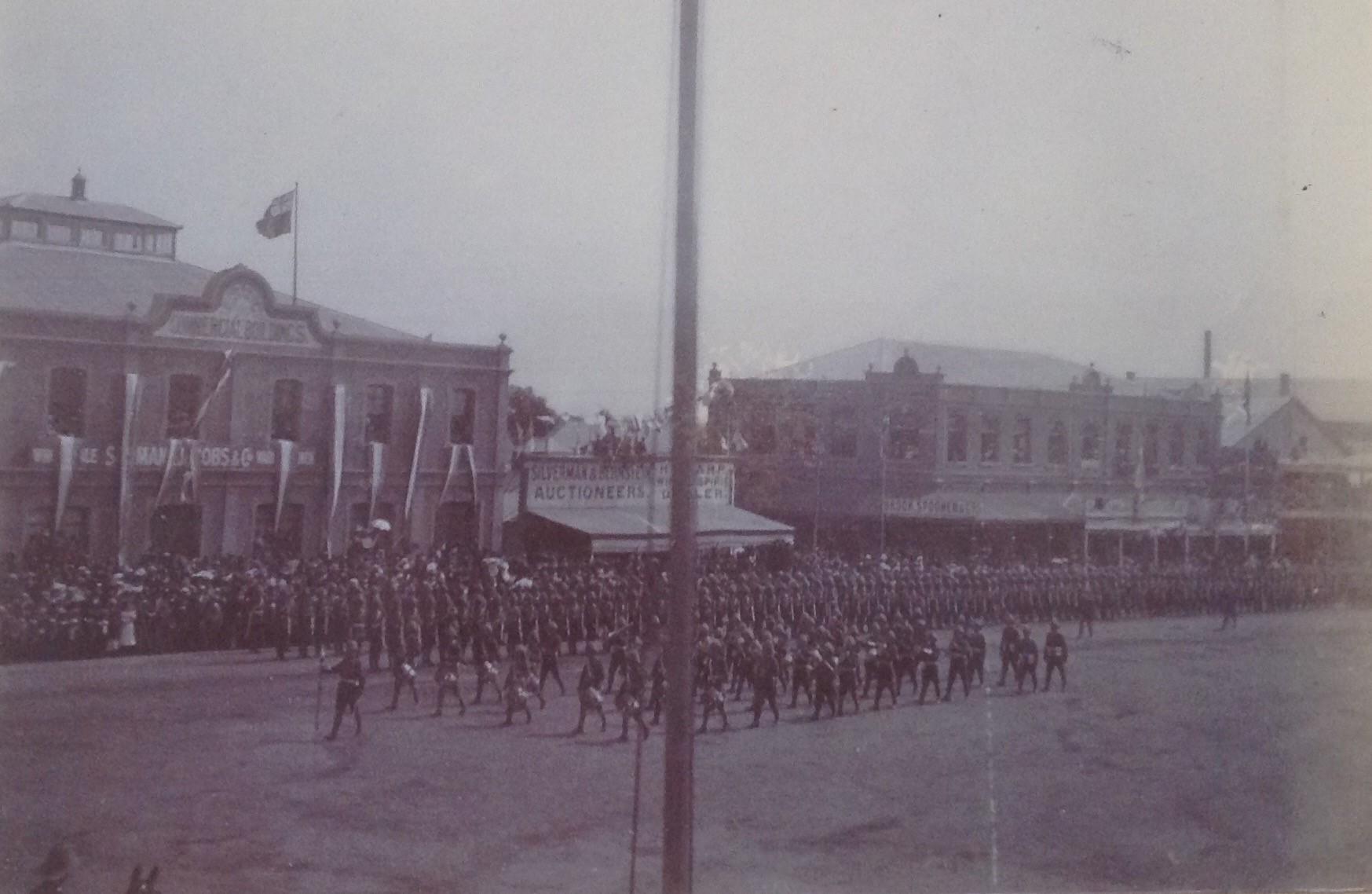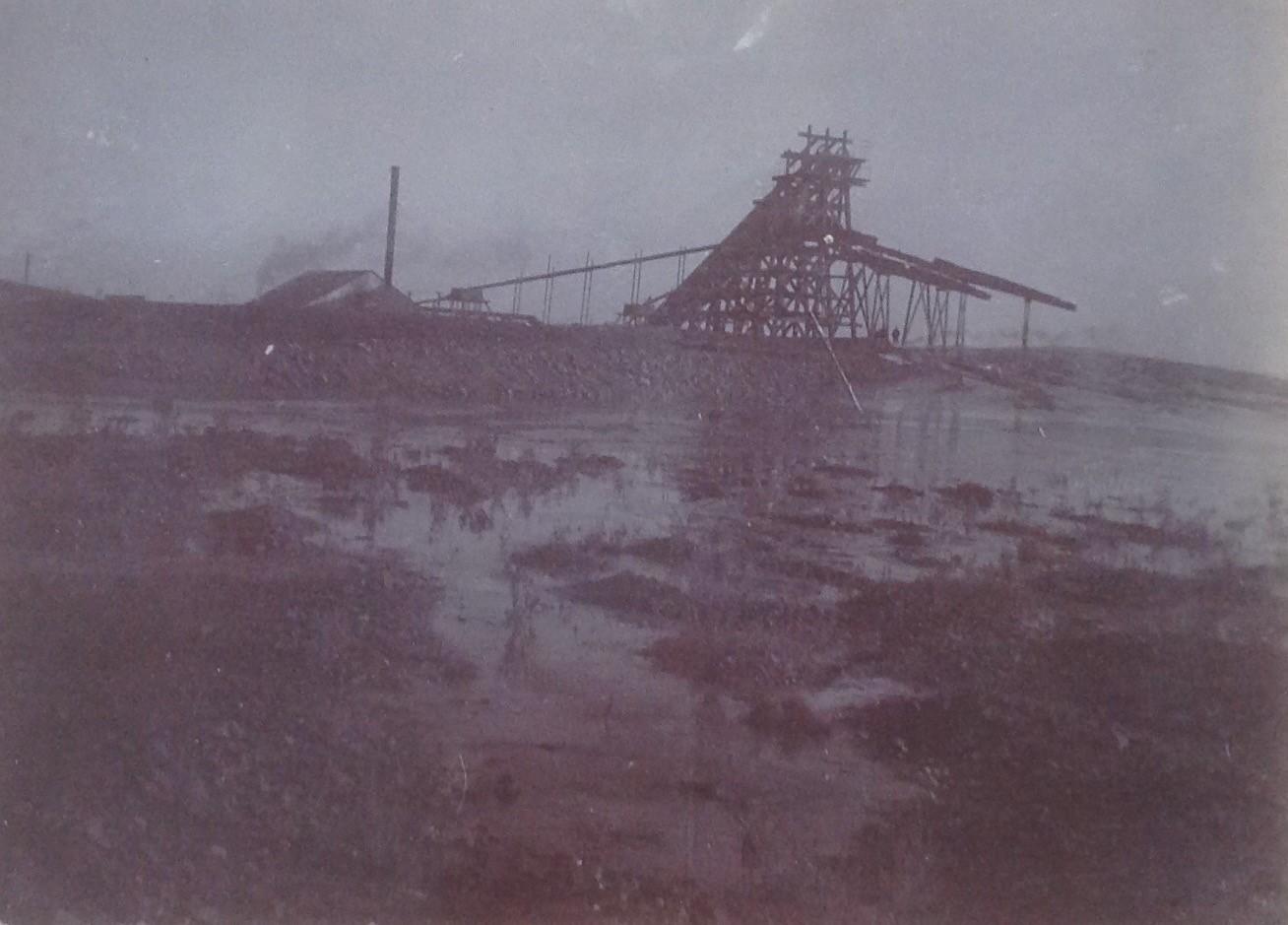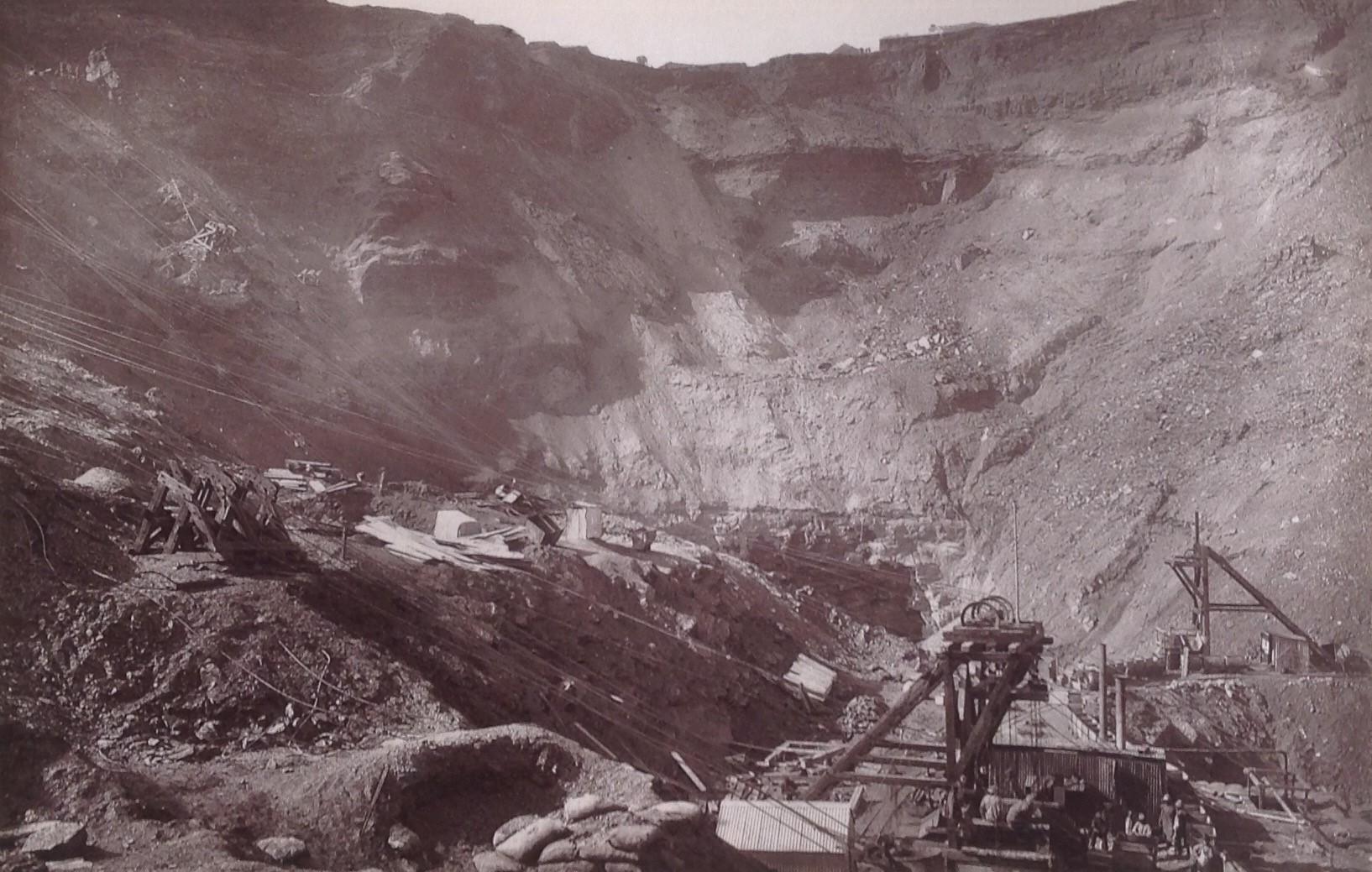
Disclaimer: Any views expressed by individuals and organisations are their own and do not in any way represent the views of The Heritage Portal. If you find any mistakes or historical inaccuracies, please contact the editor.
1. Introduction
Taking photographs some 150 years ago was a significantly more complicated process compared to today. It was hard work and required absolute dedication from aspirational photographers.
These pioneer photographers endured tough times, yet they left us with scenes of significant historical importance some of which have been preserved for posterity. Sadly, these photographers have largely been forgotten in that we freely use their images in articles and publications to support our own historical constructions without acknowledging the original photographic artist.
One of these early historical scenes and human activities that attracted treasure hunters and aspirational photographers alike was the frenzy that ensued following the discovery of a single shiny stone in March 1867 in South Africa.
A second stone found shortly thereafter was taken to Cape Town, where it was photographed by the well-known photographer SB Barnard. These images, in carte-de-visite format, were in high demand and were sold to the public in 1867 (Bull & Denfield, 1966).
The diamond, The Star of South Africa, was discovered two years later (March 1869) and is recorded to have been photographed by Port Elizabeth-based photographer James E. Bruton and later also by the Cape Town-based South African Photographic Saloon (to which a Kimberley-based photographer, Sederstrom, was initially linked). It was this diamond that finally resulted in the frenzy searching for the elusive stones in 1869.
While tribute has been paid to the early-day Kimberley pioneers, the contribution made by photographers has sadly been neglected. These early photographers ultimately also played a significant role in the economic development of Kimberley.
Besides an entire chapter in Bull & Denfield (1966) on Kimberley-based photographers between 1869 and 1873, little is known about the Diamond Field photographers. This article attempts to shed some additional light on this fascinating group of photographic artists.
Bull & Denfield (1966) state that early photographers were adventurous and roving by nature. A few were fortunate enough to have become successful resident photographers in larger centres. Those based in smaller towns, however, found that unless they possessed another occupation, which varied from jewellers, watchmakers, parcel services or artists to restaurateurs, they could hardly make a living from photography alone.
They were forced to travel long distances to ply their trade. As demanding as this may have been, this to them was no hardship in that visiting smaller towns and settlements all became part of a day’s work.
The opening of the Diamond Fields found photographers ready to join the heterogeneous band of fortune hunters. Many went as diggers, some taking their cameras with them, traversing the rapidly rising camps and photographically recording the ever-changing scenery.
Even though the first diamond was found in 1869, the big influx of photographers to the Diamond Fields occurred three years later, namely in 1872, when the number of permanent establishments increased from two to seven (all at the New Rush, Colesberg Kopje).
This sets the scene for what happened at the Diamond Fields next.
Photographers came from all over South Africa, and even abroad, to participate in the fortune-hunting and the dream of obtaining immediate wealth.
Photographers were well-represented among the early diamond pioneers. Bull and Denfield (1966) suggest that by the end of 1872, nearly 12% of Cape photographers had visited the Diamond Fields in one way or another.
Multiple new dry diggings became more viable, such as those at De Beers (opened in May 1871), Du Toit’s Pan (where the first diamond was found in September 1870), Bultfontein and Colesberg Kopje (where the first diamond was found in July 1871), resulting in the initial diggings at Pniel and Klipdrift losing their importance. Lines of wagons and carts, photographers in tow, moved away from these earlier diggings next to the Vaal River towards Colesberg Kopje (today known as Kimberley), where a frenzy ensued to peg claims.
Photography at the time was primarily of the outdoor type, where photographs of claims, tents, diggings and general views were the primary demand.
Many resultant photographs of the early Diamond Field mining activity and its people have survived and occasionally still surface.
Sadly many of these outdoor photographs, such as those shown below, contain no photographer details. This maybe because the photographer elected not to engrave his name on the glass negative or that the photographer name was cut off at the time of developing the image. While the images remain of historical interest, this does leave a void in identifying and researching the relevant photographer.
Early activity at Colesberg Kopje by unknown photographer
Kimberley market by unknown photographer (circa 1905)
View of Kimberley with mining compound in the foreground. Photographer unknown. Photograph numbered B245
Photograph of canon Long Cecil by unknown photographer. This professionally captured photograph would have been purchased from a studio during the Kimberley Siege in that it was found in a family photograph album.
2. Different Diamond Field locations defined
Diamond Field photographers were already active for some four years before Kimberley was officially named in 1873.
The list of photographers to follow spans the entire Diamond Fields. To prevent possible confusion, it is crucial to define the various areas in the Diamond Fields briefly:
- Alexanderfontein – A short distance from Kimberley, no diamonds of any significance were found on this farm. The main road from Cape Town passed this farmland which contained a natural lake. The Roadside Hotel was built on the farm as early as 1872
- Beaconsfield – A mining camp that was initially known as Du Toits Pan. This camp, which later became a town in its own right, was amalgamated into greater Kimberley during 1912
- Bultfontein – neighbouring mine and mining camp
- Colesberg Kopje (New Rush)– Became the Kimberley open mine
- De Beers – neighbouring mine and mining camp
- Dutoitspan – neighbouring mine and mining camp. The name changed to Beaconsfield in 1883. Du Toitspan Road was an earlier Kimberley street linking the two camps
- Kimberley – Initially known as New Rush but became Kimberley in 1873 (named after the Earl of Kimberley – British Colonial Secretary). The town became a municipality in 1877
- Kenilworth – a village on the outskirts of Kimberley, designed for De Beers employees
- New Rush (Colesberg Kopje) – Original name of the diggings which reached its pinnacle by 1882 – with a heterogeneous population of between 40 000 and 50 000 people
- Pniel – Where first diamonds surfaced – next to the Vaal River. Focus moved from here to Colesberg Kopje
- Klipdrift – Where first diamonds surfaced – next to the Vaal River. Focus moved from here to Colesberg Kopje
3. Diamond field photographers
Key to the list of photographers provided below is the inclusion, where available, of original photographs as contained in the Hardijzer Photographic Research Collection (HPRC) produced by each photographer listed to support the text.
Professional photographers who have been to the Diamond Fields can be divided into five categories, namely:
- Those who went to the diamond field as diggers and not as photographers;
- Those that occasionally visited the diamond fields to photograph digging activities;
- Those that settled there for a short period (less than a year);
- Those that resided in town (more than a year);
- Assistant photographers (who would generally be exceptionally difficult to identify).
The last four categories referred to above have been combined into one list below in that it cannot be determined with certainty as to the period most of the photographers were active at the Diamond Fields.
The value of photographs captured by many unknown amateur photographers, especially during the Siege of Kimberley, also adds significant historical value. While they did not form part of the research, a few amateur photographs have been included at the end of this article.
Kimberley also holds another unique photographic historical snippet - The first recorded amateur Camera Club meeting in South Africa took place at the Gresham Hotel in Kimberley on 9 May 1890 (Bensusan, 1966).
Richard Cox from Plymouth (England) decided to support two Kimberley based photographers, namely Middlebrook and Harvey.
3.1 Photographers that visited the Diamond Fields as diggers
One of the initial groups to “visit” the Diamond Fields included the photographer Frederic Samuel Philipson Stow. After this initial visit he and his party returned to Cape Town with fifty diamonds. He would later play an important role in the establishment of a great mining concern, namely the De Beers Consolidated Mines Limited. Whether he ever took any photographers of the Diamond Fields is not known.
William Lawrence, of the Cape Town-based photographic establishment Lawrence & Selkirk, also visited the diamond fields during 1869, only to settle there later. He eventually played an active part in the formation of the Kimberley municipality and was one of the earliest members of the town council. According to Bull & Denfield (1966), photographs taken by Lawrence at the time have been lost.
Colesberg-based photographer Tiberias Benjamin Kisch, who set up his studio in Colesberg as early as 1863, also went to the Colesberg Kopje in search of the elusive stones at Colesberg Kopje. Whether he ever had any success in his treasure hunting is not clear. It is also unlikely that he captured any photographs on his multiple visits to Colesberg Kopje. See a more detailed article on the three South African based photographers named Kisch (click here to view).
Other photographers that sought their fortune as diggers during the latter part of 1870, included, Matthew Hale (who has been based in multiple South African towns), Thomas Guthrie Towert (from Cape Town), Frederic Stow (from Queenstown – father to FSP Stow).
Grahamstown photographer, Frederick Henry I’ons also arrived at the Diamond Fields as a digger in 1871. He seemingly “fared well” as a digger and returned to Grahamstown a few months later.
3.2 Individual Kimberley-based Photographer List
The list provides interesting insights into the photographers' lives. Whilst most of the photographers on the list originated from the United Kingdom, some were South African-born, some Swiss and one Russian. One led a double life while another found it appropriate to change his surname, yet another held an extensive criminal record. Times were hard, in that one photographer changed career and became a convict guard, while another elected to follow a career in catering. Some died at a very young age. In the list provided below, at least 4 photographers passed away before their 50th birthdays.
Earning an income from photography was extremely challenging and competitive at the best of times, yet various attempts at establishing partnerships are evident in the Diamond Fields. Some of these partnerships lasted, while some did not stand the test of time. Personally, I am curious as to why the failed partnerships did not last.
The list provided below does not purport to be a complete list of photographers based in Kimberley between 1869 and 1915. The photographer Starkie, for example, who happens to have been a Kimberley-based photographer, became the most recently identified South African-based photographer in the Hardijzer Photographic Research Collection (HPRC). The Kimberley Africana Library also provided a newspaper clipping confirming the existence of another previously unidentified photographer, namely Cherer Smith.
Ongoing research will expand/improve this list – The list therefore purely remains an initial attempt of reflecting on earlier photographer activity in Kimberley.
The primary reason for only listing photographer activity before 1915 is that the Cabinet Card format photograph was in use in South Africa until around 1915. The photographers listed below, therefore mainly produced carte-de-visite and cabinet card format studio format photographs. This would not be to the exclusion of standard print formats mainly produced in outdoor/landscape photography.
The list below contains the names of 44 individuals, 9 partnerships and 16 studios. To date, for 24 of these entities, the Hardijzer Photographic Research Collection (HPRC) does not contain any original images. In a few instances, some photographs by these elusive photographers are curated by the South African National Archives.
An interesting comparison is that Pretoria, during the same period, had some 68 photographers and 10 partnerships (click here to view).
Photographer names
With some of the photographers listed below, some deductive reasoning had to be applied with some photographers whereby assumptions had to be made around selected individuals, such as Desmond and Evans for example.
Each photographer’s year of birth and year of death, where it could be determined, has been recorded next to each name.
- Bennett Marcus (1866 - ?)
Little information is available on the British photographer Marcus Bennett who based himself in South Africa during the Anglo-Boer war.
He was born in England in 1866 and got married in England in 1908, a few years after his return from South Africa.
The South African National Archives curate several Kimberley Siege photographs captured by Bennett.
Before the Kimberley Siege (1899-1900), he seems to have initially based himself as a photographer in Johannesburg (in 1897). Bennett in all probability returned to England after the Kimberley Siege.
One archival record indicates that Marcus Bennett submitted a claim for goods seized by the Boers at 14 Streams (near Kimberley).
Bennett co-published a photobook titled: “The Transvaal through a camera” around 1900.
- Berard Joseph (1853 – 1913)
Berard is one of at least three Swiss national citizens that were active as photographers at the early stages of the diggings at the Diamond Fields. The close connection between the Swiss photographers in South Africa is evident in that Berard signed fellow Swiss photographer Weber’s death certificate in Cape Town in 1886.
Berard was initially based at Jagersfontein (1883-84), then in Kimberley for 2 years (1886 -87). Between 1887 and 1888, he was active in Cape Town before moving on to Klerksdorp (1890 – 1891). It is not known where he based himself between 1889 and 1890.
His studio at the Diamond Fields was on the Main Street of Beaconsfield between 1886 and 1887.
His surname has also erroneously been spelled as Beddard or Bevard which complicated research even further.
Berard passed away at a relatively young age in Johannesburg in July 1913, aged 60.
- Brittlebank Arthur (1843 – 1922)
Other than him being based on the Kimberley Market Square, little information is available on this photographer.
Brittlebank was born in England in 1843. He died in Pretoria at the age of 79. He was seemingly a bachelor all his life.
The Hardijzer Photographic Research Collection holds several images by Brittlebank in poor condition, indicating that he experienced challenges in refining the art of chemical processing.
Carte de Visite format photograph by photographer Arthur Brittlebank (circa 1871). A significant image showing the family of Thomas Tidmarsh. Thomas was killed in action in the battle of Takoon on 24 July 1878. At the time of his death, he was attached to the 3 Diamond Fields Horse unit. His occupation was that of a shoe-maker. On the photograph appears his wife Ann and 5 children. From left Arthur, Ann, Sam, Jennie, Minnie and Edith.
- Caney Williams Laws (1848 - 1923)
Caney was born in 1848 in Caistor, Lincolnshire.
One of three brothers involved in photography, Caney, prior to his arrival in South Africa, honed his skills at the renowned London based photographic studio of Elliot & Fry’s around 1870.
On his arrival in South Africa in the early 1870s he in all probability first assisted his brother, Benjamin William, at his Durban based studio for several months, before being pulled into the Diamond Field frenzy that followed at Colesberg Kopje (Kimberley).
Caney became the first Natal-based photographer to arrive at the Diamond Fields in 1872, and soon set up his “Colesberg Portrait Rooms”.
Whilst based in Kimberley, Caney also went into partnership with fellow Durbanite John Ernst Middlebrook (see Middelbrook below).
Caney was linked to The Art Studio on Du Toitspan Road. This was probably the same studio Middlebrook was at, namely The Premier Art Studio.
Caney married Sarah Agnes Grogan. They had two sons. Sarah passed away on 3 February 1919 aged 75.
Although not related to Kimberley, Caney published a photo album containing 44 photographs, titled: Photographic Views of South Africa. This album was published post-1883.
Caney died in Natal on 6 October 1923, aged 75. Click here to read more.
A Cabinet Card format photograph of unknown gentleman by WL Caney (circa 1890). Caney was also based in Durban and Pietermaritzburg as photographer.
- Caney Ebenezer Edmund (1846 -1910)
The second brother to Williams Caney (above), Ebenezer Edmund Caney, seems to have paid his brother a visit while based in Kimberley, during which Ebenezer captured some photographs of the mining activity in Kimberley. An album produced by him (circa 1890) contains some 24 photographs, amongst them 5 photographs captured by him in Kimberley.
No other significant work produced by Caney whilst in Kimberley has been identified to date, confirming that he was in Kimberley for a brief visit.
He married Kate Agnes Barret on 5 April 1871 in Melbourne. They had one daughter, Mary (Minnie) Lilith (Married Walter).
He passed away on 5 November 1910 at the age of 65, having accidently drowned (assumingly on the Durban coast).
See link under Williams Laws Caney above for more details around Ebenezer.
- Carey James
Little information is available about this photographer, suggesting that he did not stay in Kimberley for too long in that records indicate activity on Du Toitspan Road for 1889 only. He may only have been an assistant photographer.
- Cerrito Joseph Arthur Julius (1852 – 1888)
Cerrito arrived in South Africa from England in 1880. On his arrival, he is recorded as a commercial traveller. He however soon set up a photographic studio in Queen Street, Port Elizabeth.
While he seemingly left behind a wife/partner and two children on the Isle of Wight, he married Maria Jane Billson in Port Elizabeth on 9 July 1881. The couple had two children.
Other than photographs captured by him in Port Elizabeth, no images confirming his activity in Kimberley have been uncovered to date.
At the time of his death in 1888, Cerrito resided in Elbow Street in Kimberley. His death notice confirms that he was a photographer.
Nisbit (2020) suggests that Cerrito may have been active in Kimberley between 1882 and 1888. If this is correct, Cerrito in all probability did not have his own studio, but either managed a studio on behalf of another photographer or acted as an assistant in a studio.
- Chandler LJ
Little information is available on this photographer. He seems only to have been active during the Kimberley Siege. He numbered his photographs, some of which can be found at the South African National Archives (Kimberley Africana Library).
- Clipp George W
Clipp is viewed as a pioneer Cape Town photographer who as G.W. Clapp initially set up his photographic establishment in Swellendam as early as January 1860. After practising photography for a few years in the Cape Midlands, he returned overseas, where he changed his name from Clapp to Clipp around 1868 and returned to open his new studio, “The Good Hope” Saloon in Cape Town in May 1869.
George Clipp was also one of the earlier photographers to have arrived in Diamond Fields (1870). His country of origin still needs to be determined - probably England.
Before he arrived at the Diamond Fields, he was in partnership with Thomas Peter Sederstrom at the Cape Town-based “South African Photographic Saloon”.
Bensusan (1966) states that Clipp’s wagon hardly failed to attract attention in that it was the most elaborative of its kind to be seen on the fields. On its panels were some amusing oil sketches of locals and colonial scenery, while in front of the wagon, on a pole with a gilded top, was a blue flag with the word “Excelsior” in gold.
Views of the Vaal River and diggers at work were displayed on the sides of the box, and one painting illustrative of Longfellow’s poem, from which the wagon took its name.
Clipp was not very successful on his own and later became an assistant to Charles Hamilton (see below).
No photographs produced by him have been identified to date.
- Daubert Maximillian Alfred (1865-1951)
Though no photographic evidence seems to exist, records indicate that German-born Daubert was based in Kimberley between 1888 and 1889, probably as an assistant photographer at one of the studios.
While he was not a morally upstanding citizen at the best of times, he later settled in Wakkerstroom where he became the town’s main photographer. He also spent some time in the Wakkerstroom jail. Click here to read more.
- Desmond William Augustus (1867 – 1937)
Only one snippet in an early newspaper article suggests that a Desmond was attached to the Talba studio at the time of the Talba studio fire in 1904 (see Talba below).
No additional evidence of his activity has surfaced while active as a photographer in Kimberley.
It is assumed that this is the same Desmond, namely William Augustus, that later settled in Uitenhage as a photographer.
He married Emma Davis Taylor during 1895, but she passed away a year later at Uitenhage following typhoid fever. Desmond got married again to Nerta Emmet Edy in 1900.
- Dickinson Charles (1845 – 1930)
Dickinson was born in the UK (Lincolnshire) in 1845.
He was based in Kimberley, Bean Street, for around 6 years (1888-1894), whereafter he moved to Klerksdorp.
He was married to Fanny Dickinson (born Chittenden). She predeceased Charles. He passed away, aged 85, in Johannesburg on 1 December 1930.
The couple had 4 children (1 son and 3 girls).
Cabinet Card format photograph by Charles Dickinson who was based in Bean Street. The photograph may well be a postmortem photograph (circa 1890).
The photographer Charles Dickinson who later settled in Klerksdorp
- Duggan-Cronin Alfred Martin (1874 – 1954)
Duggan-Cronin was born on 17 May 1874 in Innishannon, County Cork, Ireland.
While he was born after diamonds were first found in Kimberley, he would have started taking photographs, albeit at an amateur level, pre-1915, therefore the inclusion of his name on this list.
He arrived in South Africa in 1897 and took up a job as a security officer with De Beers Consolidated Mines in Kimberley.
While on a return visit to Britain in 1904, Duggan-Cronin bought himself a simple box camera. With this camera he honed his photographic skill by taking still-life pictures of flowers, and animal studies including images of poultry and horses. He documented holidays to the Cape, Johannesburg and Bulawayo in the period 1906 to 1914, while also compiling albums from trips to Europe.
Still based in Kimberley, it was while working in the mine compounds that he initially encountered African migrant workers, that stimulated his interest in ethno-photography. His daily interaction with the men who worked in the mines was undoubtedly influential when he later developed an interest in documentary photography.
Duggan-Cronin’s work start receiving attention after he undertook several photographic and collecting expeditions in South Africa and adjacent territories between 1919 and 1939, in the course of which he documented people and rural life throughout the subcontinent.
Duggan-Cronin died in Kimberley on 25 August 1954.
- Evans CEG (1841 – 1919)
Evans is recorded to have taken a carte-de-visite photograph of the 428 ½ carats De Beers Diamond.
A record exists of a Charles Evans that was born in England in 1841. This same Charles passed away in Kimberley on 10 October 1919. His career is recorded as “printmaker/photographer” on his death certificate. It is therefore assumed that this must be CEG Evans. If so, it still needs to be determined what his second and third names were.
Cabinet format photograph of unknown family by Charles Evans (circa 1885). The back of the card is one of the more elaborate pre-printed card stock produced by local photographers at the time.
C. Evans studio on the left in Stockdale Street, Kimberley (circa 1900)
- Ffennell Thomas Guard (1836 – 1871)
Ffennell was born in Cork in England in 1836. He visited the Diamond Fields towards the end of 1869, both as a photographer and digger.
After his initial unsuccessful exploits, he returned to the Diamond Fields with his family later that same year and set up his “Kafuzalum Restaurant.” This restaurant was well known for its “cooling drinks” and was referred to as “The Ice House.”
He combined the art of photography with that of restaurateur. Photography however became of secondary importance to him.
He was married to Jane Jates. He in all probably also became the first photographer to pass away whilst active in Kimberley in that he died at Du Toit’s Pan on 22 November 1871, aged 35. At the time of his death, he left behind his wife and 5 children.
Prior to basing himself in Kimberley, he was also active in the towns of Kroonstad, Winburg, Graaff-Reinet, Colesberg & Philippolis (where he still had a house at the time of his death).
His second name has also been found with the spelling of Garrett, Gurde or Garde.
- Geyer A
Other than a single photograph held by the South African National Archives from around 1896, no further information is available on this photographer. It could well be that he was an amateur photographer.
- Goch James Frederick (1854 – 1933)
James was born on 9 May 1854 in Swellendam. He died in 1933. Whilst no evidence has been found to date, it has been suggested that he opened a studio in Kimberley in 1873. He eventually settled down in Paarl in 1880.
- Goodwin Frank Harry (1878 – 1958)
Goodwin was born in Grahamstown in 1878. He would therefore not have experienced the initial Diamond Field frenzy. He married Evelina Dicks in Grahamstown in September 1903. The couple had 5 children. Evelina passed away in September 1942.
Goodwin had a studio in Bean Street post-1915. He passed away, aged 80 in Fort Victoria, Southern Rhodesia (Zimbabwe today) in July 1958.
Small format photograph of unknown lady by Frank Goodwin (circa 1910)
Small format photograph of unknown men by Frank Goodwin (circa 1905)
Goodwin photograph of unknown men. Note the inscription “Chumbs” as well as the carton dog being held by one of the men. The significance of the dog is not known.
- Gros Henri Ferdinand (1842 – 1915)
An advertisement in the Diamond News confirms that Swiss-born Gros took over the photographic business of Weber and Gros in Bloemfontein in 1872.
Shortly after Bloemfontein, or in tandem, Gros also opened The Superb Saloon studio in 1872 at the Diamond Fields. According to an advertisement placed by Gros, this studio was located between LW Lidkid’s and the Cape Town Emporium at New Rush.
Whilst at the Kimberley diamond fields, Gros, in partnership with the Gray brothers, produced a photographic album titled The Diamond Fields (circa 1872).
In April 1873 Gros advertised in the Diamond Field Advertiser that he was about to leave for his native land and that he would only practise photography in South Africa for another month.
Gros however proceeded to settle down in Pretoria in 1875 after he advertised in December 1874 that he had just arrived from the Diamond Fields. This suggests that he returned to Kimberley for a short while on his return from his homeland or that he undertook a photographic journey through the Transvaal.
Described as a photographer entirely devoted to his art, Gros passed away in the country of his birth in August 1915 at Villa Pretoria, Grand Lancy, a village in Geneva. Click here to read more.
The start of the Kimberley Hole (New Rush). An early HF Gros photograph (circa 1872)
Early Kimberley (New Rush). Photograph by HF Gros (circa 1872)
Carte-de-Visite format photograph of unknown gentleman by HF Gros (circa 1874)
Photograph of the Swiss photographer Henri Ferdinand Gros. This photograph was captured after his return to his homeland.
Weber & Gros carte-de-visite format photographs. The men on the photograph on the left are AJ Luttig (left) and JH Blignaut (right). Both Gros and Weber eventually ended up in Kimberley following their partnership in Bloemfontein. It is not clear whether their partnership continued, albeit for a short period, whilst in Kimberley during 1871/2. These photographs may therefore originate from there partnership while still in Bloemfontein.
- Hamilton Charles Crake (1828 – 1877)
Hamilton was born in England on 25 September 1828. He died, aged 48 on 23 January 1877 at Du Toitspan (Kimberley). The cause of death at such a young age is unknown.
Hamilton was a man with several business interests. He arrived in Port Elizabeth from London in December 1858 to open his photographic rooms. He did however not restrict himself to the art of photography in that in tandem he soon opened a parcel delivery service, whereby all parcels and packages entrusted to him would be placed in water-tight cases free of charge.
As a decorative artist, he also undertook signwriting and manufacturing of show cases and signboards. Later he also set up an ironmongery warehouse (Bull & Denfield, 1966).
He left Port Elizabeth in June 1861, and for the next few years toured the Eastern Cape and Orange Free State. He captured a comprehensive series of large views of Bloemfontein during September 1866.
During 1867, whilst in Cradock, he captured views of the town’s stores and residences. These were issued as a series of 50 carte-de-visite.
Hamilton also came up with several interventions which all fell through due to a lack of capital.
Hamilton has been described as the first important resident photographer of the Diamond Fields. He arrived at the Diamond Fields from Cradock in May 1870 where he attempted his hand at some prospecting as well.
As a photographer he initially had little opposition from fellow photographers – they arrived later in larger numbers.
Hamilton proceeded to record the first comprehensive scenes of life at the Diamond Fields. These included the countryside, various parties at work, including their various modes of operation along the river bank.
A large panorama (which was a rather unusual image for those years), embracing the whole of the diggings was one of his achievements. Prominence has also been given to his photograph of a box of ninety-six diamonds found by one fortunate digging party.
Examples of his photographic work were sent to Cape Town where they were on show at the South African Photographic Saloon (Clipp and Sederstrom studio), while James Bruton also displayed these photographs at his Port Elizabeth-based studio during August 1870.
Hamilton later set up his studio at the Hebron mining camp from where he photographed most of the Diamond Fields activity during early 1871.
The first permanent studio to be established away from the old Vaal River mining camps was again that of Hamilton. He came down from Hebron in July 1871 and opened his Portrait rooms on the Market Square at Du Toit’s Pan. Not only did he focus on photography but also applied his engineering mind by inventing an automated self-acting searching and sorting machine for diamonds.
It has been suggested that Hamilton also went into partnership with the Swiss photographer, Weber. No evidence of this partnership has been found to date.
Bull & Denfield (1966) probably obtained the title of their book “Secure the Shadow” from Hamilton’s logo captured on the back of some of his carte-de-visite, namely “Secure the Shadow before the substance fails”.
Carte-de-Visite format photograph by Charles Hamilton. This was not a pre-printed stock card. Hamilton wrote his details on the back of the card. The man seated in the middle is A. Louw. The photograph is numbered 262. Note the carpet made of jackal skin (circa 1875).
Carte-de-Visite format photograph of unknown girl and her dog by Charles Hamilton (circa 1880)
- Hancox Frank Heeley (1870 – 1909)
Hancox was born in England (Liverpool) in 1870. It is not clear when he arrived at Kimberley, but he was certainly the most active photographer during the Siege of Kimberley during the Anglo-Boer war period. During the bombardment of Kimberley, his studio, The Premier Studio, was hit by a bombshell. He also published a photographic book titled The Siege of Kimberley 1899 -1900 – Through Kimberley Siege.
On 16 April 1902, Hancox married Ethel Chard Nelson in Grahamstown.
The couple had two children, Harold Nelson & Marry Ray.
Hancox later took on the Middlebrook Studio and retained the original name, The Middlebrook’s Studio. It is assumed that he ran both studios in Kimberley at the same time. Why Hancox elected to continue the studio name in Middlebrook’s name is unclear.
He also had a studio in Port Elizabeth. This suggests that he must have had several assistants in the various studios. He was also based at the Rembrandt Studio in Kimberley (see Phokwane campaign image below) with fellow photographer Wünsch.
During 1904/5, Hancox participated in the Cape Town exhibition where he was awarded a medal.
He also generated additional income by publishing picture postcards.
Hancox passed away at a relatively young age (aged 39) in the Kimberley Hospital on 24 February 1909 following typhoid fever. His two children were only 5 years and 9 months old at the time of his death.
A Frank Hancox photograph (attached to the Rembrandt Studio) of soldiers during the Phokwane Rebellion in 1896/7. The uprising was mainly due to misunderstanding after the police had to kill black-owned cattle due to the rinderpest pest at the time.
- Harris Robert (1858 – 1931 verify)
Harris was the Port Elizabeth-based photographer who, like several others, was a visiting photographer to the Kimberley mines during the mid-1880s.
Harris has been described as one of the most accomplished commercial photographers operating in South Africa in the latter part of the 19th century, yet so little is known about him.
Harris had his first studio in Donkin Street, Port Elizabeth between 1880 and 1890. It has been suggested that he was also in partnership with Thomas McNaught between 1891 and 1894 – at the same address.
Harris published a photographic book in 1888 which includes one hundred and four photographs – selected from two thousand negatives. Harris states in the introduction of this book that the production of this book was undertaken with the aim to convey a general idea of the scenery, gold and diamond mining districts, mines, seaports and the native industries and life of South Africa.
What makes his visit to Kimberley significant is that according to Pointon (2018), Harris produced a series of albumen prints showing the various stages of body searching that black labourers in De Beers diamond mines were obliged to undergo by state ordinance enacted in 1883.
The Harris album produced in 1888 does not have any of these images included.
On the back of his Cabinet Cards, post-1888, Harris indicates that the South African album has been published (in reference to his 1888 publication).
Harris has been awarded numerous awards for his photographic artistry. In 1881 he was awarded a first-class award in England, in 1884 a first-class diploma at the Cape Town exhibition, in 1885-1886 a first silver medal at Port Elizabeth as well as an award at the Colonial and Indian Exhibition in London in 1886.
Not only relying on studio-based photography, Harris also had a different approach to photography in that he advertised in the General Directory and Guidebook for the Cape of Good Hope of 1883 that he is willing to take a wide range of photographs, namely farms, houses, monumental tablets, boats, horses, dogs, birds’ etcetera.
It is also known that Harris had photographed Port Elizabeth and its surrounds extensively in that he produced two books along these lines, namely: Photographic Views of Port Elizabeth and neighbourhood (1876 - with 26 images) and Photographic Album of South African Scenery, Port Elizabeth (188? – with 108 images).
While the following aspects are inconclusive at this point, in that no records have been retrieved to confirm such, Harris seems to have been born in London in 1858 and immigrated to South Africa in 1880. He seemingly died in Port Elizabeth in 1931.
Kimberley mine – central shaft - By Port Elizabeth based photographer Robert Harris (c1888)
Kimberley Diamond mine with town in the background - By Port Elizabeth based photographer Robert Harris (c1888)
Du Toits Pan Road scene – By Port Elizabeth based photographer Robert Harris (c1888)
Queens Hotel in Kimberley – By Port Elizabeth based photographer Robert Harris (c1888)
The Kimberley Club in Du Toitspan Road (established August 1881). Photograph by Robert Harris (c1888). The Middlebrook studio was based across the road from the club.
Washing gear at the Bultfontein diamond mine. Photograph by Port Elizabeth based photographer Robert Harris (c1888)
Kimberley market. Photograph by Port Elizabeth based photographer Robert Harris (c1888)
Photograph by Robert Harris (c1888). Washing Gears and floors at the Kimberley mine
- Harvey Benjamin (1846 – 1898)
Harvey was born in England in 1846. In 1877 he married Emily Thompson in Uitenhage. The couple had two sons, Alexander Evans Harvey (who died aged 20) and Arthur Thompson Harvey.
He clearly could not settle down as photographer for long in that he was active as either an assistant photographer or a photographer in Grahamstown (1879), Port Elizabeth (1881), Uitenhage (1882) and Cape Town (1886/1887) before settling down in Kimberley where he was the manager at The Kimberley Photographic Studio on Du Toitspan Road between 1888 and 1894.
It is not known where Harvey resided between 1894 and 1898. He however passed away in Cape Town on 22 May 1898 at the young age of 52. His wife Emily already pre-deceased him at the time of his death.
Two Cabinet format photographs of unknown sitters by Benjamin Harvey
- Howard Thomas Hassall (1842 – 1921)
Born in Smithfield (Orange Free State) in 1842, Howard died, aged 79 in Grahamstown on 7 December 1921.
One source suggests that Howard opened his studio in December 1870, in doing so he became the second resident photographer of the Diamond Fields. He initially learned the skill of photography as an assistant to Port Elizabeth-based photographer James Bruton following which he practiced the art of photography in Somerset East from July 1868.
Howard, in an advertisement, stated that he opened his studio at the New Rush during March 1872 at the entrance to the Camp by Middle Road from Dutoitspan.
Based on the above, it seems that he may have had two studios.
He visited the camps with his wagon and portable studio. His photographic services could also be obtained by booking an appointment via the Diamond News office.
Howard only remained at the Diamond Fields for two and half years before he moved on again.
Howard married Mary Emily Leonard in Somerset East on 30 April 1879. The couple had three sons, Claude Leonard, Tom Cecil Leonard & Harold Leonard.
- King WD
No information is available on this photographer who was based at Beaconsfield. One photograph is curated by the South African National Archives (Kimberley Africana Library).
- McKnaught Thomas (1857 – 1928)
McKnaught was Scottish-born (Wigtown). His name has also been spelled McNaught or TM Naught. He arrived in Cape Town via Warwick Castle from England around September 1881 (Safier, nd).
McKnaught was initially active in Somerset East before moving to Port Elizabeth, where he partnered with Harris, before moving onto Kimberley.
In Kimberley, McKnaught married Elizabeth Bottomley on 4 October 1886. The couple had three children, Gordon Kenworthy (born 1888), Jeanie (born 1892) and Maisie Morag (born 1903).
During 1886, McKnaught was based at two Kimberley studios, namely The Art Studio of Photography and The Caledonian Studio. Both these studios were on Du Toitspan Road. It is not clear whether this is the same studio which just changed names or whether McKnaught was an assistant photographer at these studios. In 1890, he also had a studio in Woodley Street.
McKnaught died on 22 August 1928 in Port Elizabeth, aged 71.
Two cabinet card format photographs of unknown sitters by Thomas McKnaught (circa 1898).
Carte-de-Visite format photograph by Thomas McKnaught (circa 1880)
- Mee Joseph Robert (1854 – 1908)
British born Mee, married Louisa Mary Mason in London in 1875. The couple had 10 children (born between 1875 and 1893).
The couple would have arrived in South Africa shortly after the birth of their first child in that the second child (born 1877) was christened (along with his brother) in Bethlehem in 1877. The first evidence of his photographic activity is in Durban during 1880.
Mee seems to have been active in Kimberley between 1889 and 1891. His studio was located on Du Toitspan Road.
He died in Ficksburg on 4 March 1908, aged 52, following gangrene in one of his legs due to diabetes.
- Middlebrook John Ernst (1863 – 1943)
Whilst his parents originated from New Zealand, Middlebrook was born in South Africa (Pietermaritzburg) on 6 April 1863.
The Middlebrook studio, opposite the Kimberley Club on Du Toitspan Road, which has undergone several name changes since around 1880, has been described as one of South Africa’s oldest photographic studios which played a crucial role in immortalising the history of Kimberley.
Middlebrook was not only a gold medallist in the South African International photographic exhibition, which was held in Kimberley in 1892, but also the appointed photographer to the Governor Sir Henry B Loch. He proudly advertised these two aspects on the back of his pre-printed cabinet card photographs.
Middlebrook was based at The Premier Art Studio between 1888 and 1894. While the studio is long gone, the name Middlebrook can seemingly still be seen on the pavement at the original studio entrance on Du Toitspan Road.
Several well-known photographers who documented Kimberley’s early days, also included in this list, were based at the studio, including Evans, Wünsch, Atkinson and Dyer.
By 1906, the Middlebrook’s studio was bought by another long-standing Kimberley photographer, Frank Hancox.
When the German, Charles Leonard Seidenstucker, arrived in South Africa, he promptly became the studio’s new owner post 1915.
Apparently due to the prevalence of anti-German sentiments at the time, Seidenstucker changed his name to Charles Leonard in 1917. The same sentiment also saw the Oppenheimer family forced out of town.
While Seidenstucker/Leonard falls outside the 1915 cut-off for this article, he was still a significant role player in the Kimberley photographic circles from mid-1910 onwards.
The Middlebrook’s Studio underwent a final name change in 1917 when it was renamed Kimco Photographic Studio.
Middlebrook, like many other professional photographers, toured South Africa and produced books on his photographic journeys, one of which is titled: South African Souvenir (Durban and Kimberley). On the majority of these photographs, he has applied his initials “J.E.M.”
He also has two additional publications (circa 1900) behind his name, namely: A Few Types of South African Aborigines as well as Anglo-Boer War 1899-1902.
Middlebrook also had a studio in Durban (West Street), where he based himself for a few years after selling his studio in Kimberley and before setting off to New-Zealand.
Middlebrook moved to New Zealand around 1905 during which year the couple’s first voter registration records are also recorded.
Middlebrook married Florence Beatrice Caldecot on 21 February 1888 (on his birthday). The couple had four children, Emily Lotte (born 1890), Natalie Stelle (born 1892), Marion Elizabeth (born 1894) and Eric Lionel (born 1894).
Middlebrook died in New Zealand in April 1943 where he was recorded as being involved in farming and factory management. Florence died in 1950 – also in New Zealand. (another source however suggests that Middlebrook was already a widower at the time of his death).
Cabinet card format photographs of unknown individuals by JE Middelbrook from The Premier Art Studio located opposite the club. He also photographed Lord Henry Loch (Governor of the Cape Colony and High Commissioner for Southern Africa) and Sir Walter Francis Hely-Hutchinson (Governor at Natal and later the Cape Colony)
Larger format photograph by JE Middlebrook of unknown club members/tennis players linked to the club across the road from his studio in Du Toitspan Road (circa 1895)
- Nicholls Albert
Little information is available on this photographer. The poor-quality cabinet card image below suggests that Nicholls’s career as a photographer was short-lived.
Cabinet format photograph by Albert Nicholls (circa 1900). Nicholls would not have been active as photographer in Kimberley for too long in that this is the only photograph by him in the HPRC
- Reiff David Mendel (1873 - 1946)
Reiff originated from Russia (Polangen). Initially attached to a studio in Rosenow, Germany, Reiff arrived in South Africa around 1893 aged 20 and soon joined the Johannesburg-based Goch Studio.
Reiff was appointed to manage the Talba studio in Kimberley around 1901.
While still in Kimberley, Reiff married 22-year Russian-born Lena Leven at the Kimberley Synagogue in October 1901.
The couple soon relocated to Ermelo. Whilst residing in Ermelo, Lena lost her life due to heart failure, probably whilst giving birth to little Lena in April 1904. Little Lena also passed away 3 months later.
While no birth information could be confirmed, the couple already had a daughter, Jessie.
Reiff remarried in September 1911. He was still based in Ermelo at the time. His second wife, Esther Sale was also Lithuanian/Russian-born. Esther passed away in Bulawayo (Zimbabwe) in April 1968. The couple had 4 children, namely Ida, Joseph Isaac, Sybil and Frederick Abraham.
Reiff also had a studio in Standerton.
Later in life, he became a general dealer – seemingly in Bulawayo - Southern Rhodesia (Zimbabwe) where he passed away, aged 74, in September 1946.
- Robertson Colin Ferguson (1853 – 1932)
Before his arrival in South Africa, Robertson was a photographer for the Ceylon Government.
A Scot by origin, Robertson won acclaim at the Paris 1878 and 1889 photographic exhibition and was also a member of the Glasgow Photographic Association. He was linked to the Principal Studio at the time.
Robertson was based in Kimberley for a short while (around 1878) where he owned the studio, The South African Photographic Co. On the back pre-printed studio cabinet cards, Robertson advertised that he was a silver medallist from the 1878 Paris Exhibition.
Later Robertson was also an assistant to Gros in Pretoria during the late 1880s and took over the Gros studio in 1890. He was still at these studios during 1903.
Robertson and his wife Martha, who has been recorded as Pretoria’s first female photographer, resided in Struben Street. Martha may in all probability also have assisted her husband with studio work whilst the couple were based in Kimberley.
The couple moved to Montreal during the late 1910s. He returned to South Africa after her death.
Robertson died in Johannesburg in 1932 aged 79.
Cabinet Card format photograph of unknown ladies by CF Robertson who stated that he won a silver medal at the Paris Exhibition in 1878. Robertson later settled in Pretoria as photographer.
- Roe William (1827 – 1916)
Roe was born on 25 March 1827 in Northampton - England. Aged 20, Roe married Mary Ann Durham on 25 September 1847.
At the time of arriving in South Africa, William and Mary Ann had three children (William Edward - born 25 April 1849, Mary Ellen - born August 1853 and Frederick Alfred - born August 1856). Their first-born, Alfred, passed away shortly after his birth in the UK during the late 1840s. Some two years after the family settled in Graaff-Reinet, Mary Ellen, when almost 8 years of age, died a tragic death on 9 April 1861, after taking in oxalic acid (a clothing stain remover). Other than a one-line archival record, no additional information could be obtained about the youngest child Frederick Alfred Roe. Some sources have this youngest child incorrectly recorded as Friede Afied, a girl.
It has been suggested that Roe was the first photographer who saw the photographic opportunities at the Diamond Fields. He travelled to the Diamond Fields in 1869, where he captured some of the first photographs of the diamond digging activities, some 480 kilometres from Graaff-Reinet, a journey that must have taken several days via horse cart.
Two 1869 photographs captured by Roe of the Pniel River diggings are considered to be amongst the earliest photographic records of the Diamond Fields.
Panoramic scenes captured by him were highly praised for precision and clarity. These images, in demand throughout the Cape, were full of realistic detail and vividly showed the conditions under which the diamond seekers lived.
Etchings were made of some of these images and published in the Illustrated London News in March 1872. Roe returned to the Diamond Fields again in 1870 and 1872. It has been suggested that he remained there for two years following the 1872 trip. During this time, he more than likely focused on producing landscape photographs. No studio-produced photographs, whilst based at the Diamond Fields, have been uncovered to date. He may however have assisted other photographers with their studio work whilst based there.
During his third visit to the Diamond Fields, it is recorded that Roe also offered homeopathic medicines for sale. Click here to read more aout Roe.
One of the earliest Diamond field photographs by Graaff-Reinet based photographer William Roe. Roe travelled to the Diamond Fields on at least three occasions. Photograph reproduced from Bull & Denfield (1970)
- Schwabe R
Both the South African National Archives (Kimberley Africana Library) and the Hardijzer Photographic Research Collection (HPRC) curate a single photograph by him.
While speculative, this Schwabe was probably Rudolph, who arrived in Cape Town via England during 1897. He seems to have been active in Kimberley from the Siege onwards.
The Tug-of-war champions during the Siege. Photograph taken by R Schwabe in 1899.
- Sederstrom Thomas Peter (1840 – ?)
Sederstrom was born in Cape Town on 15 April 1840. He had 8 siblings.
Sederstrom took over the New Rush photographic establishment of Croft & Shenton, where he was employed as an assistant, during August 1872.
Before their Diamond Fields stint (1870), Sederstrom was also in partnership with Clipp at the South African Photographic Saloon in Cape Town.
No further biographical information about Sederstrom could be sourced, such as his date of death.
Carte-de-Visite format photograph by South African born photographer Thomas Peter Sederstrom (circa 1875)
- Selkirk David McKenzie (1829 – 1904)
Born in Dumfries, Scotland in 1829, David Selkirk married Agnes Jones following which they sailed for Cape Town during the mid-1850s. During the voyage, their little infant daughter died and was buried at sea.
Selkirk opened his first studio in Rondebosch in May 1862, followed by a studio in Simons Town.
He remained in Simons Town until he joined in partnership with Cape Town-based William Lawrence in 1866, a partnership which dissolved 6 years later. Selkirk however continued under the name of Lawrence and Selkirk until the end of 1880, when he disposed of the photographic business and proceeded to Kimberley to start afresh. It is recorded that he was based in a studio on Du Toitspan Road between at least 1890 and 1891.
Selkirk had 13 children from two marriages (Agnes passed away in 1873). Two of his sons would become professional photographers themselves.
Selkirk died at Rondebosch on 16 July 1904.
Photographer David McKenzie Selkirk. Photograph copied from Bensusan (1966)
Cabinet card format photograph of unknown lady by David Selkirk (circa 1895)
- Smith Robert Cherer (1850 – 1921)
Smith was married to Jessie Ada Smith (Nee Orchard). The couple had 9 children. At the time of their marriage (May 1889), he was recorded as a storekeeper in Frere.
While no evidence exists in the Hardijzer Photographic Research Collection (HPRC) on photographic activity by this photographer, South African born Smith advertised in the Diamond File Advertiser (23 May 1882) that he took over Weber’s studio.
Given that no evidence has been found of his work to date, it is suggested that Smith did not succeed in the competitive world of photography - at least not while based in Kimberley.
Smith passed away in Pretoria in 1921.
- Starkie Horace
Starkie owned Starkie’s studio located on the corner of Du Toitspan Road and Chapel Street. He seems to have been an artistic painter and colourist in that on the back of his cabinet card stock he advertised that he paints portraits or that he finishes photographs with crayons, oils or watercolours.
Back of Starkie’s Studio Cabinet card (circa 1905). He seems to have been an artist in that he advertised on the back of the card that he paints portraits.
- Talba
To date it could not be confirmed whether Talba was the name of an individual or whether it was an “arbitrary” studio name. My hunch is that it is a studio name not linked to a particular individual. Other than a picture postcard confirming the whereabouts of his studio on Du Toitspan Road, no information has been uncovered on who the owner of this studio may have been.
The original studio, located in Jones street, opened in 1901. The Jones Street property belonged to the estate of George Beveridge. To date, it also has not been determined who the proprietor/s of the studio was/were. Much contradictory information exists, for example, that the studio was owned by Frenchman Jules Francois Talba, yet another source suggests that it was owned by Gustave Talbot. The tenant of the property at the time is recorded to have been one Ives. It could not be established if Ives was the actual owner of the studio.
What has been confirmed via various newspaper snippets is that when the studio was established that it was left for other photographers to manage.
Reiff, for example, was appointed to manage the Talba studio a year after it was established. He was initially attached to the Goch studio in Johannesburg. Prior to that he was attached to a studio in Rosenov, Germany.
During the early morning hours of 19 April 1904, the Talba studio burned down entirely. A newspaper report suggests that only one large studio camera was saved from destruction.
It was not an uncommon occurrence for photographic studios to go up in flames in that they contained many highly flammable chemicals required for photographic development.
A Desmond was in charge of the studio at the time of the destruction of the studio, suggesting that Reiff was no longer the manager. This Desmond may have been New Zealand-born William Augustus Desmond (1867 – 1937) that later settled as a photographer in Uitenhage.
Cabinet Card format photographs (circa 1895) by Talba of two unknown members attached to the Order of Buffaloes (Royal Antediluvian Order of Buffaloes (RAOB)). The order of Buffalo, established in the UK in 1822, was philanthropic and charitable in nature. Little information is available on the photographer Talba.
Picture postcard (circa 1910). Although Talba at one point advertises that he was based in Jones Street, this photograph also indicates that he was based in Du Toitspan Road at some stage. The white sign in the middle of the hand-coloured photograph states “Talba Afnemer”)
- Thicthener H
Limited information is available on this photographer. While the Hardijzer Photographic Research Collection (HPRC) does not curate any images by him, a number of his photographs are curated by the SA National Archives (Kimberley Africana Library).
This may possibly have been Herbert Edward Vernon Thicthener in that a Herbert Thicthener is recorded as a photographer based at 74 Plein Street in Cape Town in 1911.
- Trim John (1848 - 1904)
Born in Southampton (England) in 1848, Trim took over the studio from the Gray Brothers in Kimberley, where he has been the manager of the studio since around 1881 in that during May 1881, Trim, via an advertisement in the Daily Independent, solicits an inspection of his newly rebuilt studio. In this advertisement, he claims that the studio has been entirely rebuilt with all the improvements suggested in the most recent photographic science allowing him to produce portraits in a style unsurpassed in South Africa.
While one source suggests that Trim has been active in Kimberley since around 1870, it is suggested that he only landed in Kimberley around 1881. He was only active as a photographer in Kimberley for some 13 years (until 1894).
Describing himself as a Portrait and Landscape photographer, Trim was later based at 46 and 53 Du Toitspan Road between 1886 and 1894.
On 24 June 1880, aged 32, Trim married Elizabeth Mouland in Kimberley. They resided in Knight street in Kimberley. The couple had three children, Alice (born 1882), Charles (born 1883) and George (born 1885).
Elizabeth however passed away in Kimberley on 9 January 1887. Being left with underage children at the time of his wife’s death, Trim never married again.
It is assumed that he took up more secure employment to maintain his three children in that the next record of Trim indicates that he worked as a “convict guard” at the Shark River convict station. This is also where he lost his life on 31 March 1904, aged 56.
The special collection at the South African National Archives curates a photo album containing some of Trim’s work (along with other photographers) at the Diamond Fields between 1871 and 1886. Whether this album was commercially produced is not known.
Cabinet Card format photographs of unknown sitters by John Trim (circa 1890)
Carte-de-Viste format photograph of unknown sitters by John Trim. On this card Trim indicates that he took over the photographic establishment of the Gray brothers – probably in the later 1870s.
- Waller William (1826 – 1885)
Waller was born in Paris in 1826. He emigrated to South Africa from England in early 1847. An electroplater by profession he set up his business in Cape Town, soon changing to photography as early as February 1848, becoming one of Cape Town’s first daguerreotypists.
After touring the country and introducing photography, he settled down in Grahamstown in 1857, albeit for a while. In addition to photography he acquired a mineral water factory.
With Grahamstown still acting as home base, Waller arrived at the Pniel diggings in 1871 where he put up his studio at the top of the hill on the Pniel side of the river. He only stayed for 6 months before returning to his hometown.
Back in Grahamstown, he continued with photography until 1875 when he engaged a photographic operator from England to look after his studio interests while opening a business that sold pianos, organs and harmoniums. In 1878, he gave up photography and leased his studio to incoming resident photographers.
Waller died at Port Elizabeth on 11 December 1885 where he had gone to visit his daughter.
- Watson James (or John)
Limited information is available on this photographer who was based in Jones Street. He was also active as a photographer in Cape Town.
- Weber Robert C (1830 – 1886)
Weber was born in Switzerland in 1830.
Weber’s passport is preserved at the Cape Town archives and indicates that he left Switzerland in April 1861. After working in Cape Town for a few years, he moved inland where he initially settled in Burgersdorp where he also advertises his studio in the local newspaper. It is also recorded that he visited the surrounding towns of Colesberg, Fauresmith and Bethulie (Linder, 1997).
Weber joined forces with Gros, a fellow Swiss citizen, in Bloemfontein (Photographic Saloon). Gros left Weber behind to manage the studio when he proceeded to the Diamond Fields in early 1872. Weber opened his own studio in Kimberley a year later.
One researcher suggests that Weber used the name, C Hamilton. This has however been proven to be factually incorrect (see Hamilton above).
Weber also captured images of esteemed Kimberley citizens which he then intended to forward to “The Graphic” for publication. Judge Lawrence, for example, was requested in writing to provide a convenient date for a sitting to capture his photograph. Whether this ever happened still needs to be determined.
Weber also briefly partnered with South African-born Sederstrom. Their studio was based on Du Toitspan Road. The duration of this partnership is unknown.
While not seen by me before, it has also been suggested that Weber took stereoviews of the diggings.
Weber has been described as easy going and a friendly individual (Linder, 1997). Wherever he found himself, he has been recorded as a friend to other Swiss.
After closing his photographic establishment in Kimberley in 1886 (13 years after settling there), he moved to Cape Town where he died on 2 August 1886 at the house of his friend and fellow photographer Berard (see Berard above) the same year.
Weber, on pre-printed photographic card mounts, advertised that he was patronised by TH Brand – President of the Orange Free State, as well as His Excellency R. Southey the Lieutenant Governor of Griqualand West.
Carte-de-Visite format photograph of unknown gentleman by Swiss photographer Richard Weber.
Back of a Ricard Weber carte-de-visite. Here he advertises that he has been patronised by the OVS President, TH Brand as well as the Griqualand West Colonial administrator, Richard Southey.
Carte-de-Viste format photograph of unknown sitter by Ricard Weber. Note the diamond ring on his little finger
An early HF Gros photograph taken from a mine dump. Significant about this photograph is that it shows Gros’s fellow countryman, R Weber’s photographic studio (just behind the two men standing in the road).
- Wünsch Herbert Flemming (1874 – 1948)
Scottish-born Wünsch is listed, in a British 1891 census, as a photographer who at the age of 18 boarded with his father in the home of William C Edwards, a schoolmaster in Gwennap, Cornwall.
He was head photographer for Middelbrook (see above) before forming a partnership with Hancox. Wünsch married Myrtle Lilian Chapman on 27 February 1899 in Kimberley.
Herbert later established the Wünsch studio in Krugersdorp.
He died in Cape Town on 12 January 1948, aged 73.
A Wünsch cabinet card format photograph of an unknown man with his bicycle (circa 1905)
3.3 Photographic partnerships
Considering the availability of photographs from some photographic partnerships compared to others it is clear that some were clearly more successful.
- Atkinson & Dryer
Little information is available on this partnership. Evidence suggests that they took over from Harvey at The Kimberley Studio in Du Toitspan Road for a short while.
- Caney & Middlebrook
Both British-born, Williams Laws Caney and John Ernest Middlebrook were in partnership at The Premier Art Studio, Du Toitspan Road between 1888 and 1894. See more detail about each of their individual activity above.
A Carte-de-Visite format photograph of a little one being held by a parent by the photographic partnership of Caney and Middlebrook (circa 1880). Caney and Middlebrook both established themselves as Durban and Pietermartizburg-based photographers after their Kimberley stint.
A Cabinet Card format photograph of an unknown gentleman by the photographic partnership of Caney and Middlebrook (circa 1885). The artistic backdrop certainly did not match the dry Northern Cape environment
A Cabinet Card format photograph of two unknow ladies by the photographic partnership of Caney and Middlebrook (circa 1885)
- Croft and Shenton
The first recorded internationally photographic establishment to have arrived in Kimberley, the pair arrived from England in October 1871.
The duo initially opened their spacious studio at the back of Sonnenberg’s store at Du Toit’s Pan on Du Toitspan Road next to Houghting’s bowling alley only to move to New Rush in March 1872.
A few months later, in August 1872, Thomas Peter Sederstrom took over the Croft & Shenton photographic establishment. One carte-de-visite has been identified on which the surname “Croft” has also been seen spelled as “Calf”.
It is assumed that Croft and Shenton then returned to England, meaning that they were only active as photographers at the Diamond Fields for some 10 months.
They advertise that they have views of camps and diggings always on hand. They only worked until three in the afternoon.
An early Carte-de-Visite format photograph by the first British photographic partnership to have established themselves in Kimberley - Croft and Shenton. It is not known how long they were active in Kimberley for. Their studio was taken over by Trim when they returned to England.
- Gros & Gray
No information seems to exist on this partnership.
Together they published a photo album in 1873, titled: The Diamond Fields and Natal, containing 26 photographs.
- Gray Brothers
The brothers, about whom little is known, started their photographic activity at New Rush in April 1872. Their studio was based on Market Square, Main Street, Central Chambers. They would have left Kimberley around 1877.
An unreliable source suggests that this may have been the Scottish-born brothers Alexander and William Gray.
In May 1874, the brothers advertised that they would also shortly be opening a studio in Bloemfontein. No photographic evidence has been found to date of their activity as photographers in Bloemfontein.
The brothers secured the services of John Trim from London around July 1881 as the sole manager of their studio. They further requested that each sitter pays £1 up front, with the remainder of fees due being payable at the time of the photographs being handed over.
They also went into partnership with Gros during the early 1870s. Trim later took over the Gray brother’s studio.
The brothers seem to have published two photographic albums. One is a small photo album containing 18 photographs titled: Gems from the Diamond Land – Souvenir of the diggers life (1874), while the second is an album with a similar title: Souvenir of a diggers life – Pictorial History of the Diamond Fields (1875), which contains 36 photographs. Images from early diggings at Pniel and Klipdrift are included in both these albums.
In 1875, the brothers advertised that they capture Carte-de-Visite photographs between the hours of 10h30 and 16h00. In the same advertisement they state that they have “the now famous caricatures” for sale. They also produced stereoscopic slides.
Just a year prior (1873), the brothers published an album with fellow photographer Gros, containing 26 photographs titled: The Diamond Fields and Natal.
Carte-de-Visite format photograph of unknown gentleman by the Gray Brothers (circa 1878). The colour applied on the back of the card was rather unusual.
Carte-de-Visite format photograph of unknown men who look like successful prospectors (circa 1878). Note the spelling error for Kimberley. Spelling errors were not uncommon on cards such as these. They were ordered in bulk from abroad – in this instance from France.
Carte-de-Visite format photograph of unknown children by the Gray Brothers (circa 1878)
Carte-de-Visite format photograph of a sophisticated gentleman (circa 1878). Note the spelling error for Gray. Spelling errors were not uncommon on cards such as these. They were ordered in bulk from abroad – in this instance from France. The brothers must have been fuming when they received this batch of cards. They probably elected not to correct the spelling in that it would then distract from the image.
- Hancox and Wünsch
The partnership was established at The Rembrandt Studio located at 46 Du Toitspan Road in 1897.
A Cabinet Card format photograph of an unknown gentleman by the Hancox and Wünsch partnership (Rembrandt Studio – circa 1898)
- Kermode and Murray
Kermode and Murray, who also had a studio in Durban, ran The Kimberley Photographic Studio in Du Toitspan Road.
William Kermode was born in Durban in 1851. He retired at a very young age to Douglas, Isle of Mann where an 1881 census already has him recorded as a retired photographer.
Records indicate that he visited South Africa again in that he arrived in Cape Town on the ship Dublin Castle in July 1882.
A 1901 census shows him to be back in the UK during 1901. Kermode was married to Eliza (Elizabeth) Ann Kermode. The couple had three children.
Kermode died in England on 7 May 1925.
Little information is available on Kermode’s partner JH Murray. Murray seems to have been married to Marfarel Murray.
- Weber and Hamilton
No evidence exists of this partnership. If the two did form a partnership, it would have been a short-lived arrangement.
- Weber and Sederstrom
Other than that this partnership, located at New Rush, between the Swiss-born and South African-born photographers was short-lived, little is known about their studio activity.
Carte-de-Viste format photographs of unknown men by the Weber and Sederstrom. This was a short-lived partnership which makes these images unique.
3.4 Photographic Studios
The studios listed below belonged to photographers already referred to in the list above. Some of the studio names have undergone some slight naming iterations, which results in some duplication of studios managed or owned by the same photographer/s.
- Beaconsfield Photographic Studio – It is not known which photographer was based at this studio. It may either have been Berard or Selkirk
- Caledonian Studio – See McKnaught above
- Colesberg Portrait Rooms - See Caney above
- Kimco Studio – Name change from Middelbrook studio around 1917
- Middlebrook Studio – opposite the Kimberley Club on Du Toitspan Road. See Middelbrook and Hancox above
- Middlebrook Premier Studios – opposite the Kimberley Club on Du Toitspan Road. See Middelbrook and Hancox above
- Starkie’s Studio – Corner of Du Toitspan Road and Chapel Street – See Starkie above
- Talba Studio – Initially based at Jones street. Later relocated to Du Toitspan Road
- The Art studio – On Du Toitspan Road – See Caney and Middelbrook above
- The Art Studio of photography – See McKnaught above. It is not clear at this stage whether this is the same as “The Art Studio”
- The Kimberley Photographic Studio – On Du Toitspan Road - Opposite club where- Benjamin Harvey was the manager. It is assumed that he was also the primary photographer. It seems that this was the same studio that was later renamed to Middlebrook Studio.
- The Premier Studio – See Hancox above
- The Premier Art Studio – On Du Toitspan Road – Opposite club - See Caney and Middlebrook above. It seems that this was the same studio that was later renamed to Middlebrook Studio.
- The Rembrandt Studio – See Hancox as well as the Hancox and Wünsch partnership above
- The Superb Saloon – See Gros above
- The South African Photographic Company – See CF Robertson above
Studio names were often not provided in full when ordering pre-printed card stock. Names also changed regularly, resulting in some possible duplication in the studio names provided above.
Cabinet card format photograph of unknown young boy from the Middlebrook’s Studio where Hancox is the proprietor (circa 1906). The back of the card confirms that the studio won medals at the South African and International Exhibition which was held in Kimberley during 1892 as well as the Cape Town exhibition during 1904/05.
Large format photograph captured in the Middlebrook’s Premium Studio of unknown, yet important looking men. The photograph would have been taken by Hancox who took over the Middlebrook studio.
Cabinet card format photograph captured at The Kimberley Photographic Studio of Addie Bobbins, daughter to Lizzie Edgecombe. Benjamin Harvey was the manager at the studio at the time (circa 1894)
A Carte-de-Visite format photograph of Adam Boshof captured at the Kimberley Studio (New Rush)
Closing
While a very competitive industry at the time, it is clear that many photographers were interconnected in that they were often seen collaborating and supporting each other. Multiple examples exist of photographers that either worked with each other prior to teaming up with each other in Kimberley or worked with and supported each other after they settled down in larger towns post their Kimberley activity.
This is the first known attempt at constructing a list and some biographical information on photographers who have been active in Kimberley prior to 1915. Further in-depth research will assist in refining and even correcting the information collated on Kimberley’s pioneer photographers. This may entail scrutinising early newspapers and archival records in more detail.
As a researcher, I remain curious about the Gray Brothers and Talba studio in that I have been unsuccessful in obtaining any verified biographical information. Should any Kimberley historian, British photo historian, fellow researcher or genealogists have any additional information on them, I would appreciate receiving such input.
Attempts to source original photographs of those photographers listed above for which no photographic evidence exists at the South African National Archives or within the Hardijzer Photographic Research Collection (HPRC) will continue in order to expand our knowledge base of these photographers.
Amateur photograph taken during the Siege of Captain Ortlepp who was attached to the Kimberley Field Hospital (1899/1900)
Amateur photograph taken during the Siege of staff in front of a field hospital tent (1899/1900)
Amateur photograph taken during the Siege showing a military parade in Du Toitspan Street (1899/1900)
Amateur photograph taken during the Siege showing Kenilworth mine in the background (1899/1900)
Special acknowledgement: Veda Doyle from the Kimberley Africana Research Library for her kind assistance in providing some valuable information as it pertains to some of Kimberley’s earlier photographers.
Main image: Kimberley mine - By Port Elizabeth based photographer Robert Harris (c1888)
About the author: Carol is passionate about South African Photographica – anything and everything to do with the history of photography. He not only collects anything relating to photography, but also extensively conducts research in this field. He has published a variety of articles on this topic and assisted a publisher and fellow researchers in the field. Of particular interest to Carol are historical South African photographs. He is conducting research on South African based photographers from before 1910. Carol has one of the largest private photographic collections in South Africa.
Sources
- Alleeson, G. (email dated 26 April and 5 May 2020). Personal communication between Hardijzer and Gill Alleeson as it relates to Cerrito
- Allen, V. (1986). Early Kimberley – A photographic souvenir. Historical society of Kimberley
- Bensusan, A.D. (1963). 19th Century Photographers in South Africa. Africana Notes and News. 15(6), 219-252
- Bensusan, A.D. (1966). Silver Images – History of photography in Africa. Howard Timmins. Cape Town
- Bull, M. & Denfield, J. (1970). Secure the Shadow – The story of Photography from its beginnings to the end of 1870. Terence McNally. Cape Town
- Familysearch.org
- Hardijzer Photographic research collection (HPRC)
- Hardijzer, C.H. & Malherbe, A. (2018). William Roe (1827 – 1916). Long serving Graaff-Reinet based photographer. theheritageportal.co.za
- Hardijzer, C.H. (2017). Henri Ferdinand Gros -Pretoria’s first permanently based photographer (1875-1890). theheritageportal.co.za
- Hardijzer, C.H. (2019). The Caney legacy. Early Durban based family of photographers. (Theheritageportal.co.za)
- Harris, R. (1888). South Africa - A series of one hundred and four permanent photographs. Harris. Port Elizabeth
- Herbert, I. (1972). The diamond diggers – South Africa 1866 to 1970’s. Tom Stacey. London
- Linder, A. (1997). The Swiss at the Cape of Good Hope (1652-1971). Basel. Basler Afrika Bibliographien
- Nisbit, P. (email dated 17 January 2020). Personal email communication between Hardijzer and Pamela Nisbit as it relates to the photographer Cerrito
- Oliver, R. & Rall, M (1997). Images of Kimberley – A postcard collection. Kimberley Africana Library
- Oliver, R. (2012). Reflections on Southern Africa – A postcard collection. Kimberley Africana Library
- Pointon, M. (2018). History of Photography 42 (1). De Beers’s Diamond Mine in the 1880’s: Robert Harris and the Kimberley searching system. (www.researchgate.net)
- Roberts, B. (1976). Kimberley. Turbulent city. David Philip Publishers. Cape Town
- Safier, M. (ND). Personal notes on South Africa: Photographers of the 19th Century. Unpublished
- Swart, M. (2015). City studio closes shop.
- Kimberly.co.za, Kimco Studio
- Unknown (15 February 2000). The Siege of Kimberley – De Beers 1899-1900. The Diamond Fields Advertiser. Kimberley (reprint - newsprint)
- Webpage (extracted 4 April 2023). Ashe – Besieged by Boers. (www.angloboerwar.com)
- Wikipedia (extracted 22 February 2023). Alfred Martin Duggan-Cronin (www.wikipedia.org)
Comments will load below. If for any reason none appear click here for some troubleshooting tips. If you would like to post a comment and need instructions click here.

